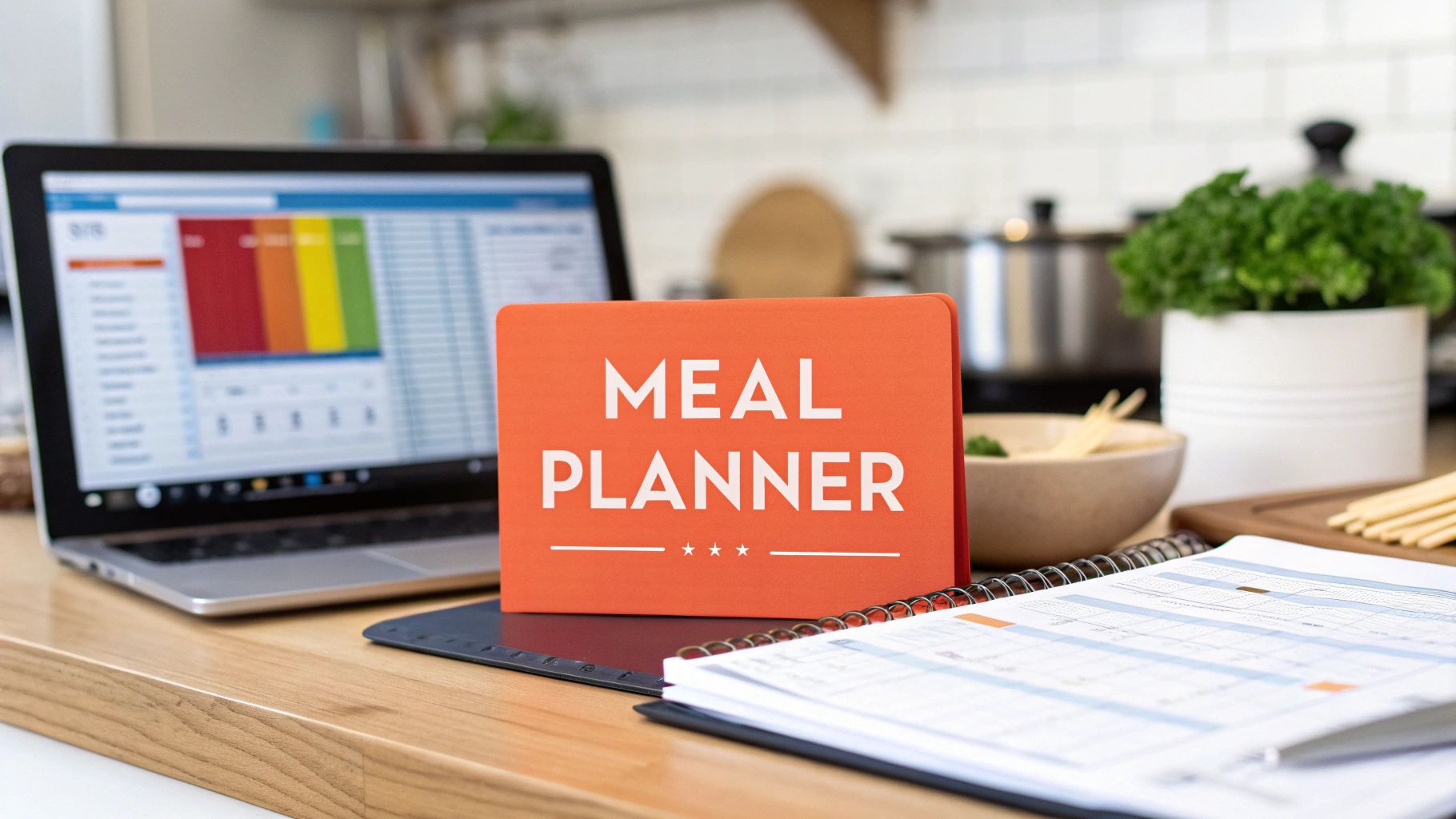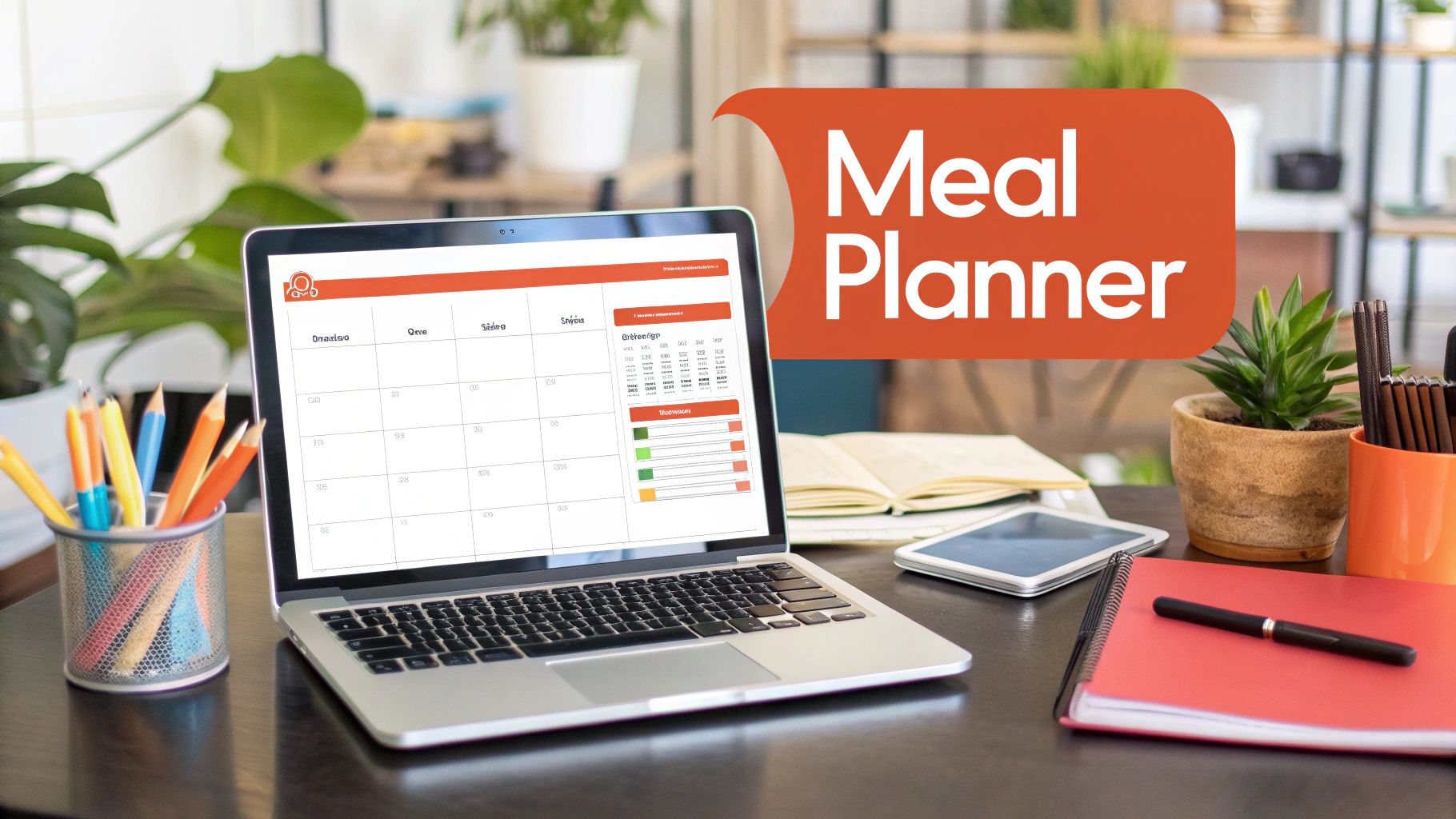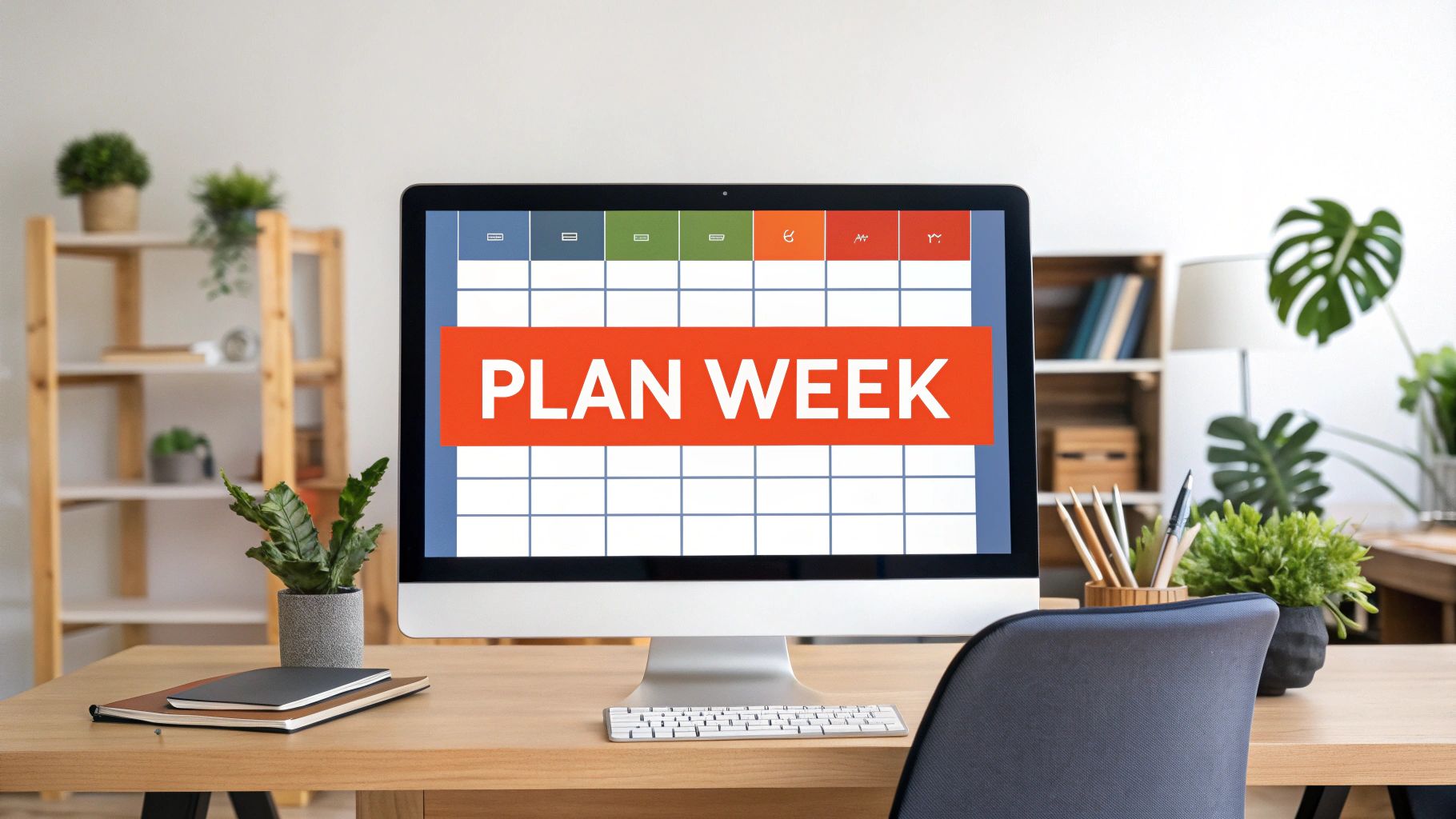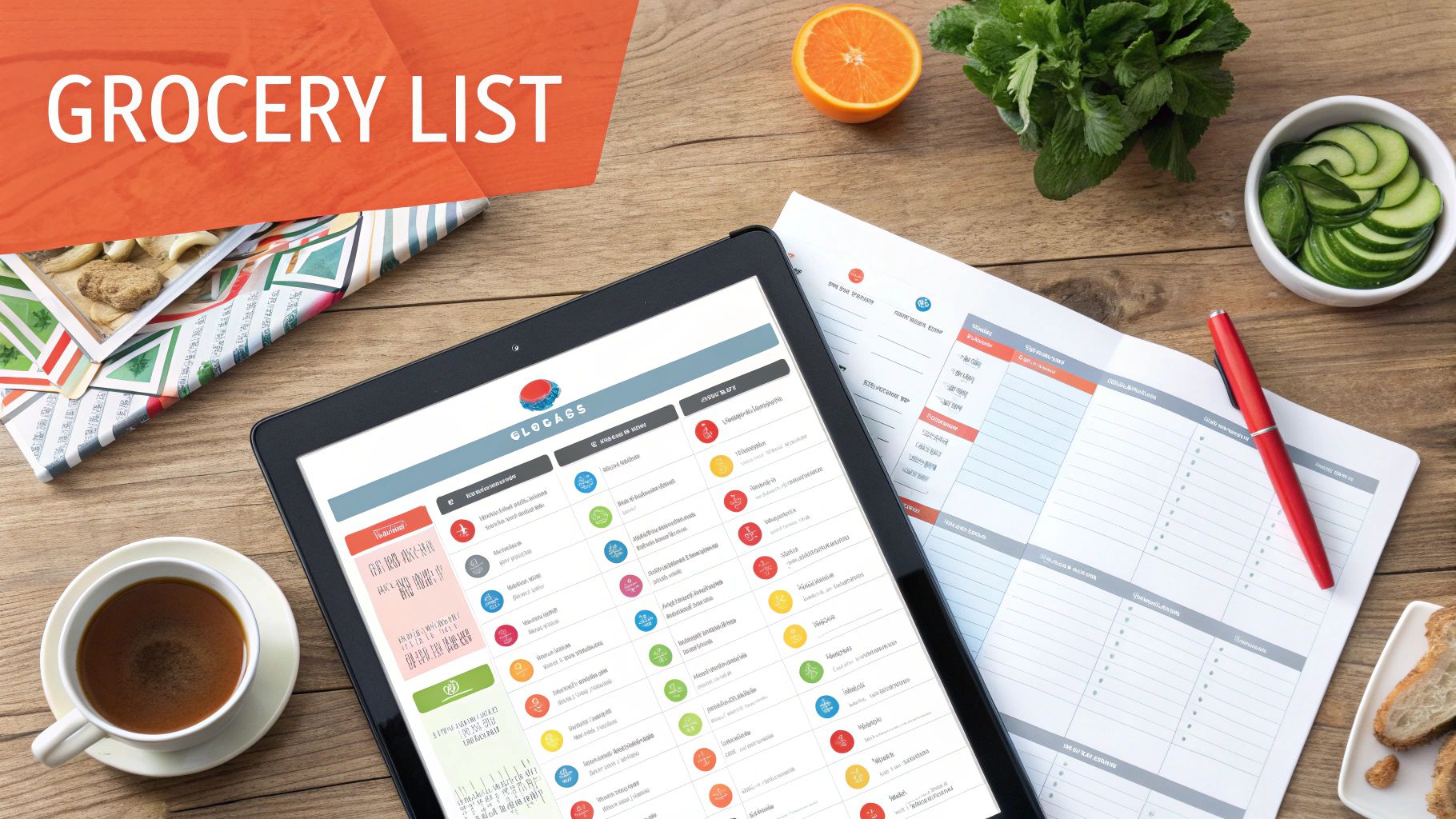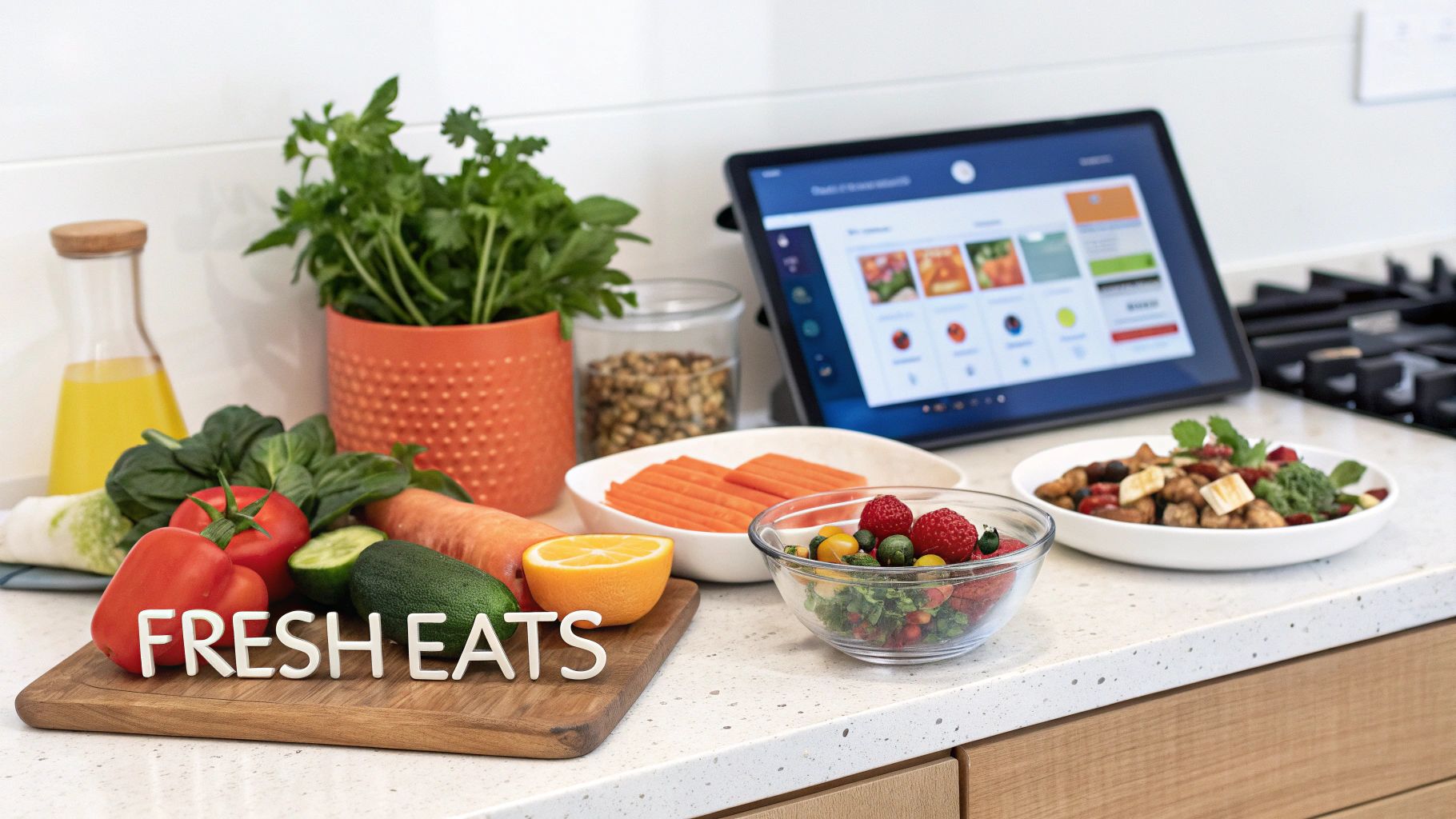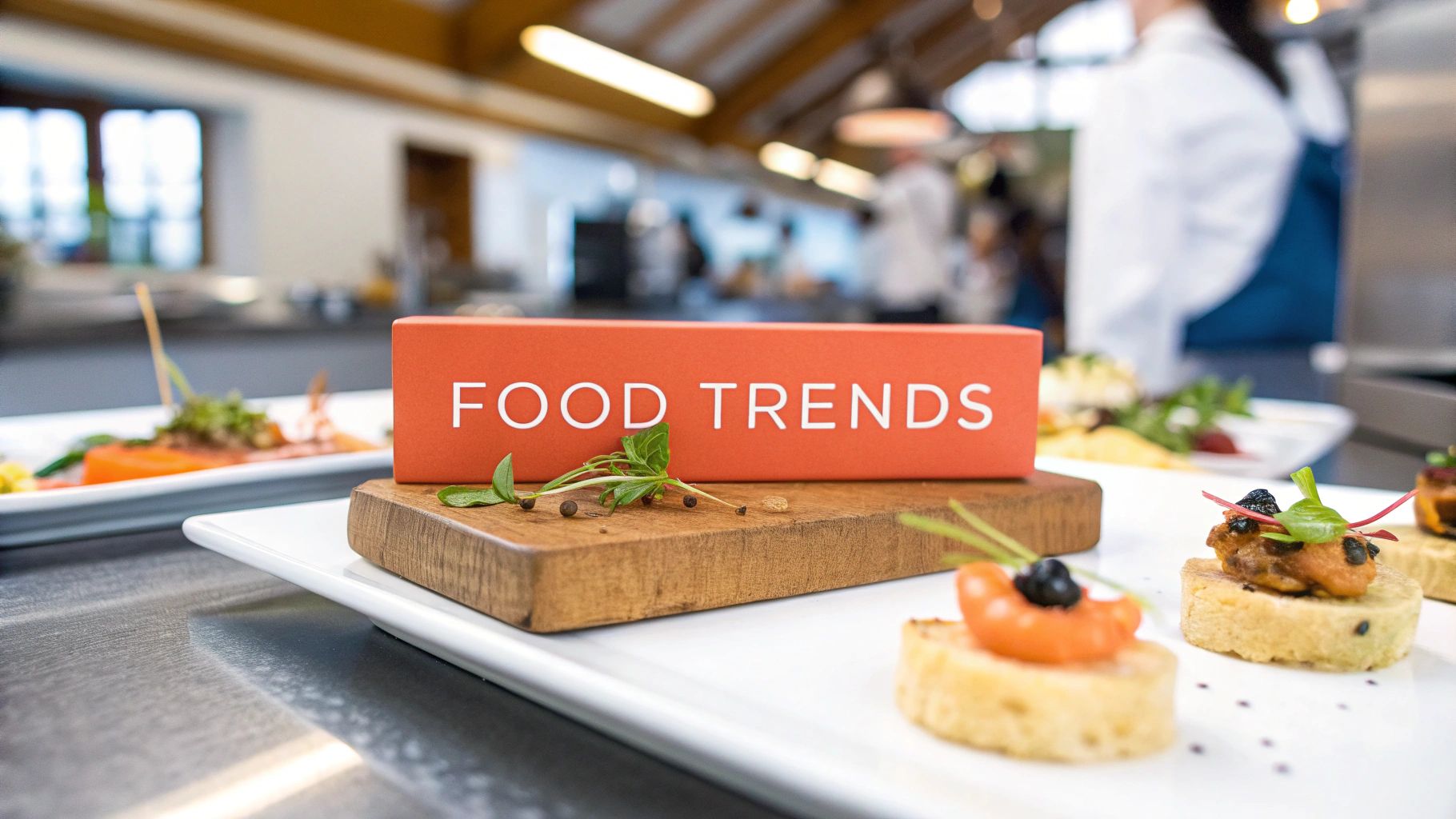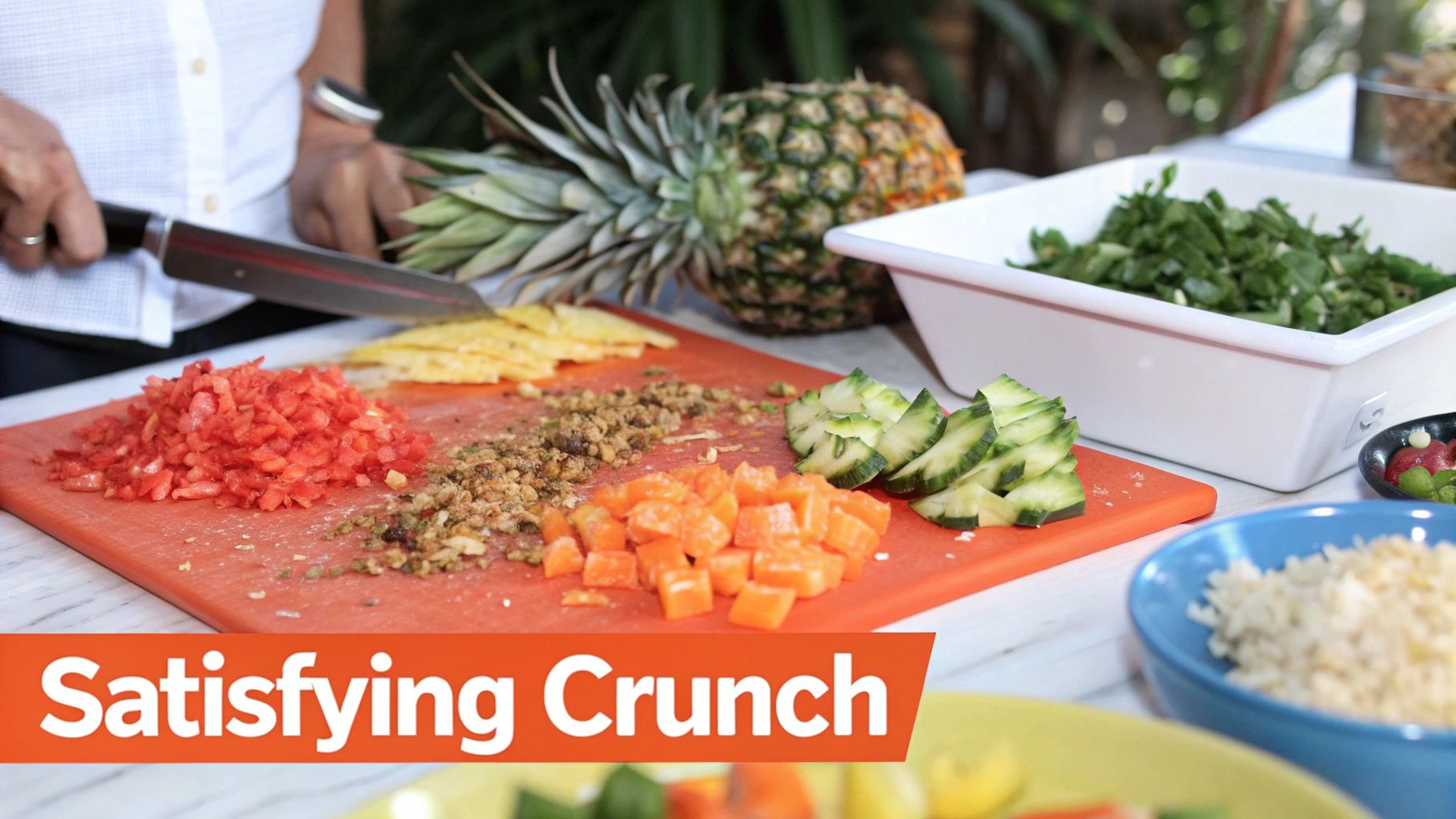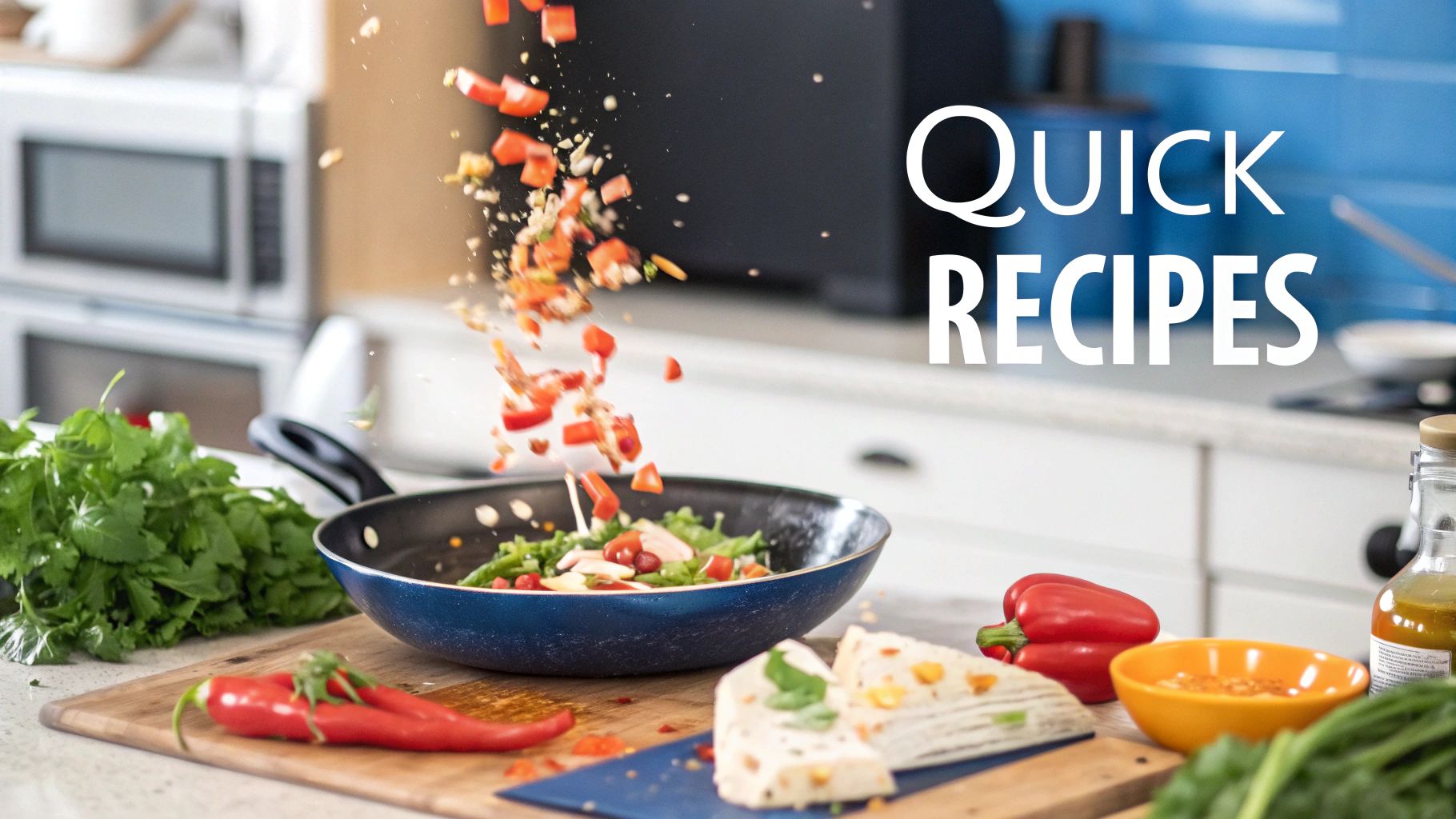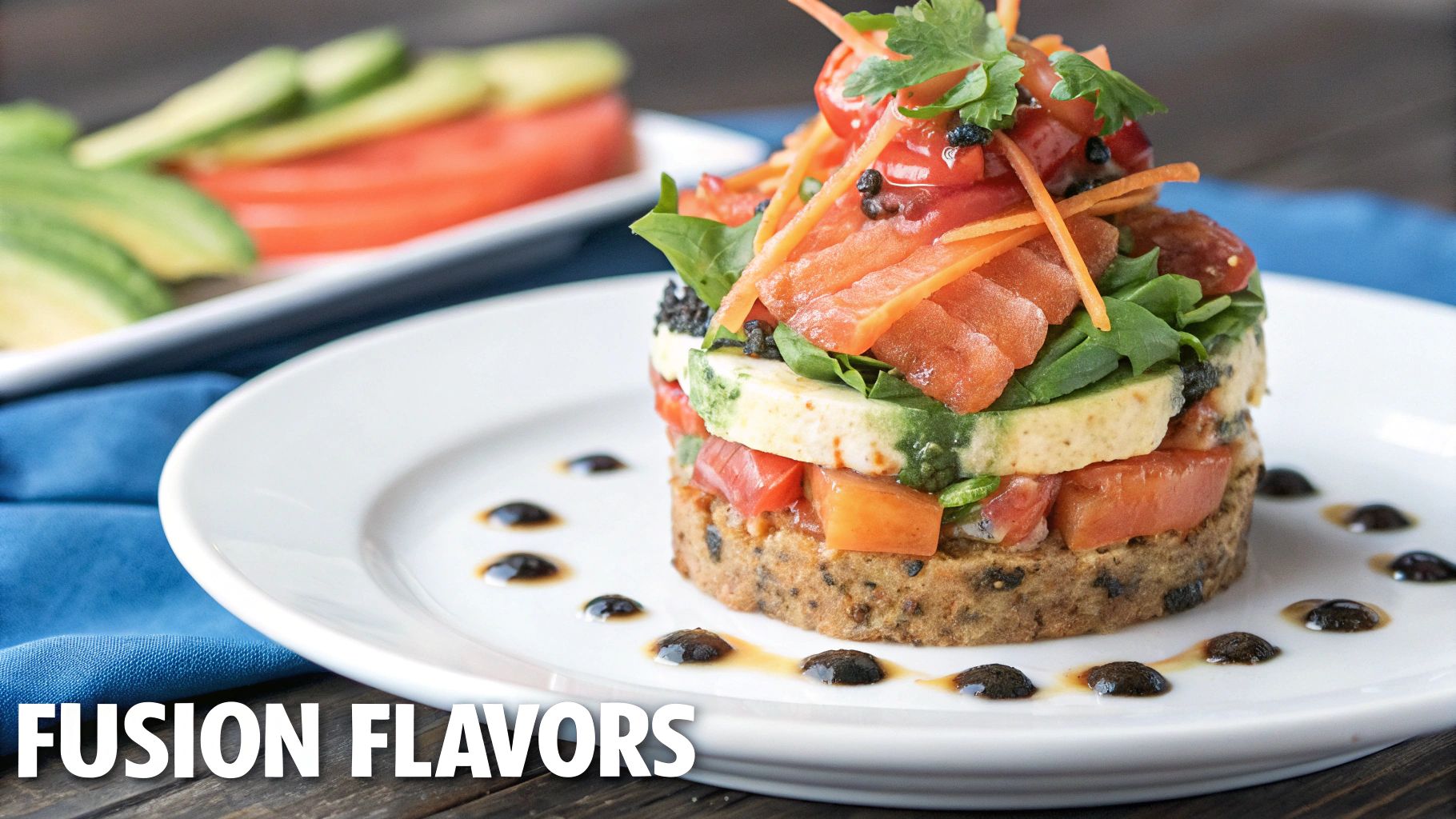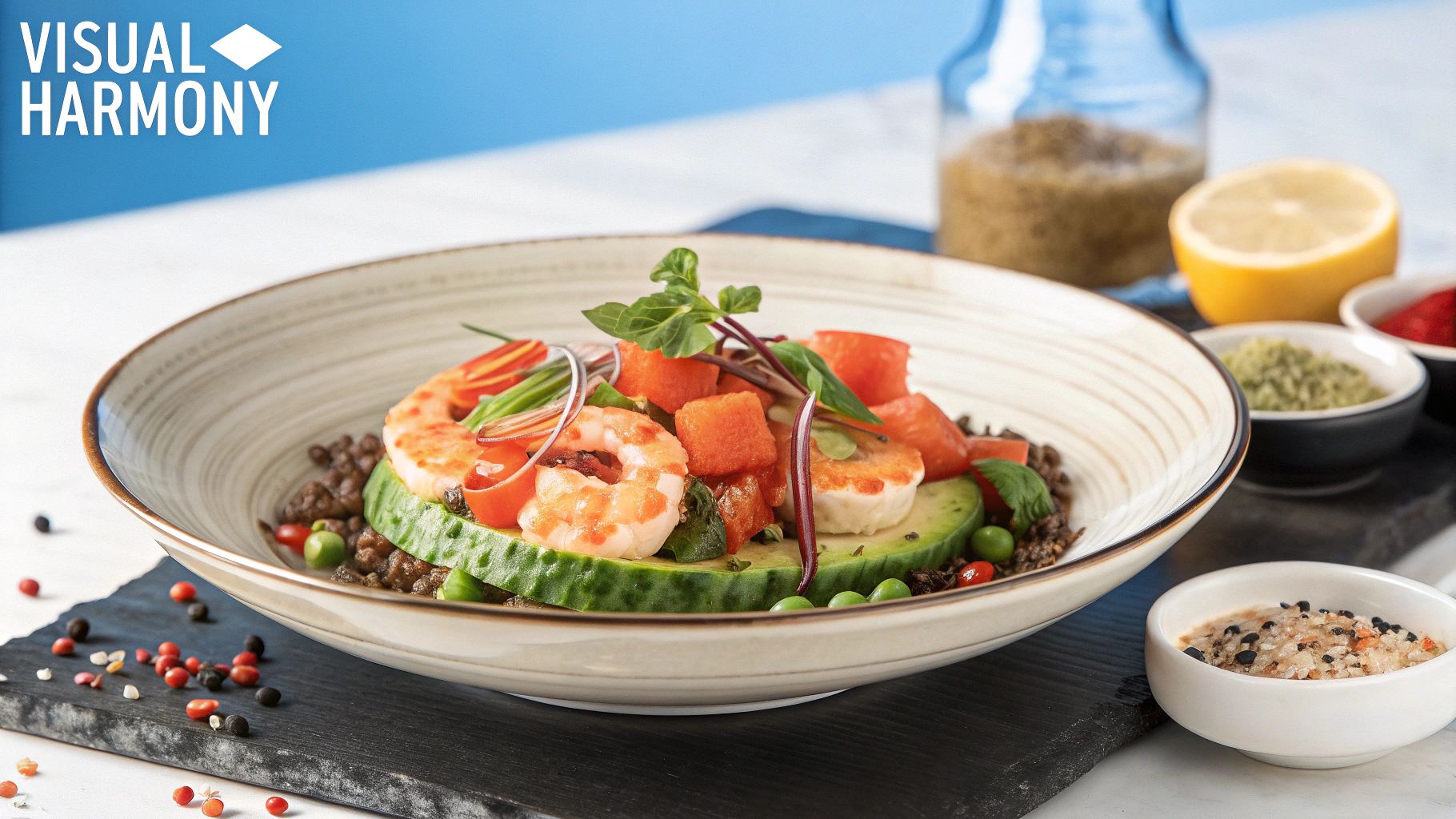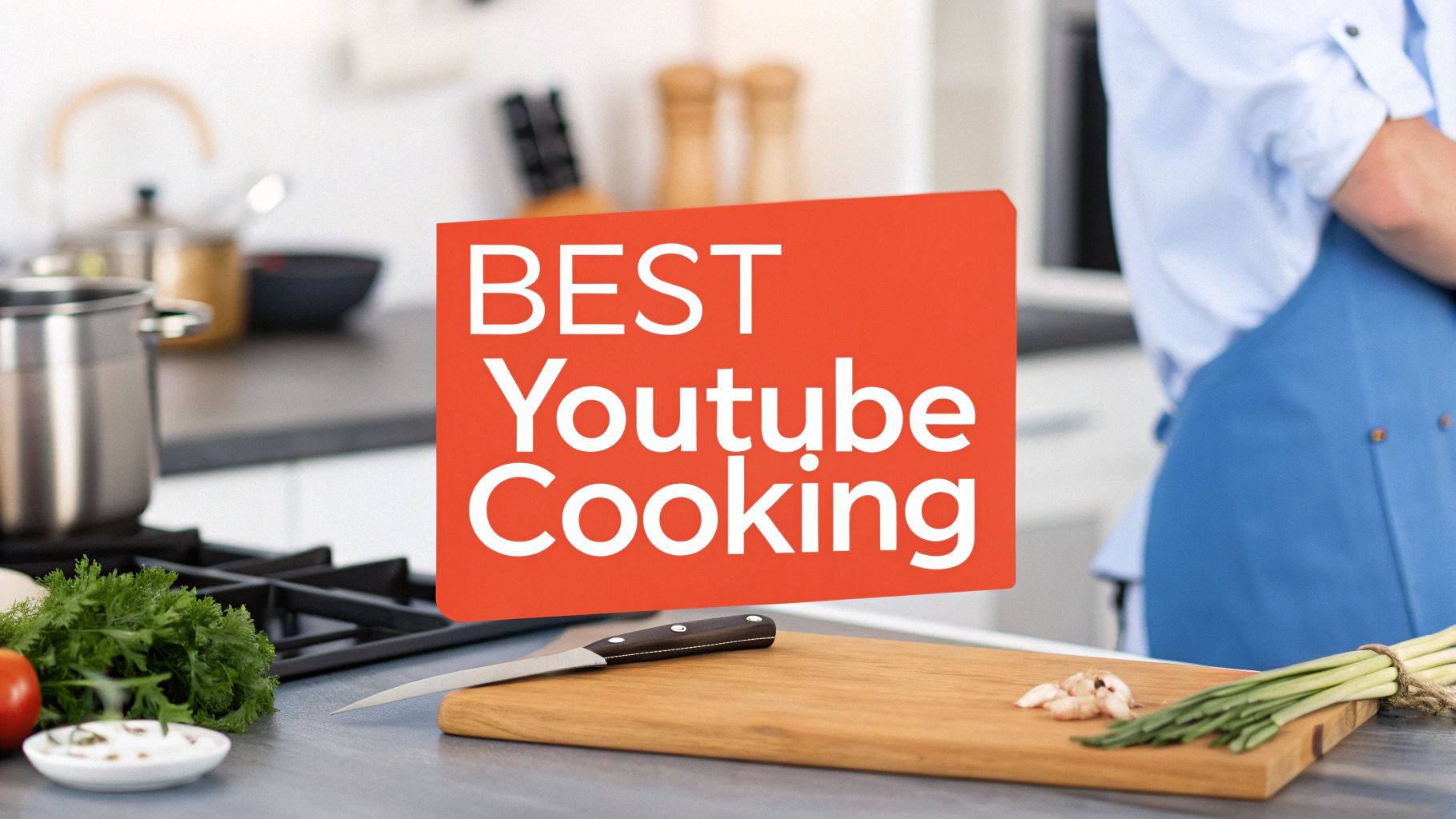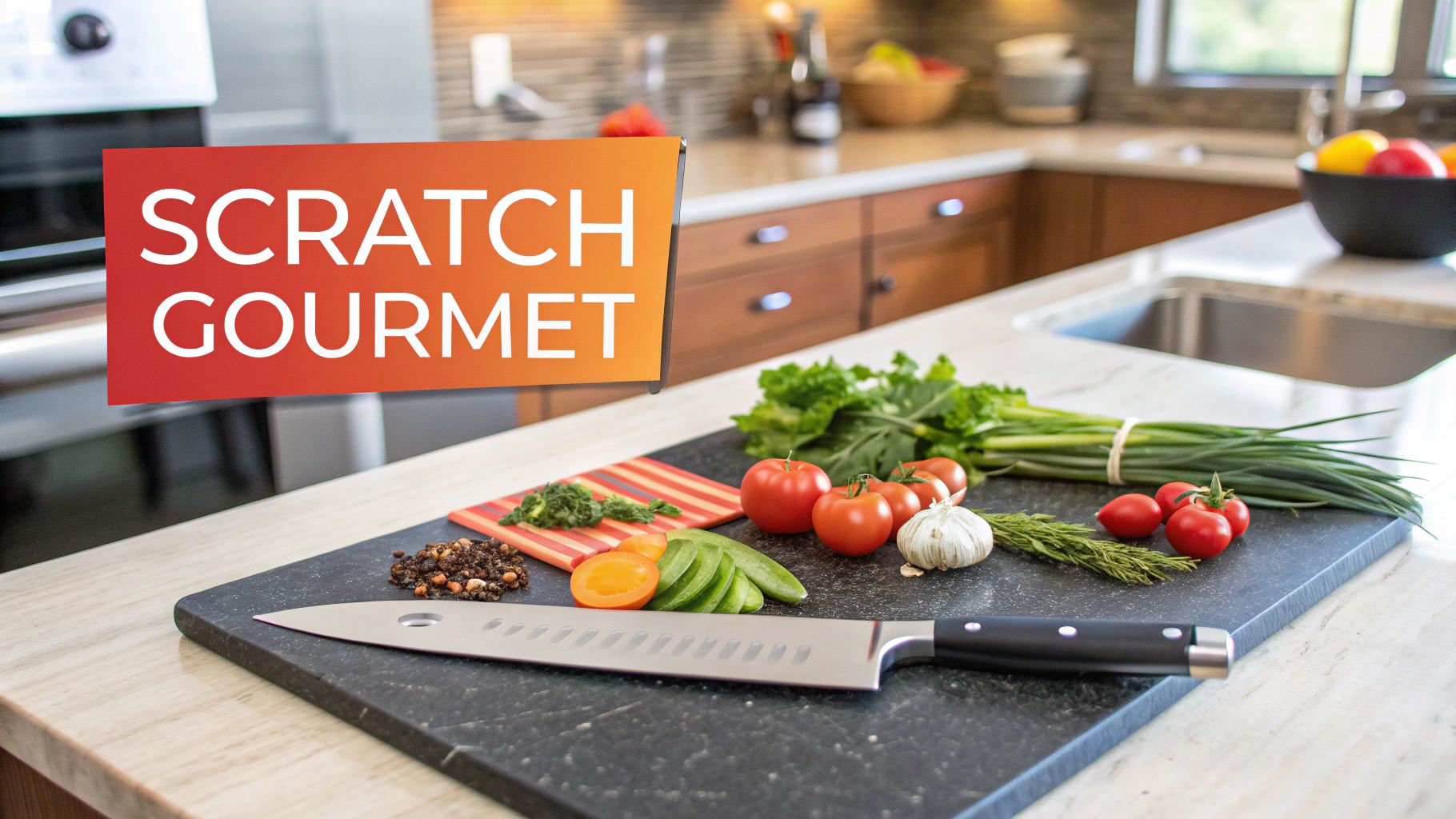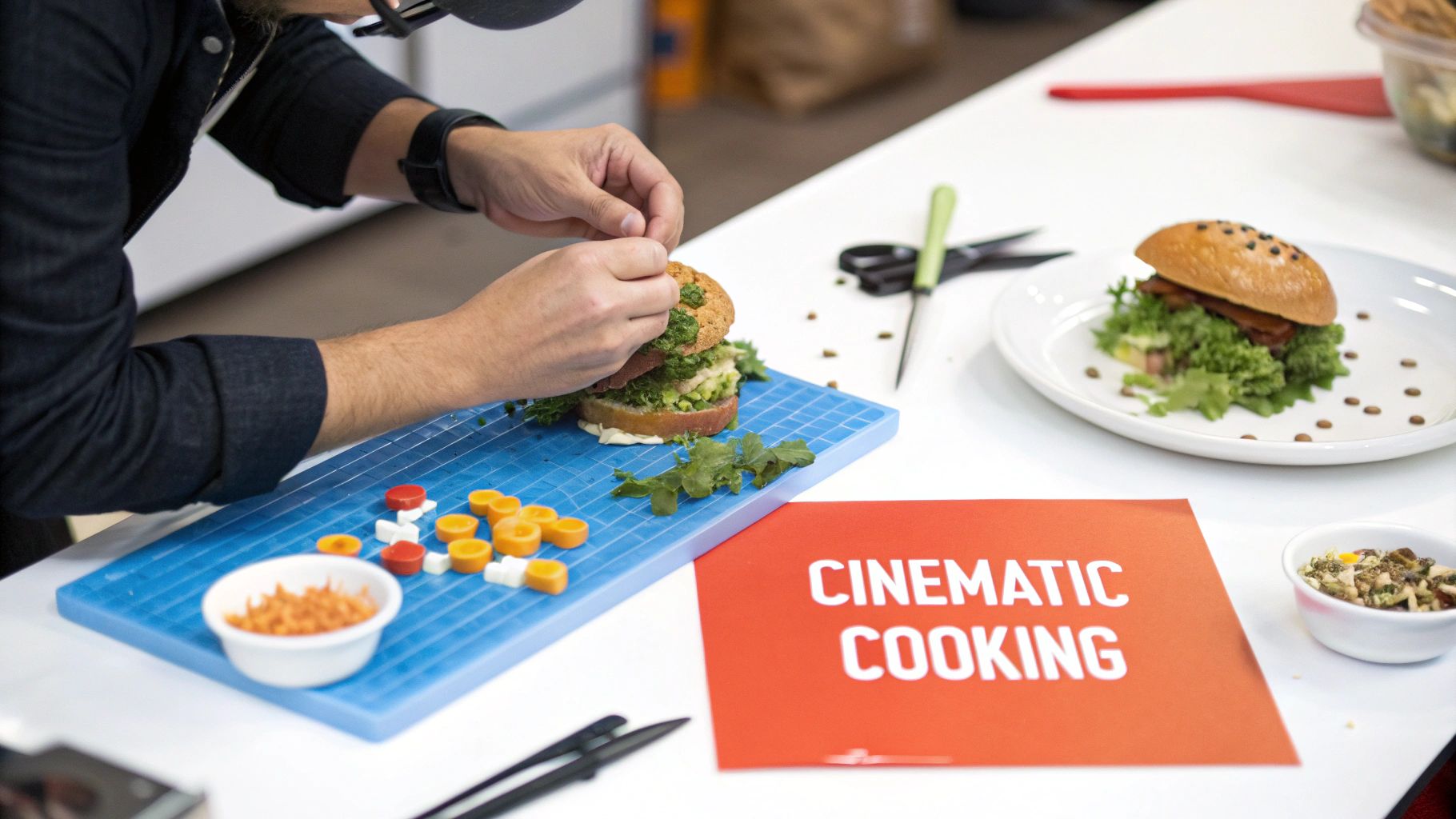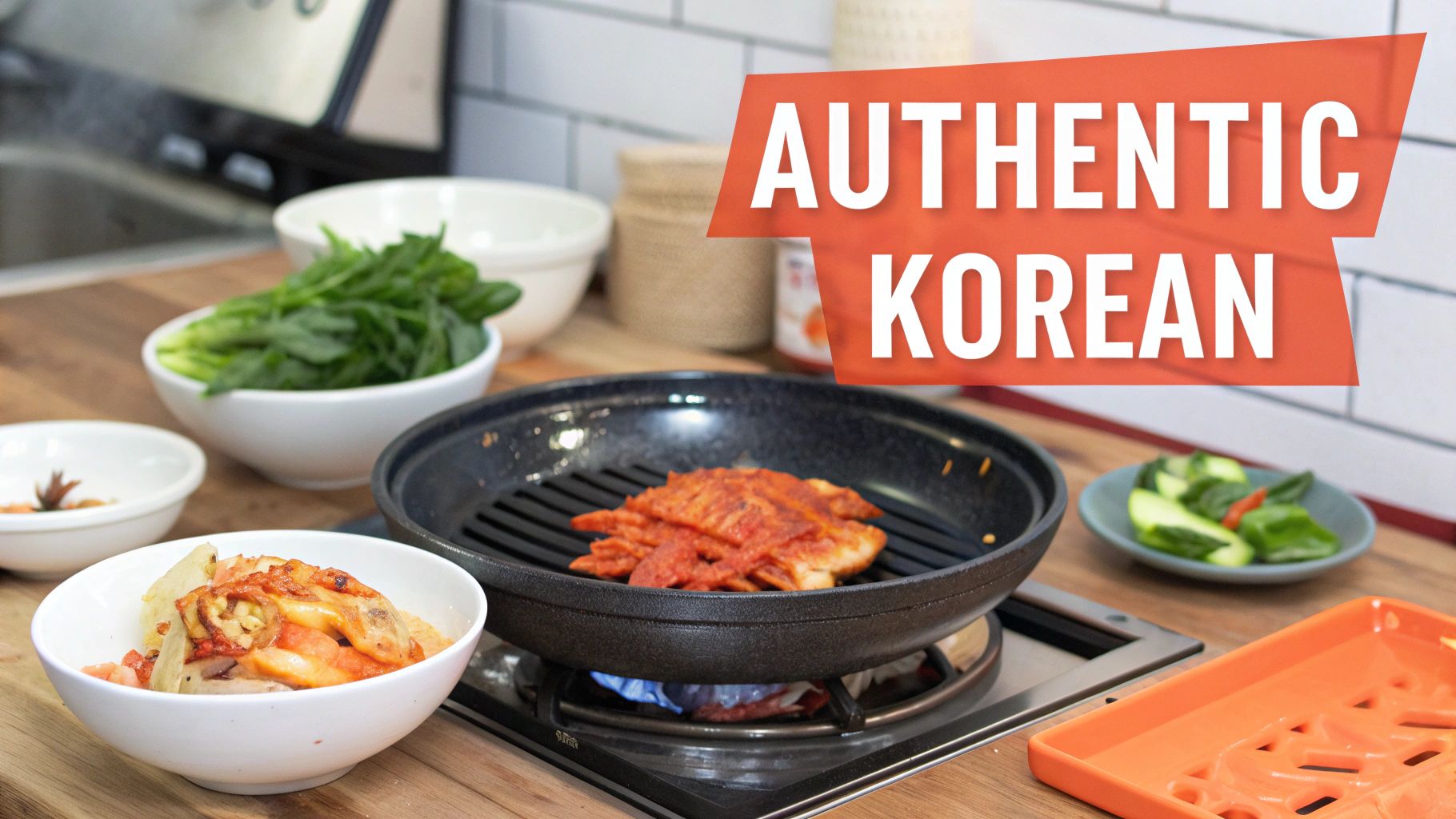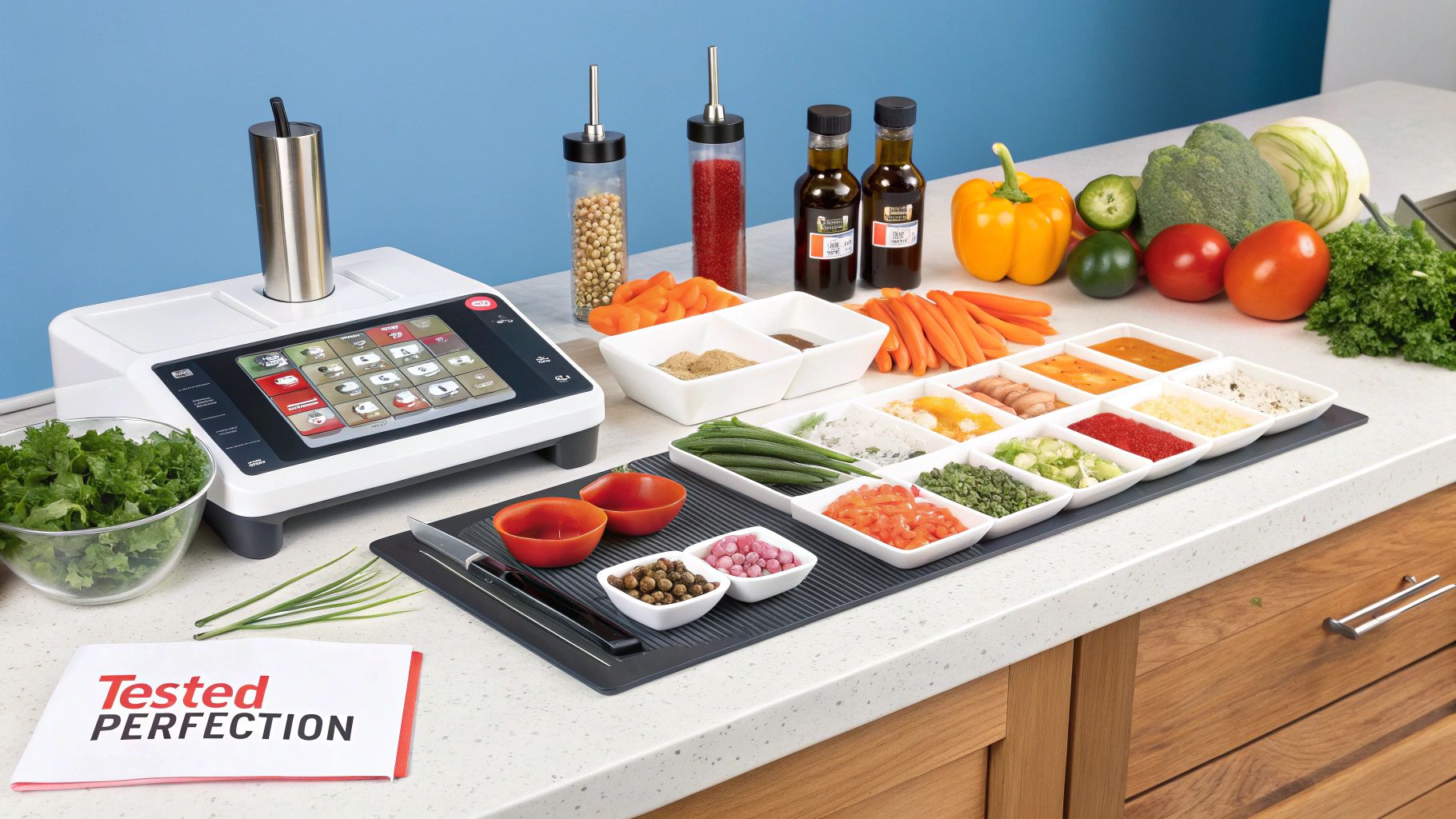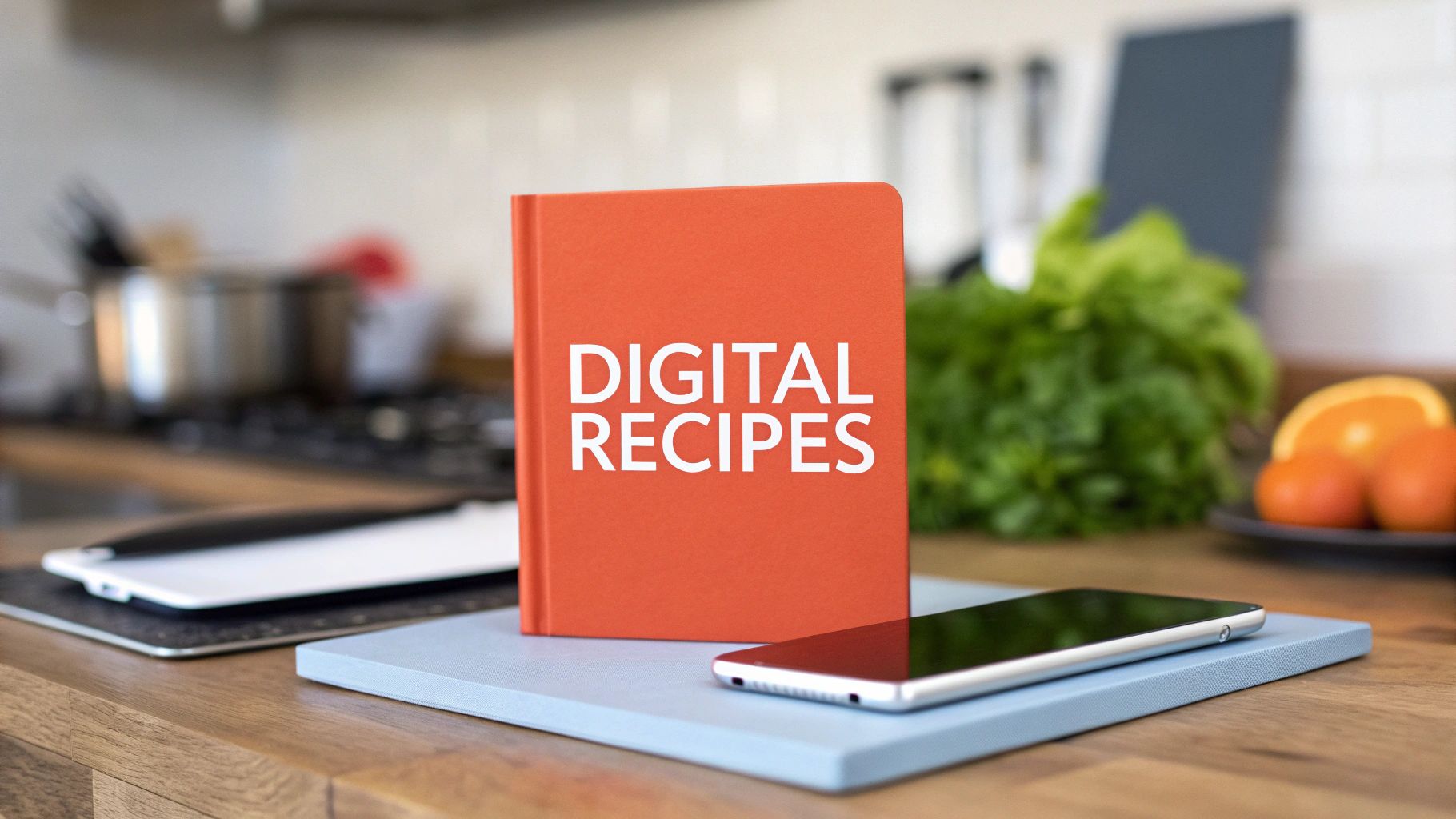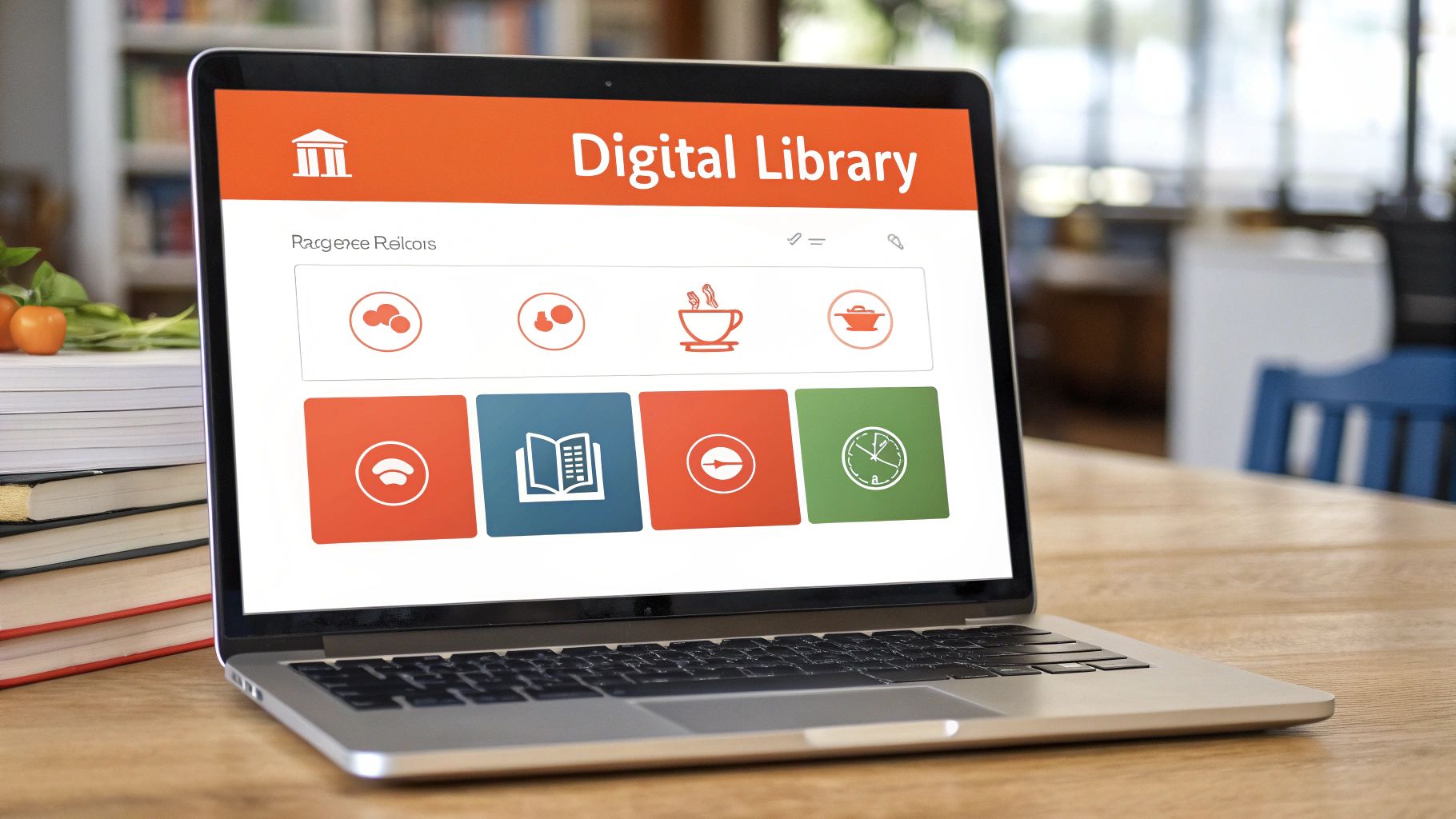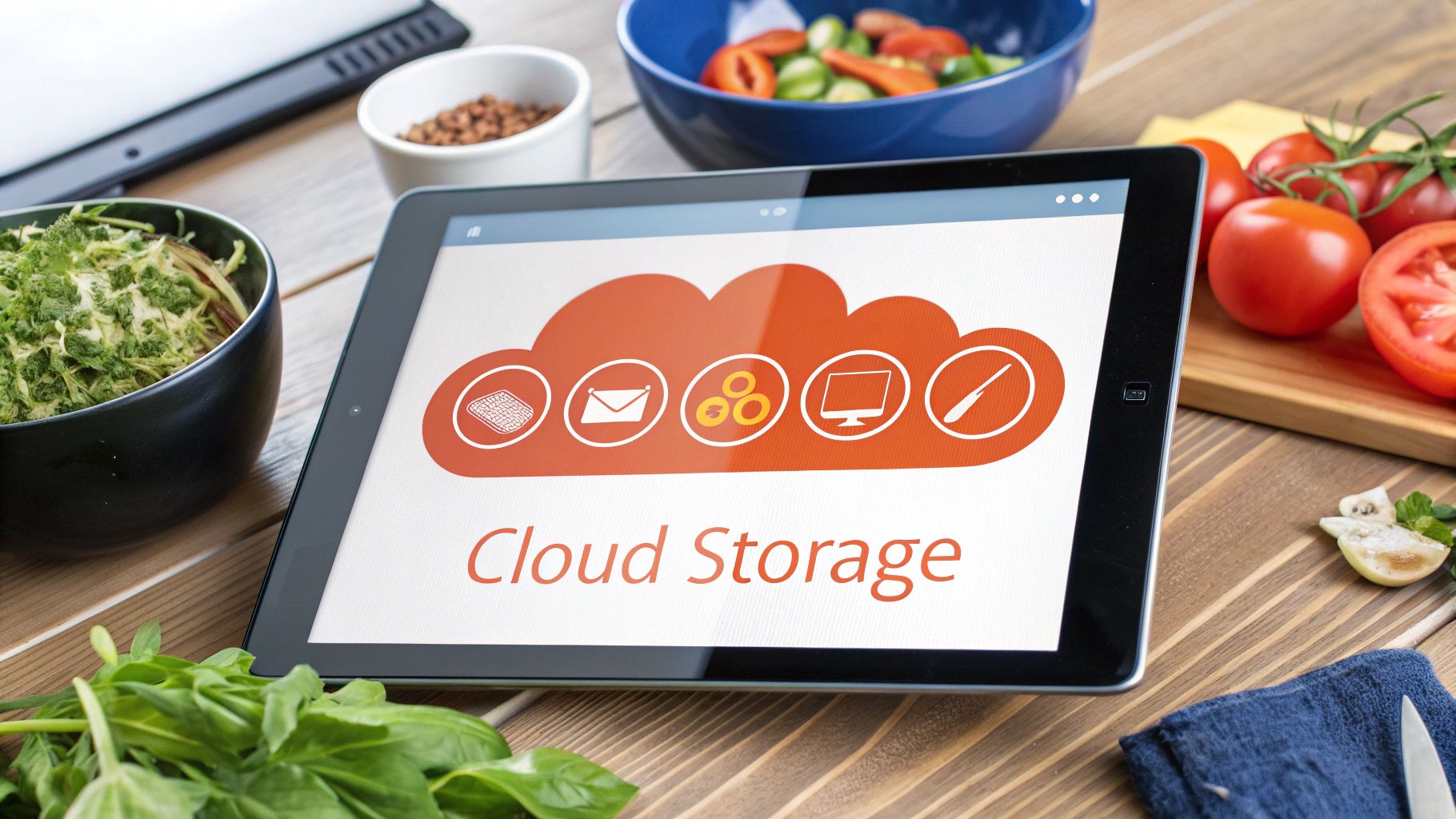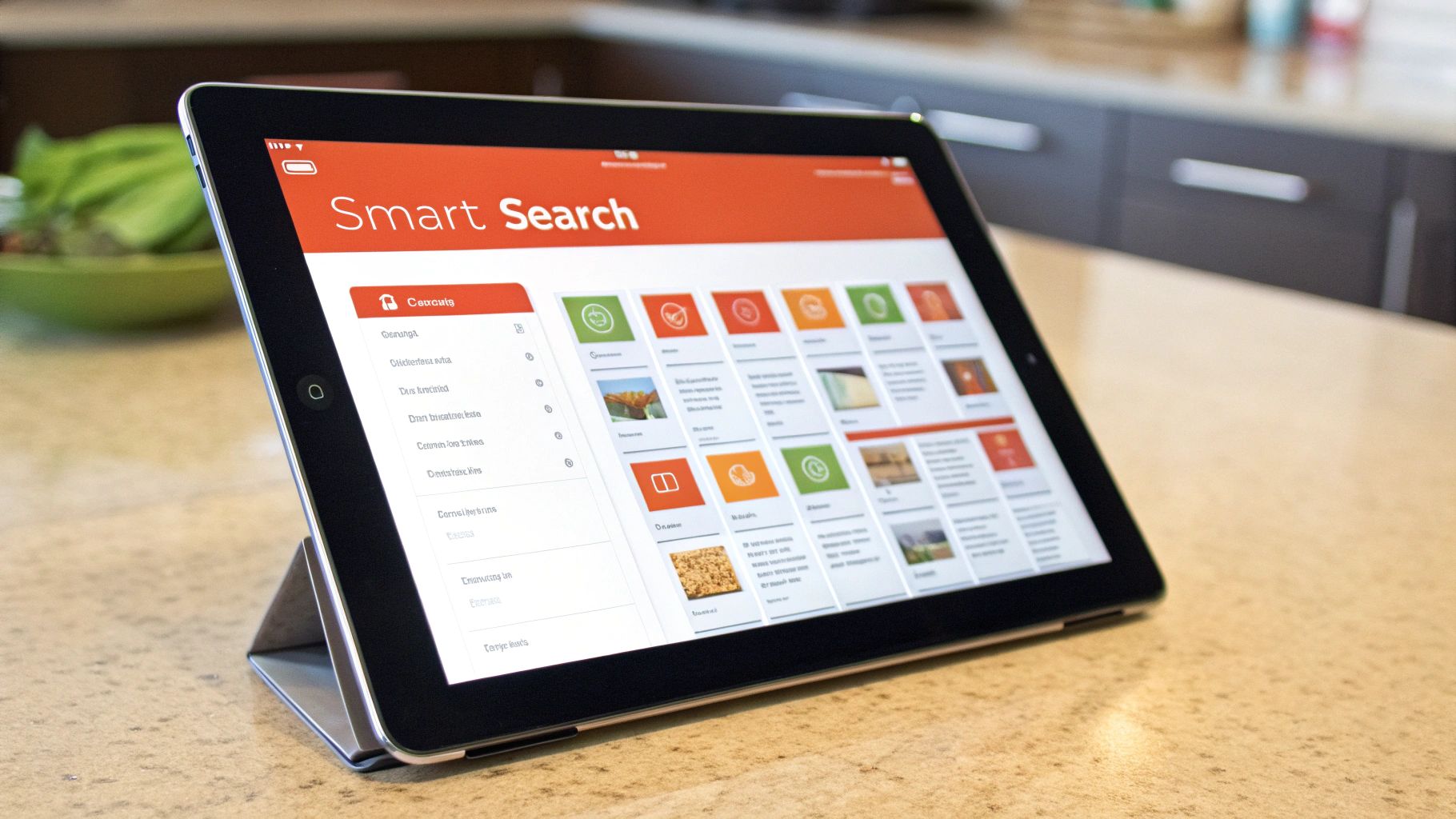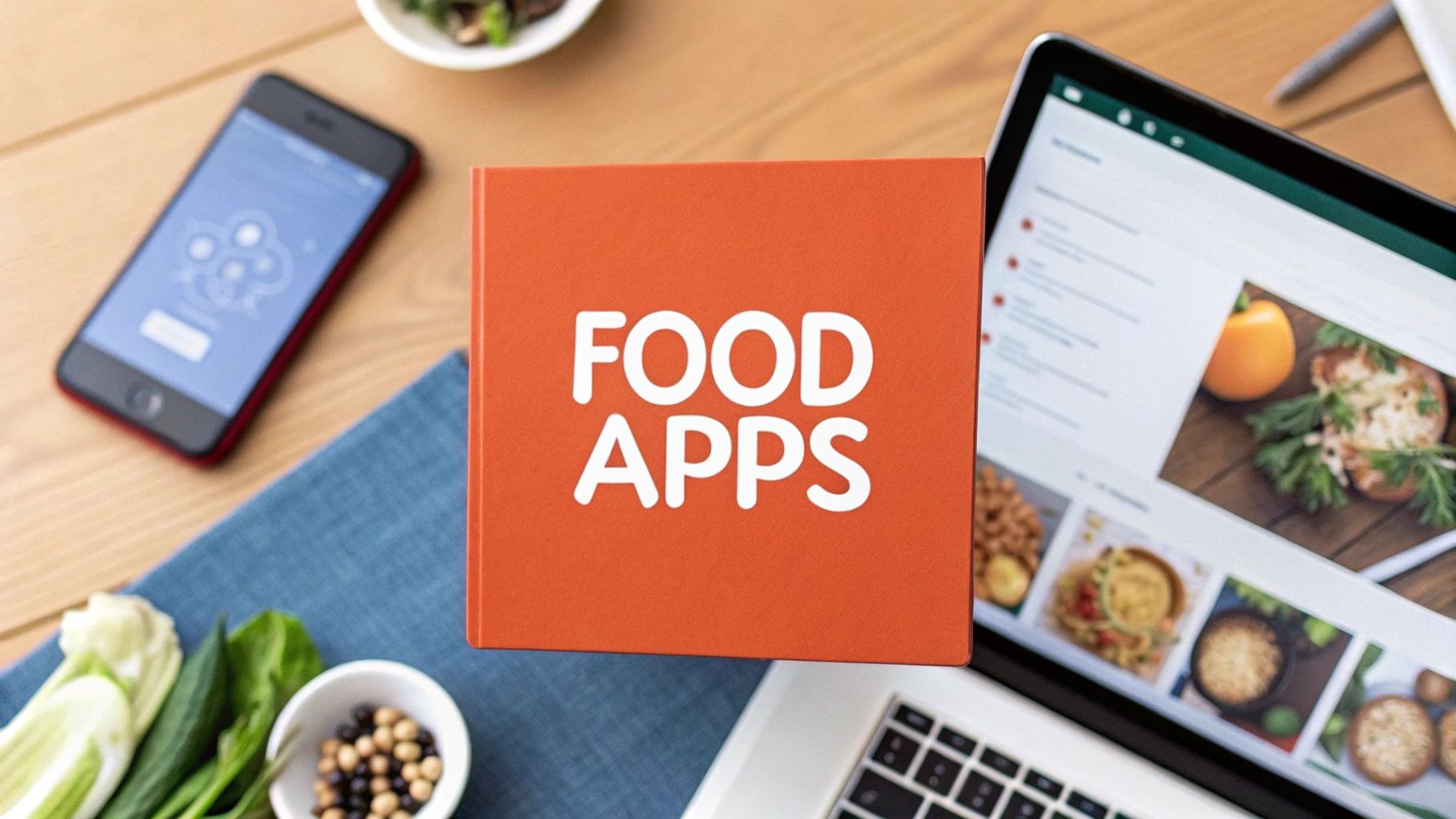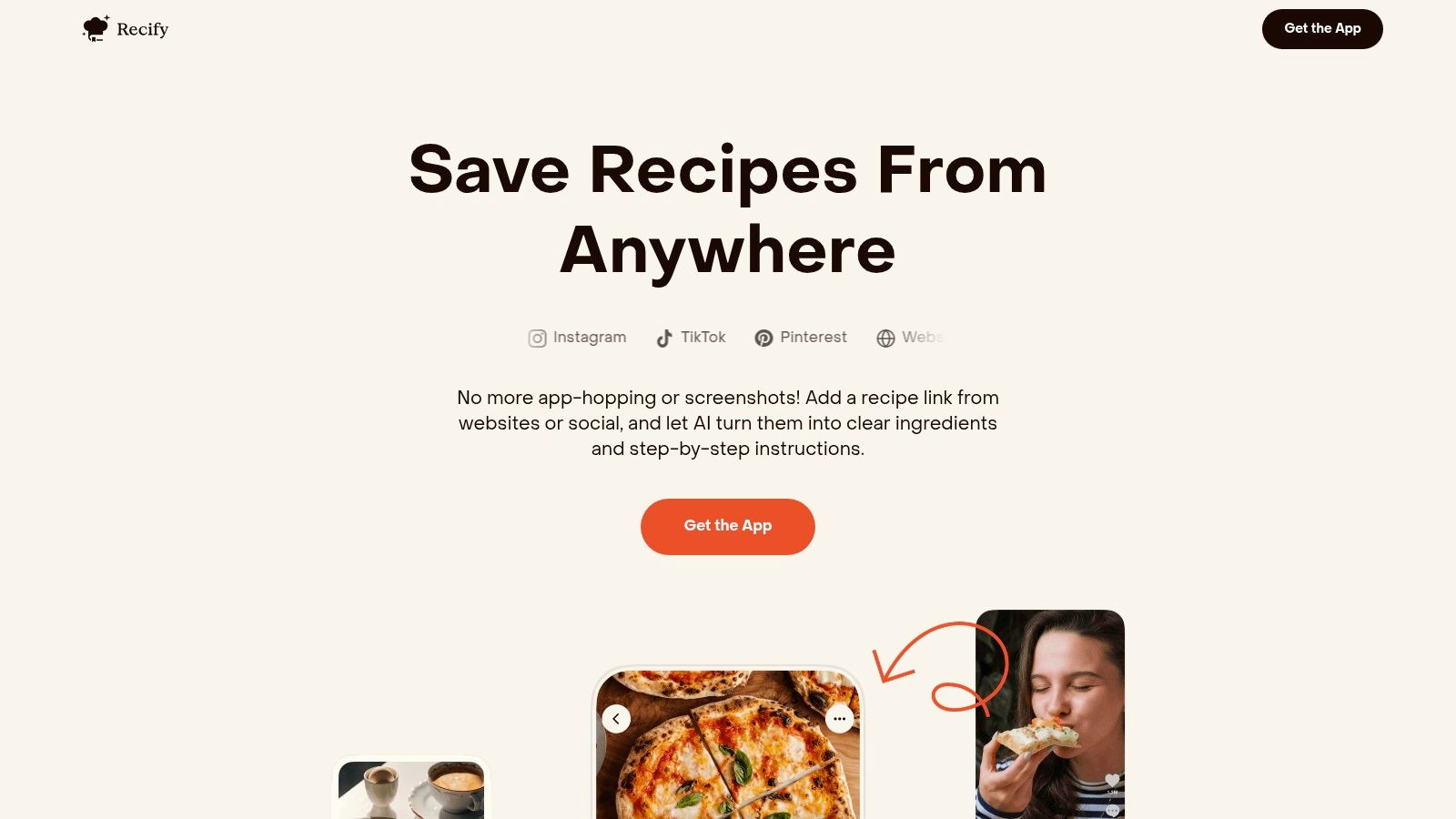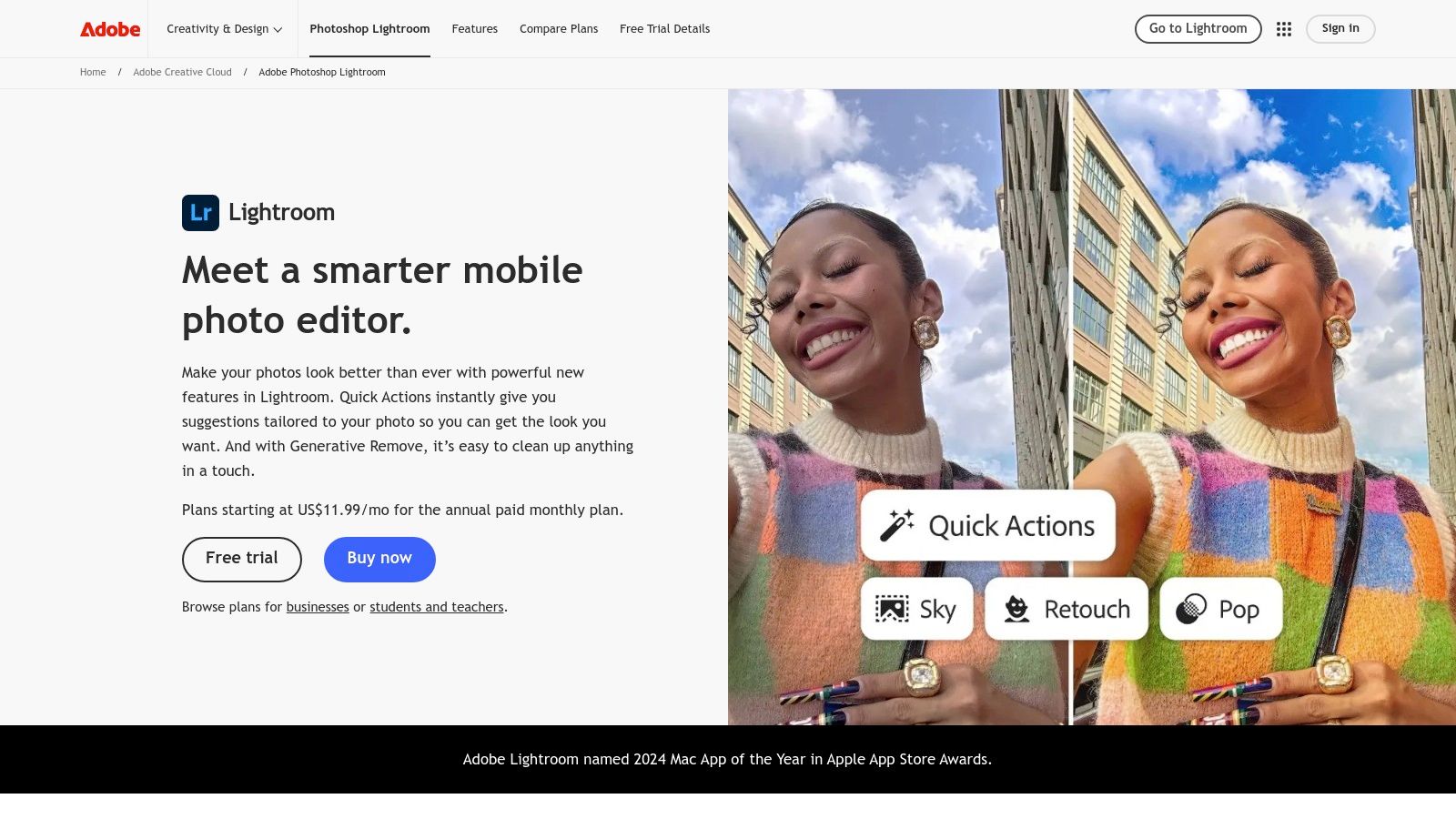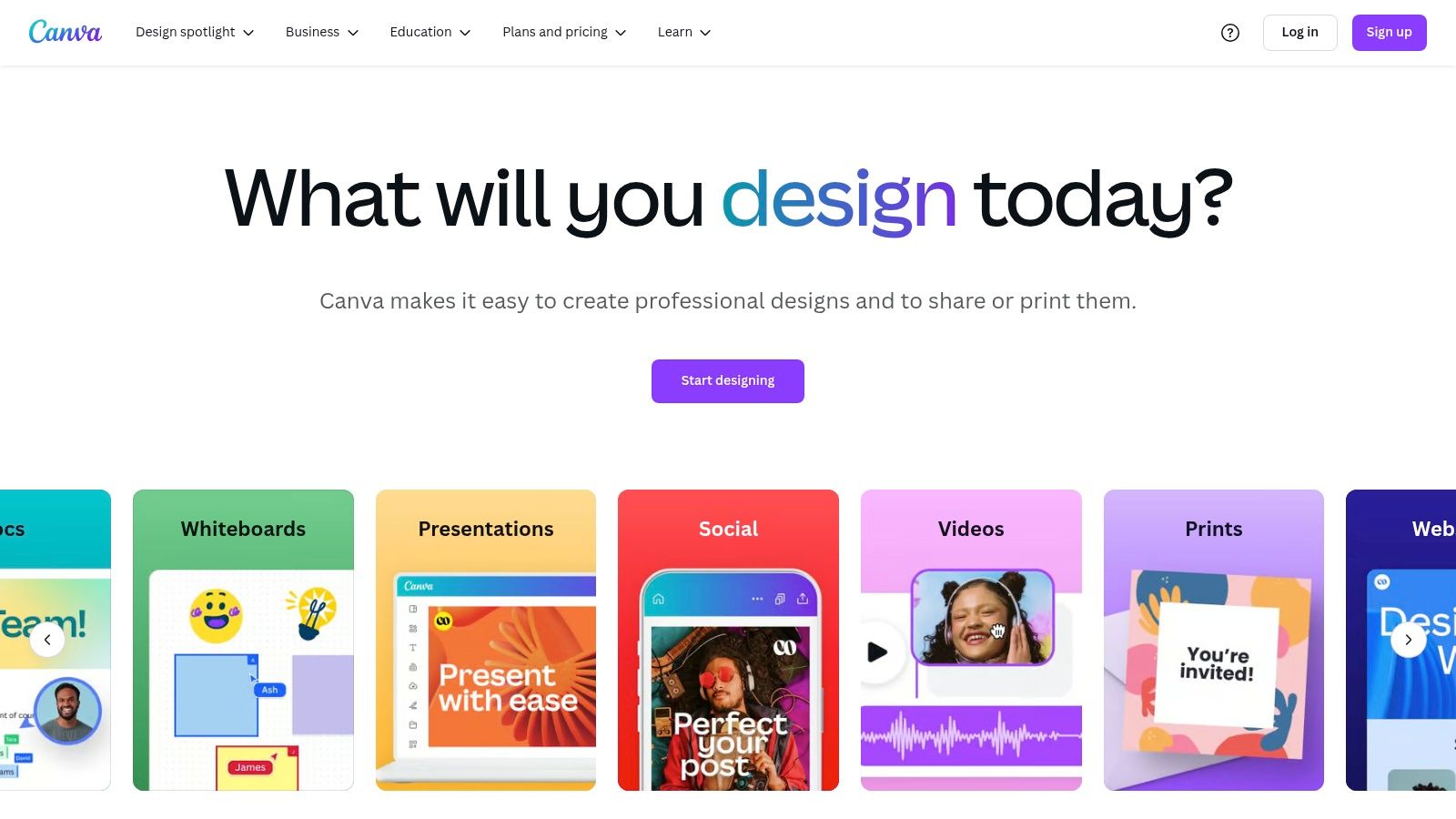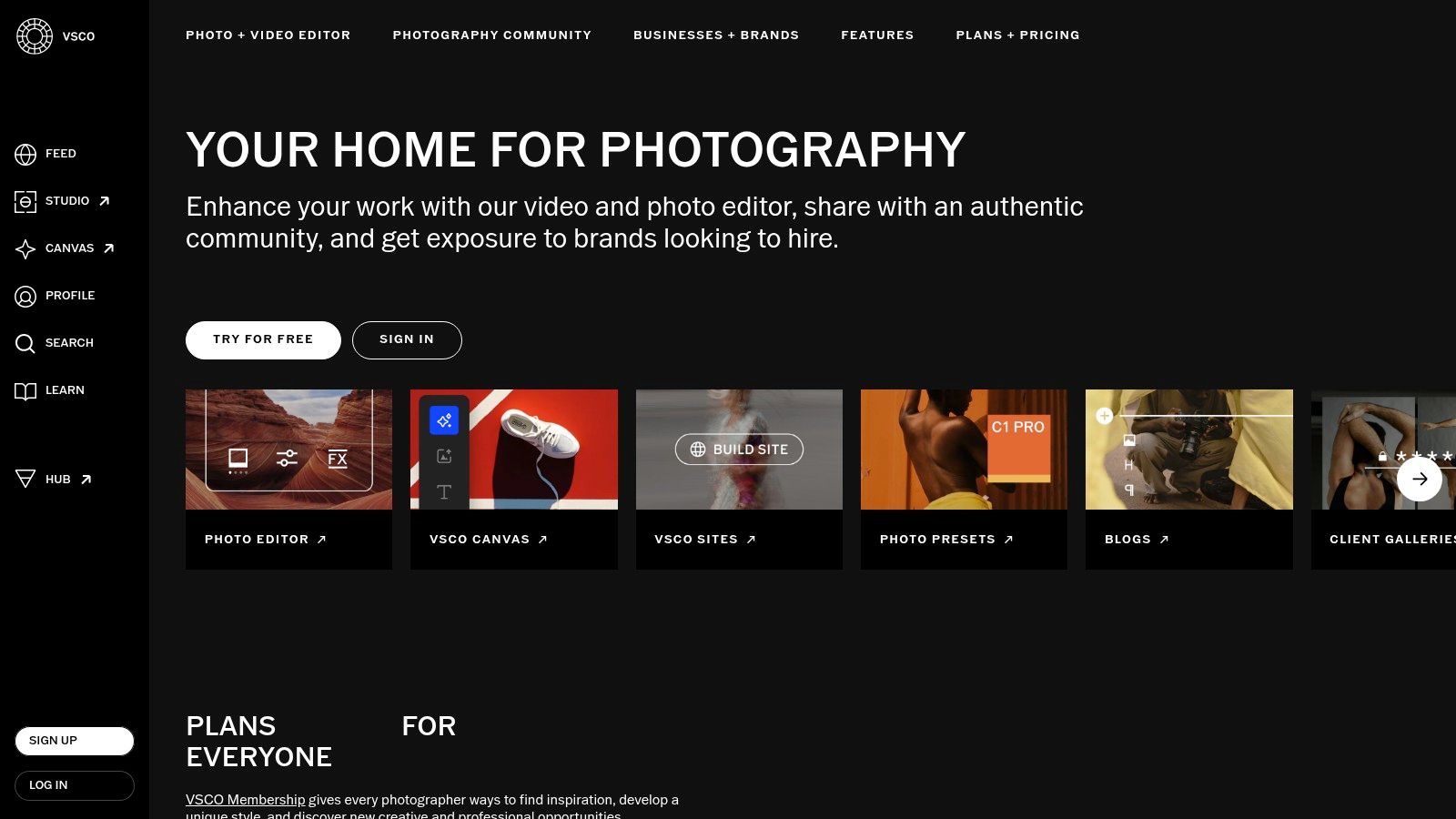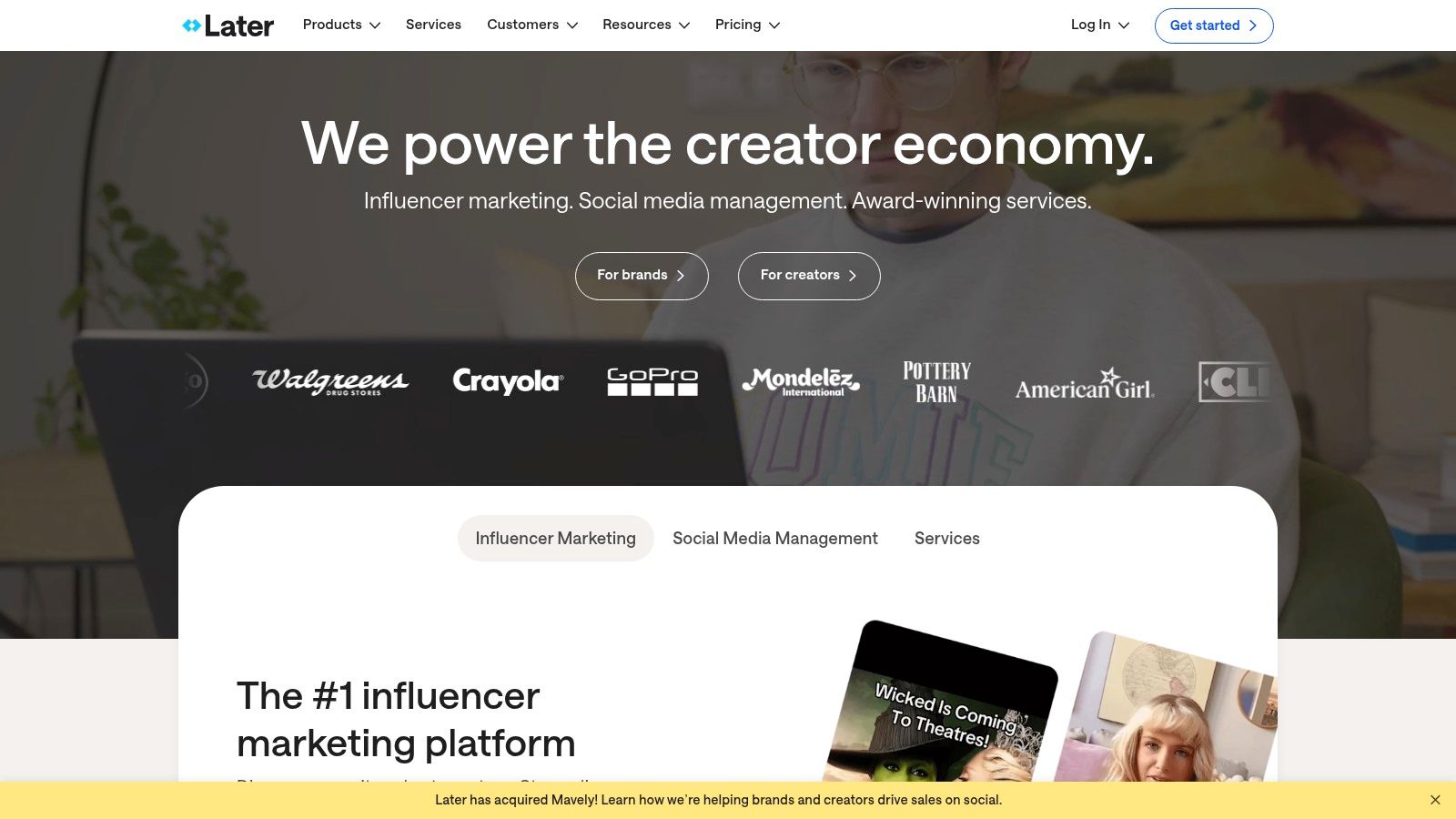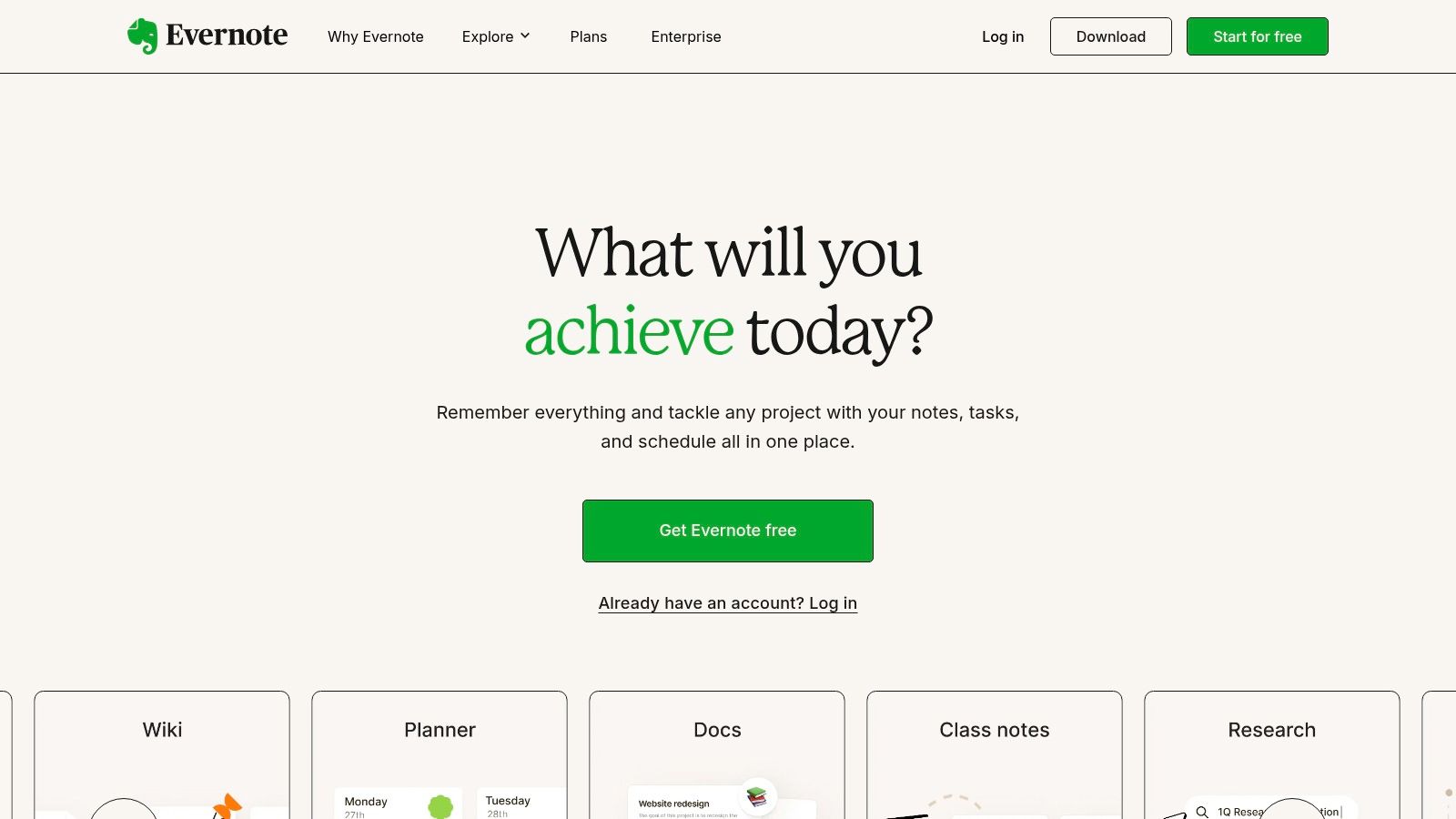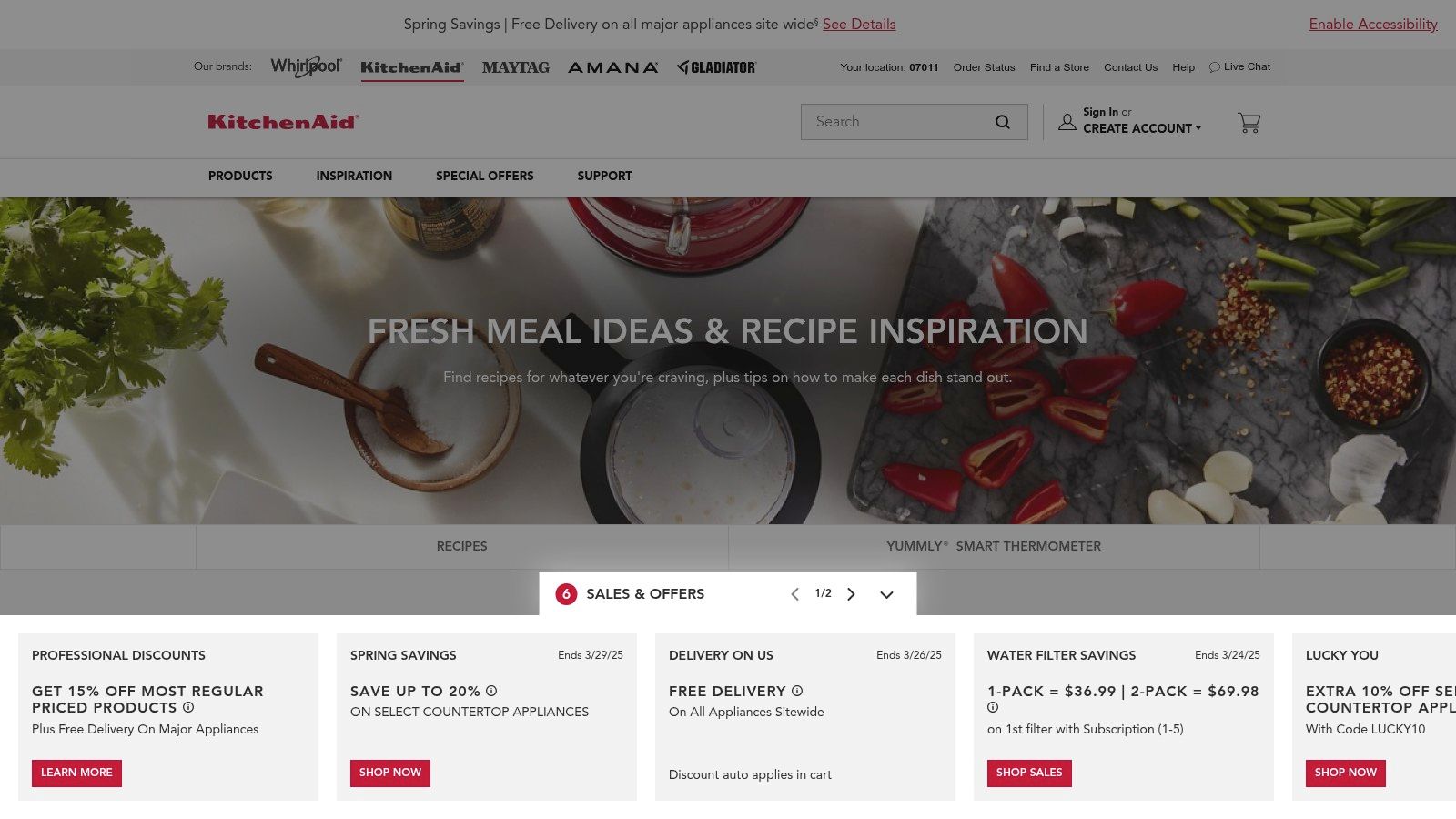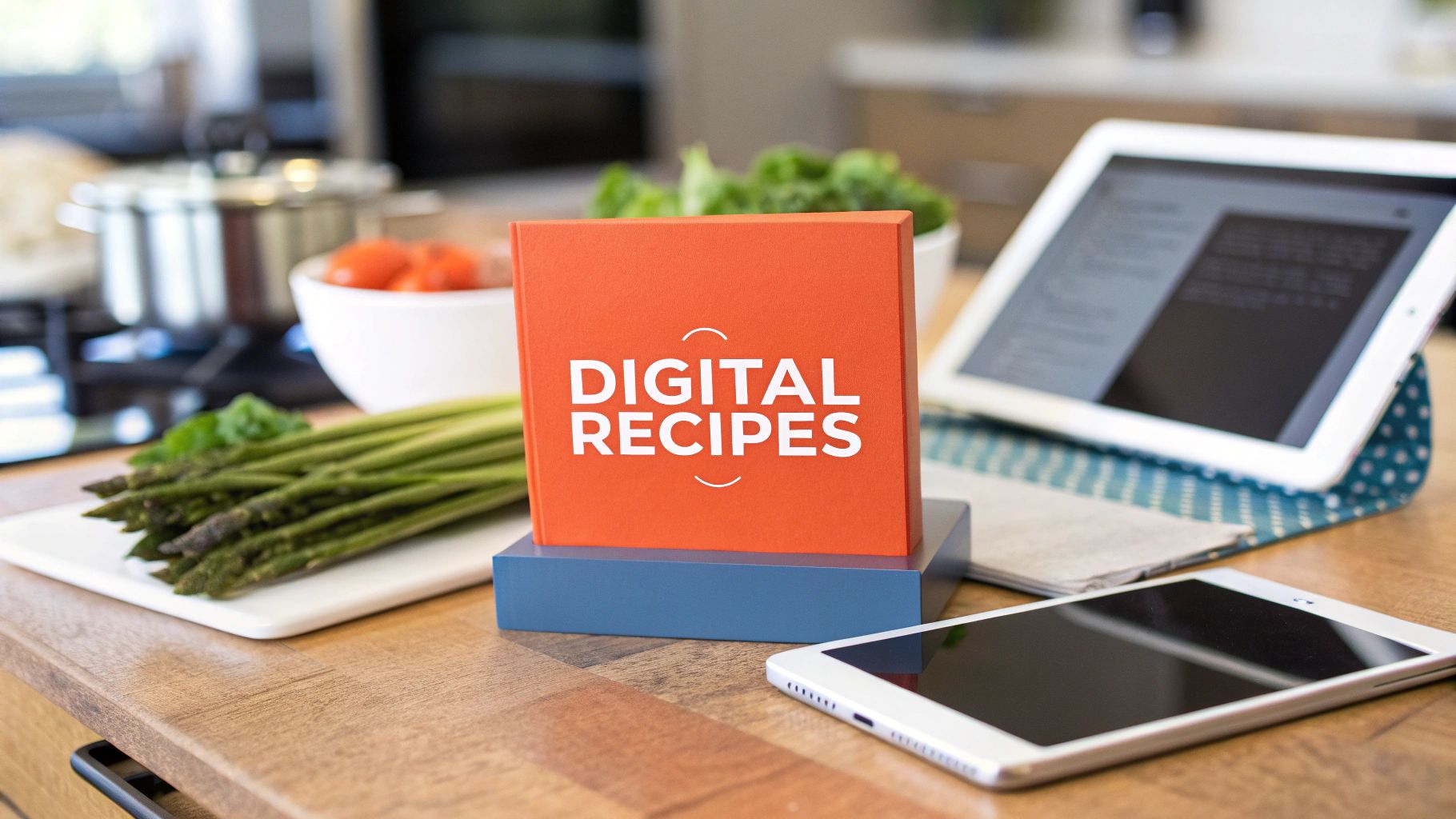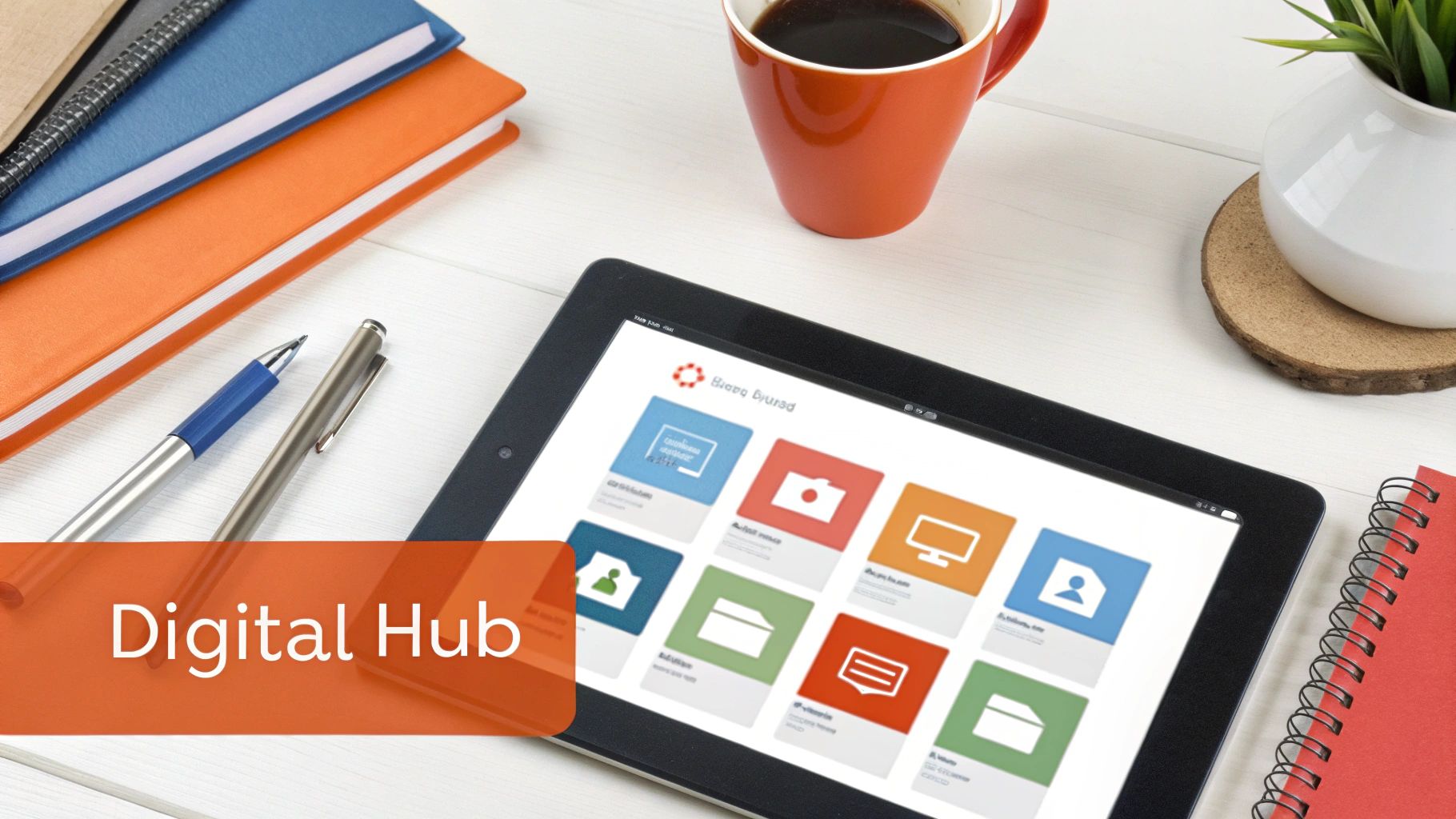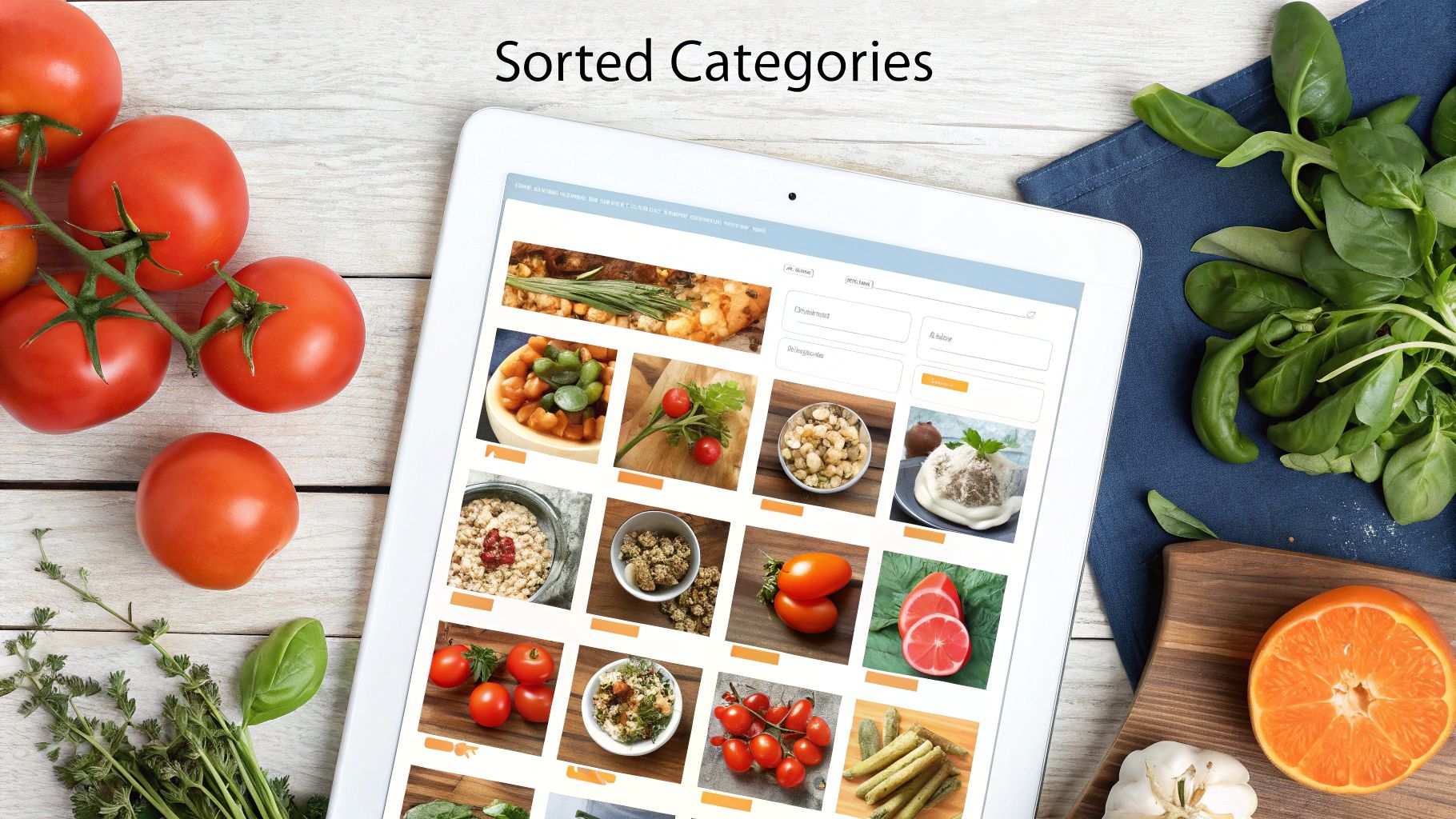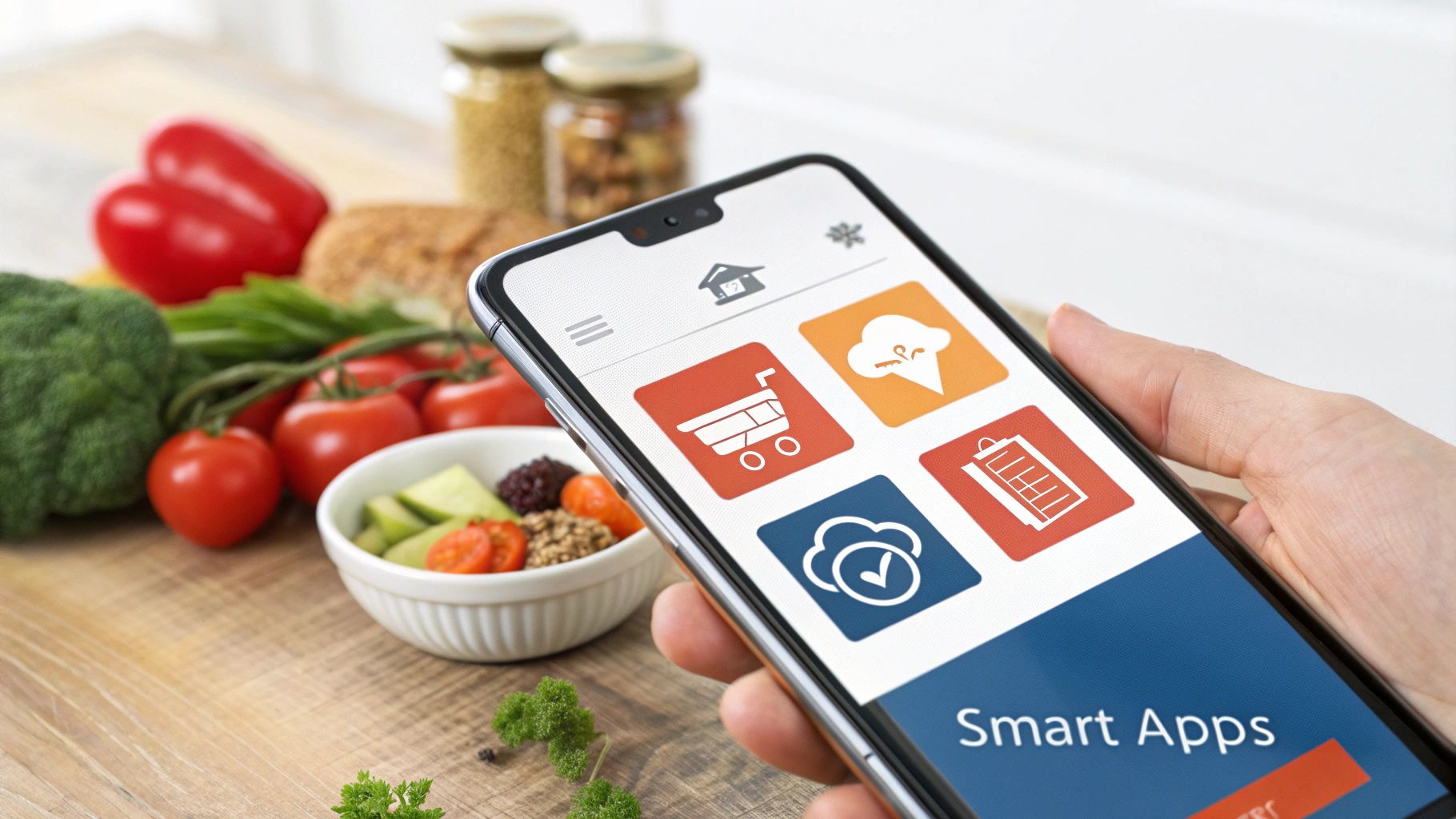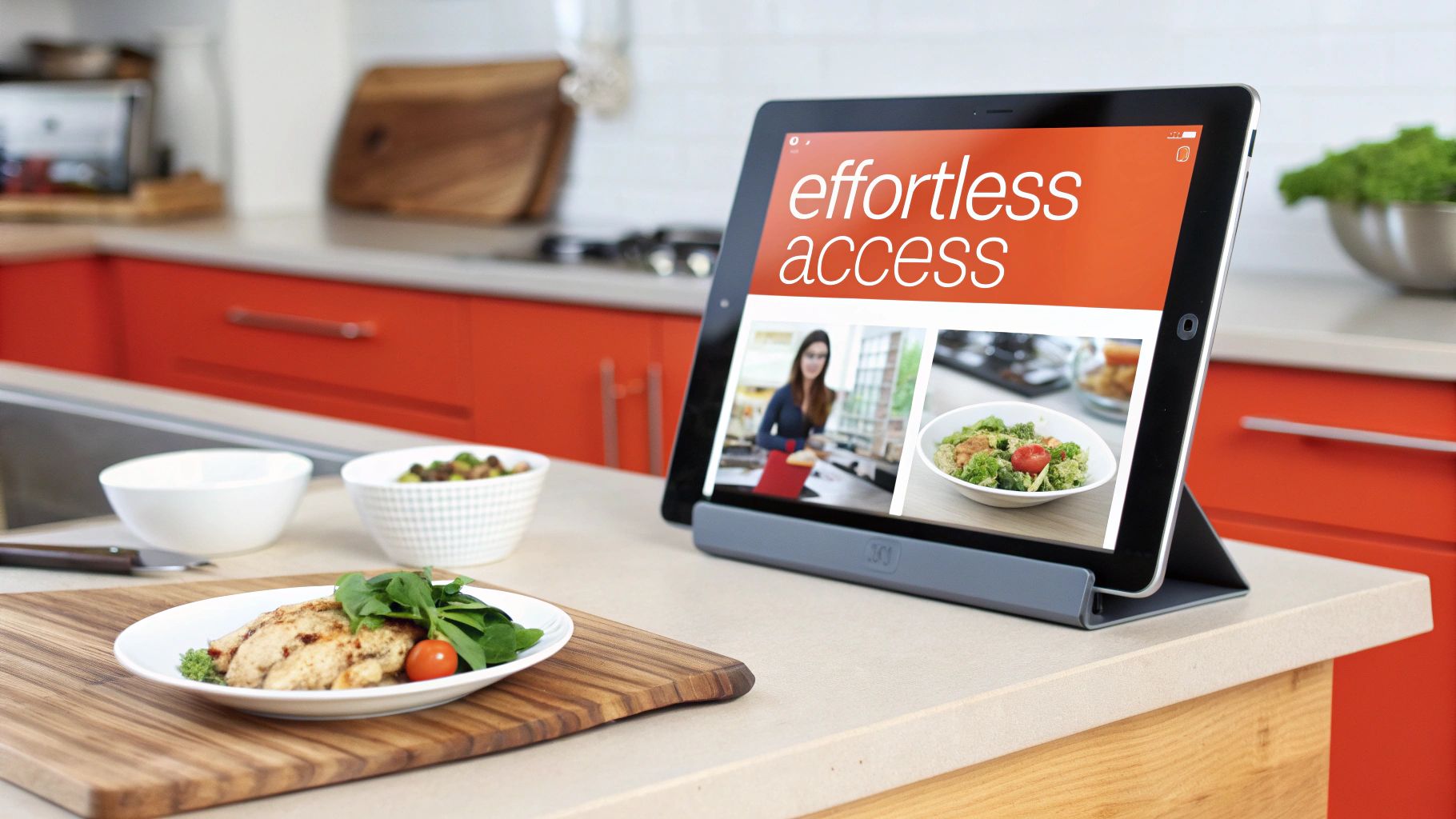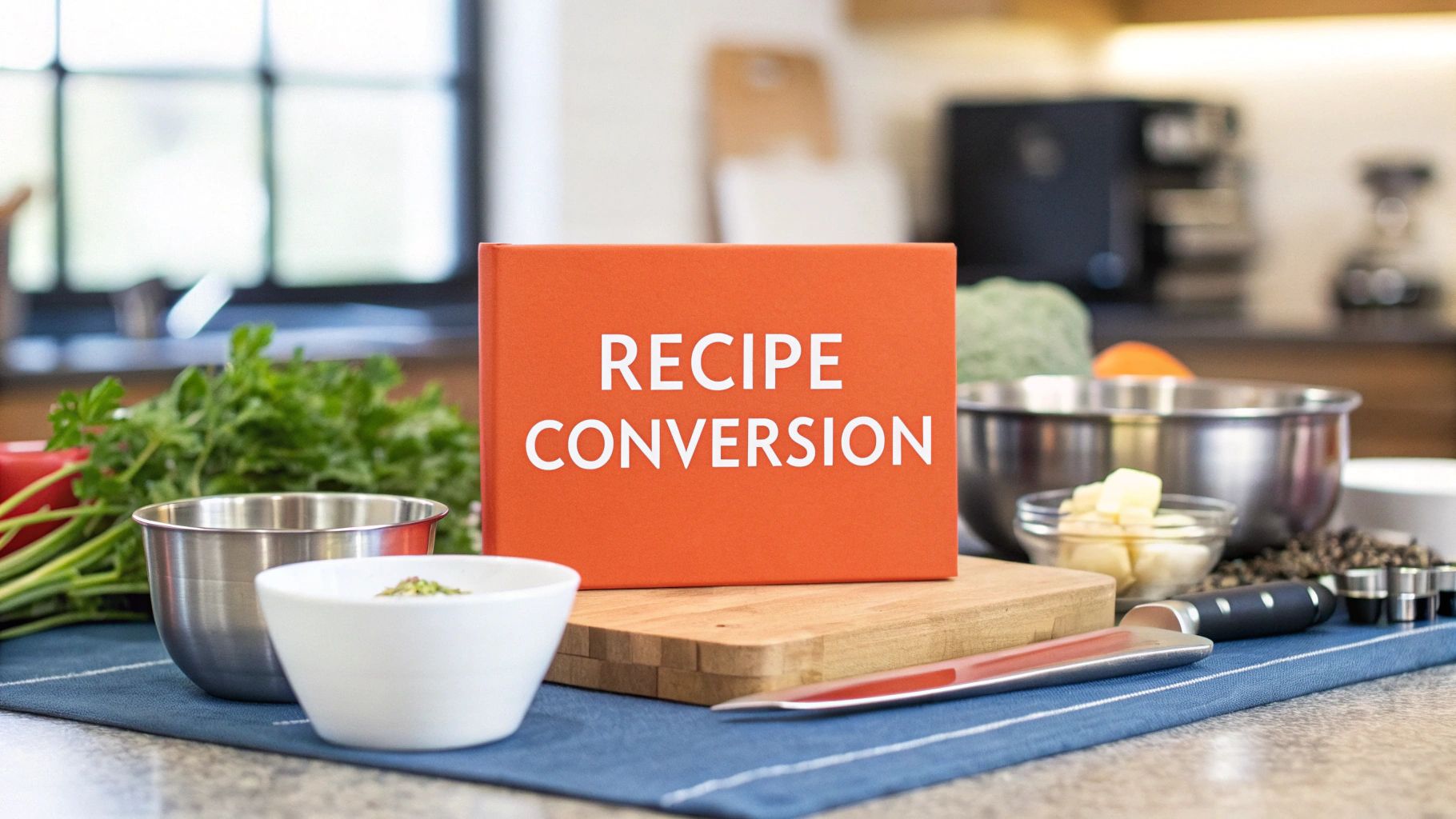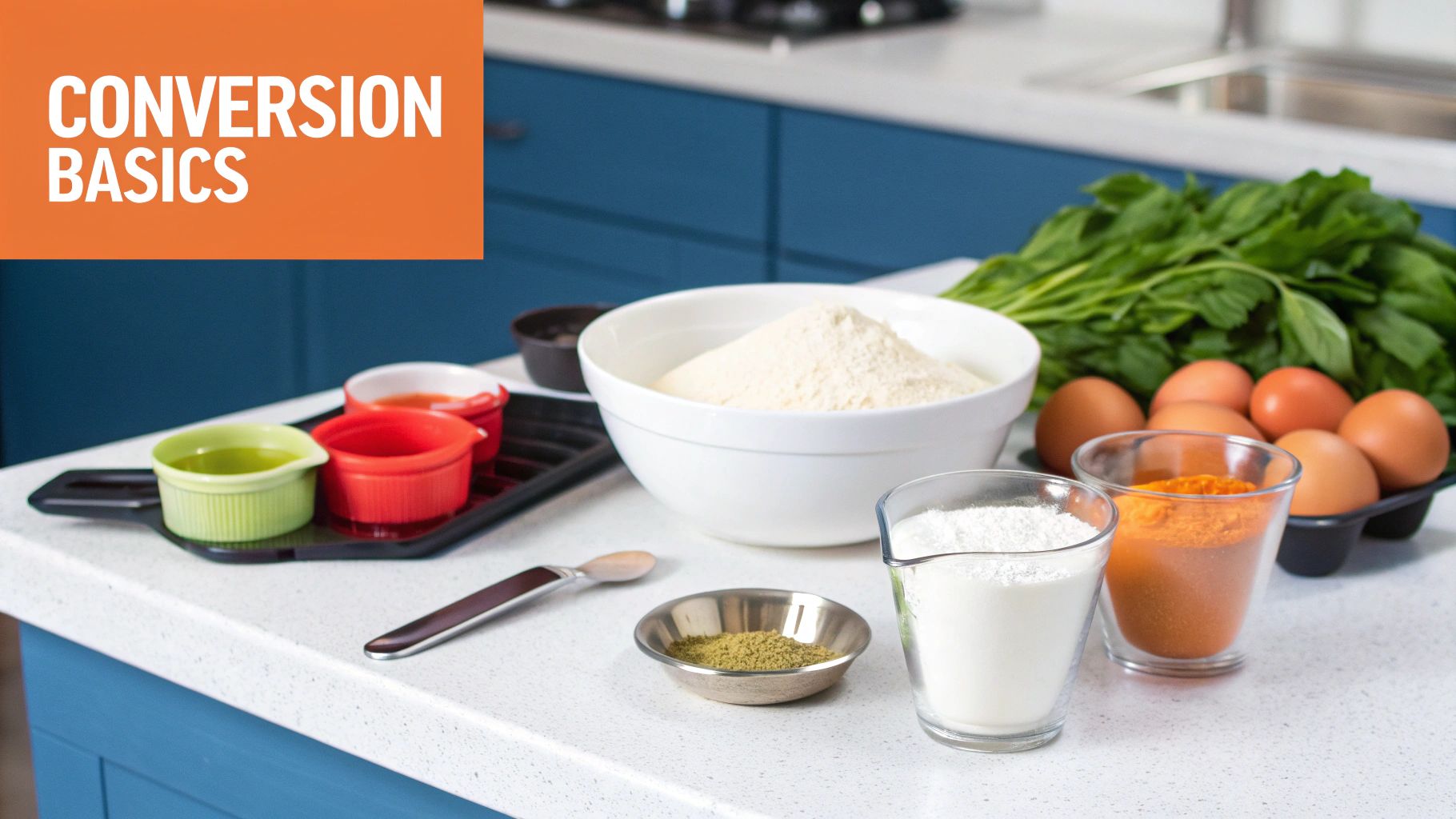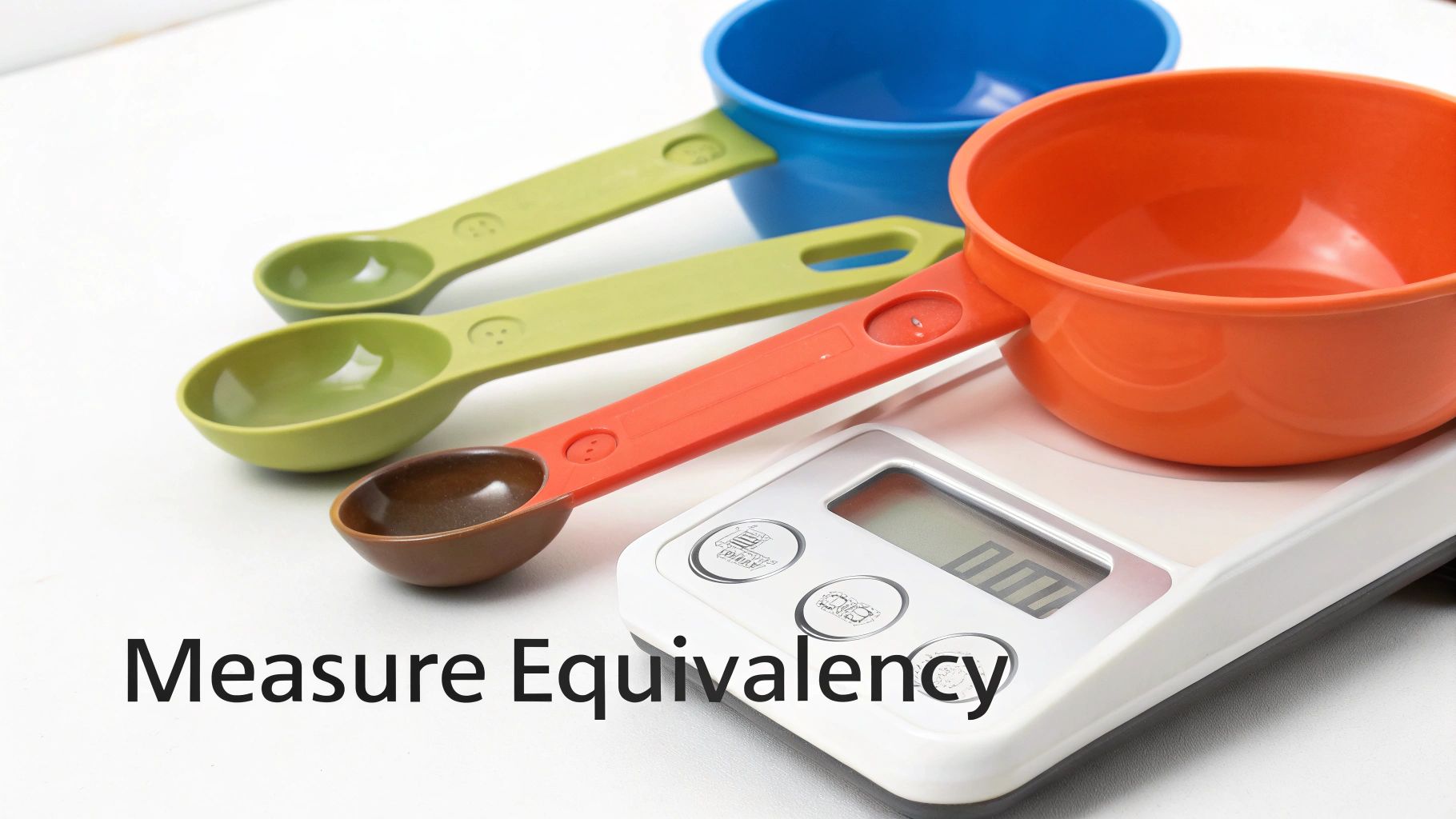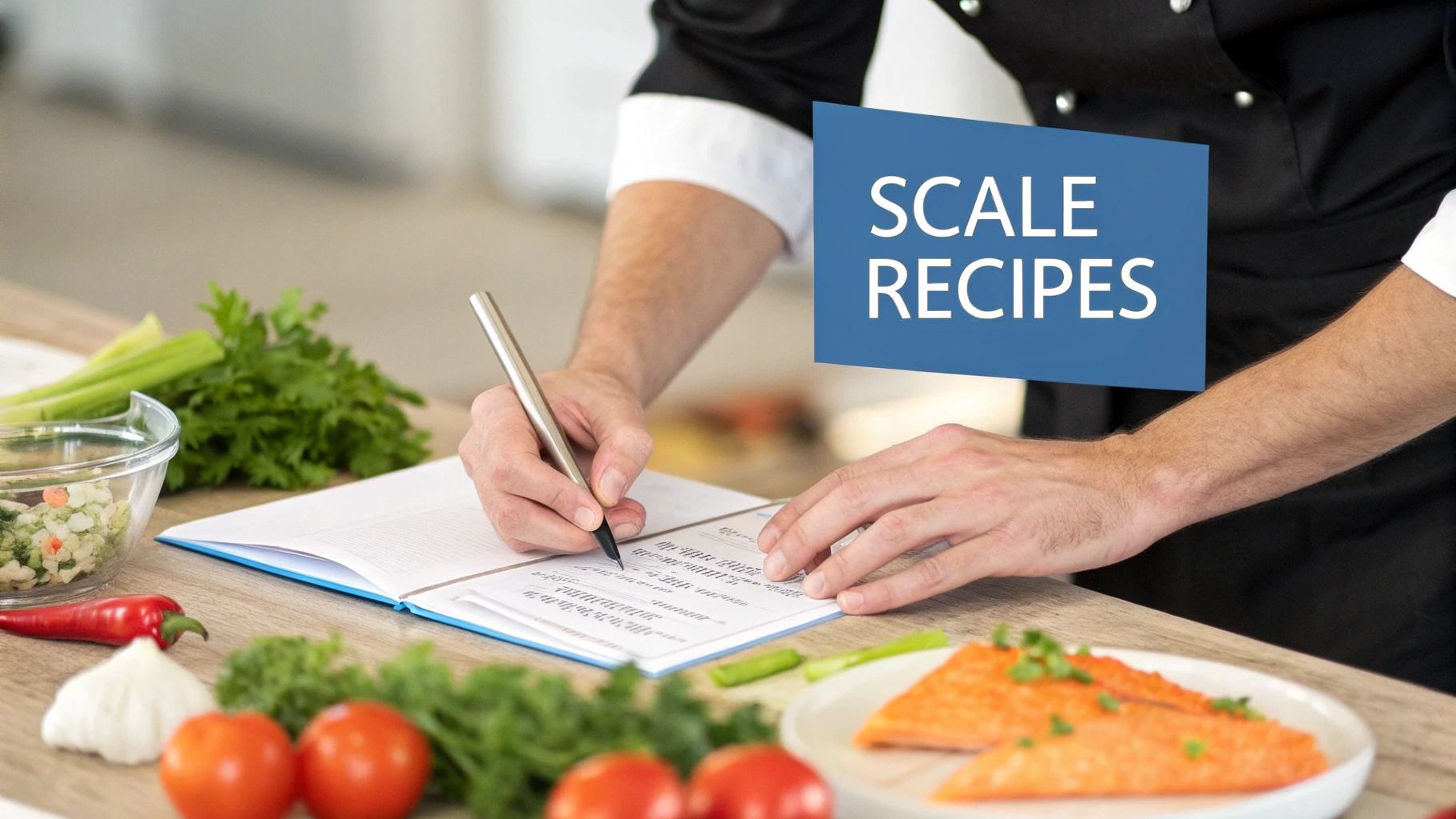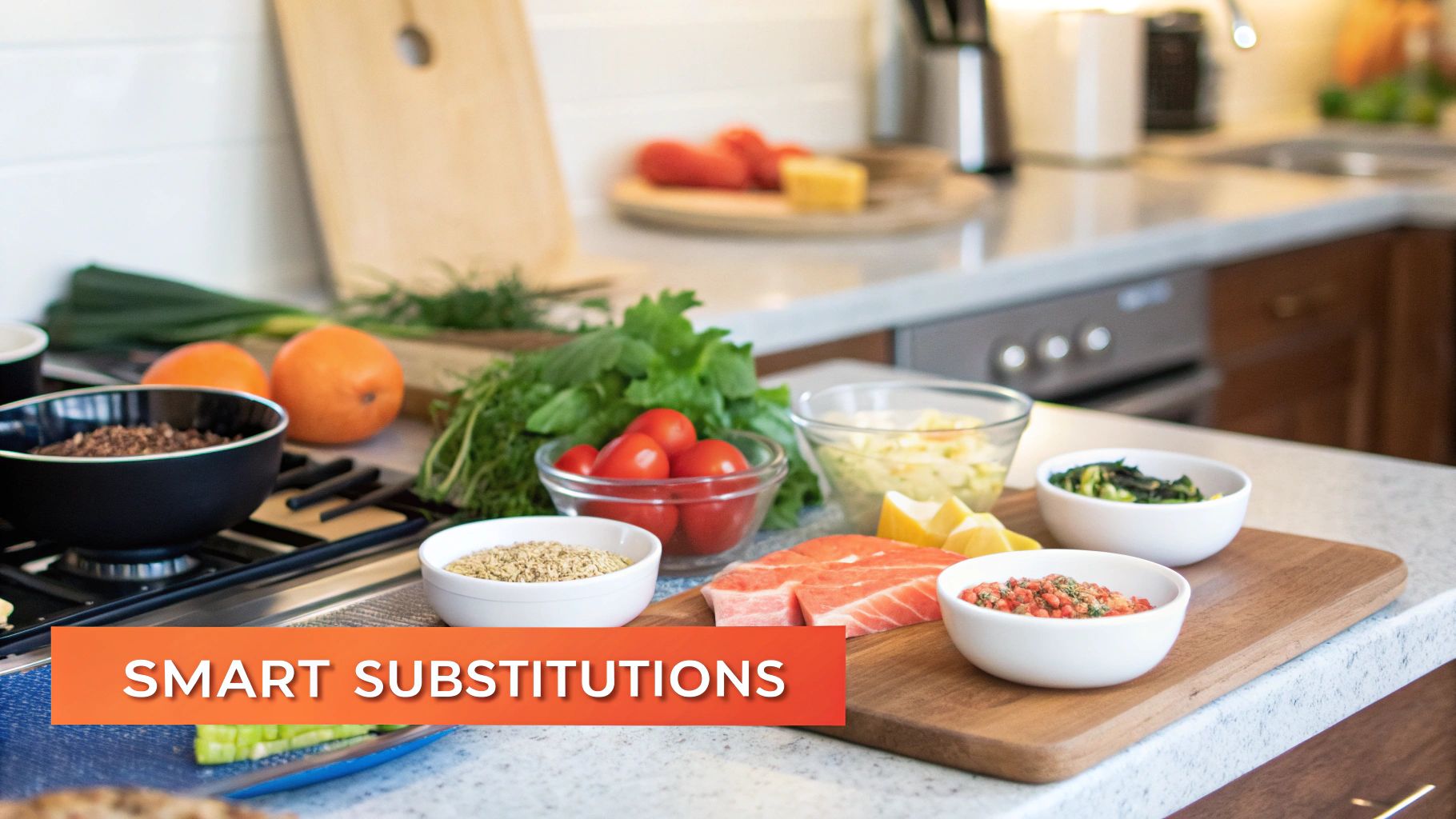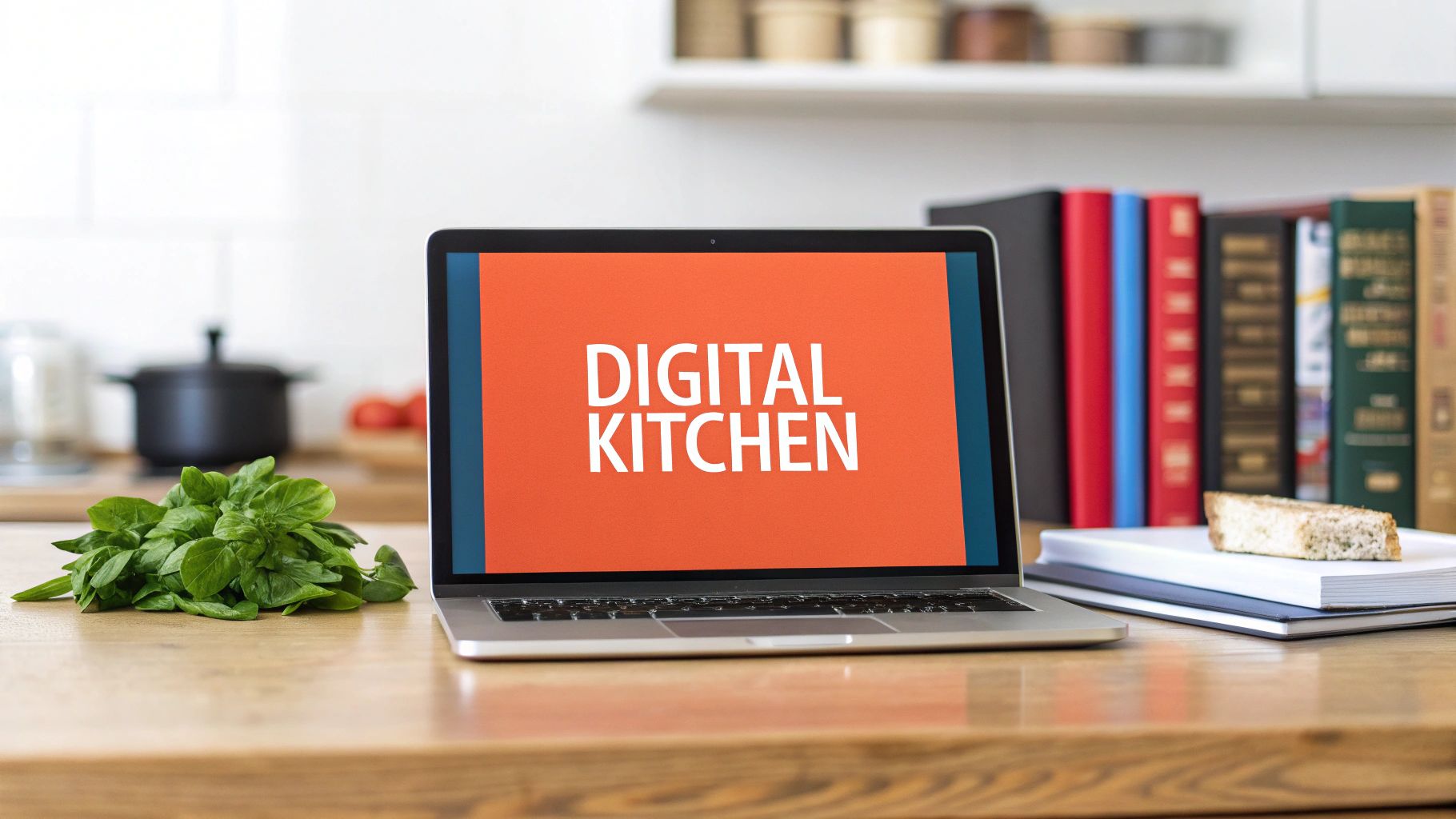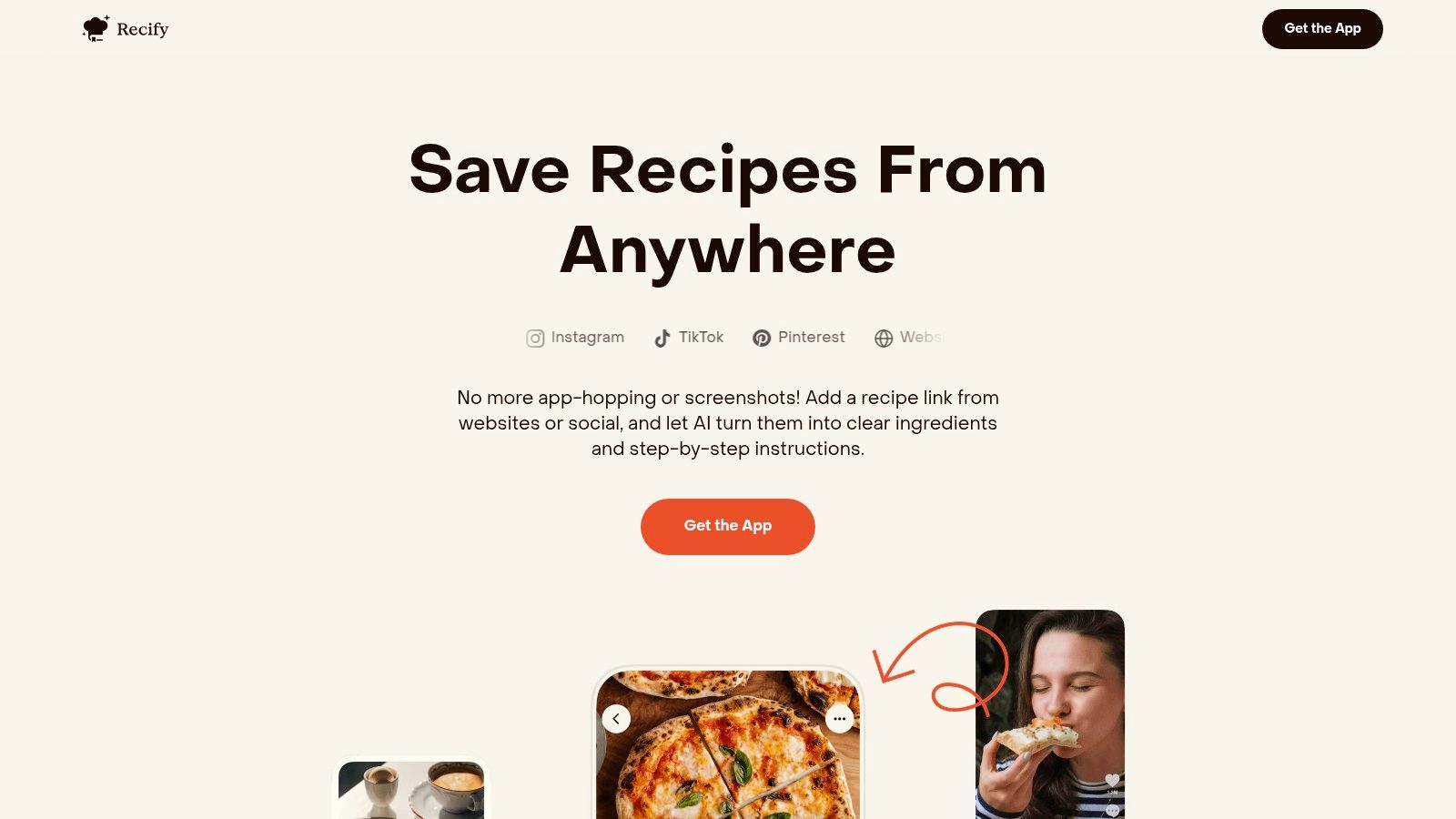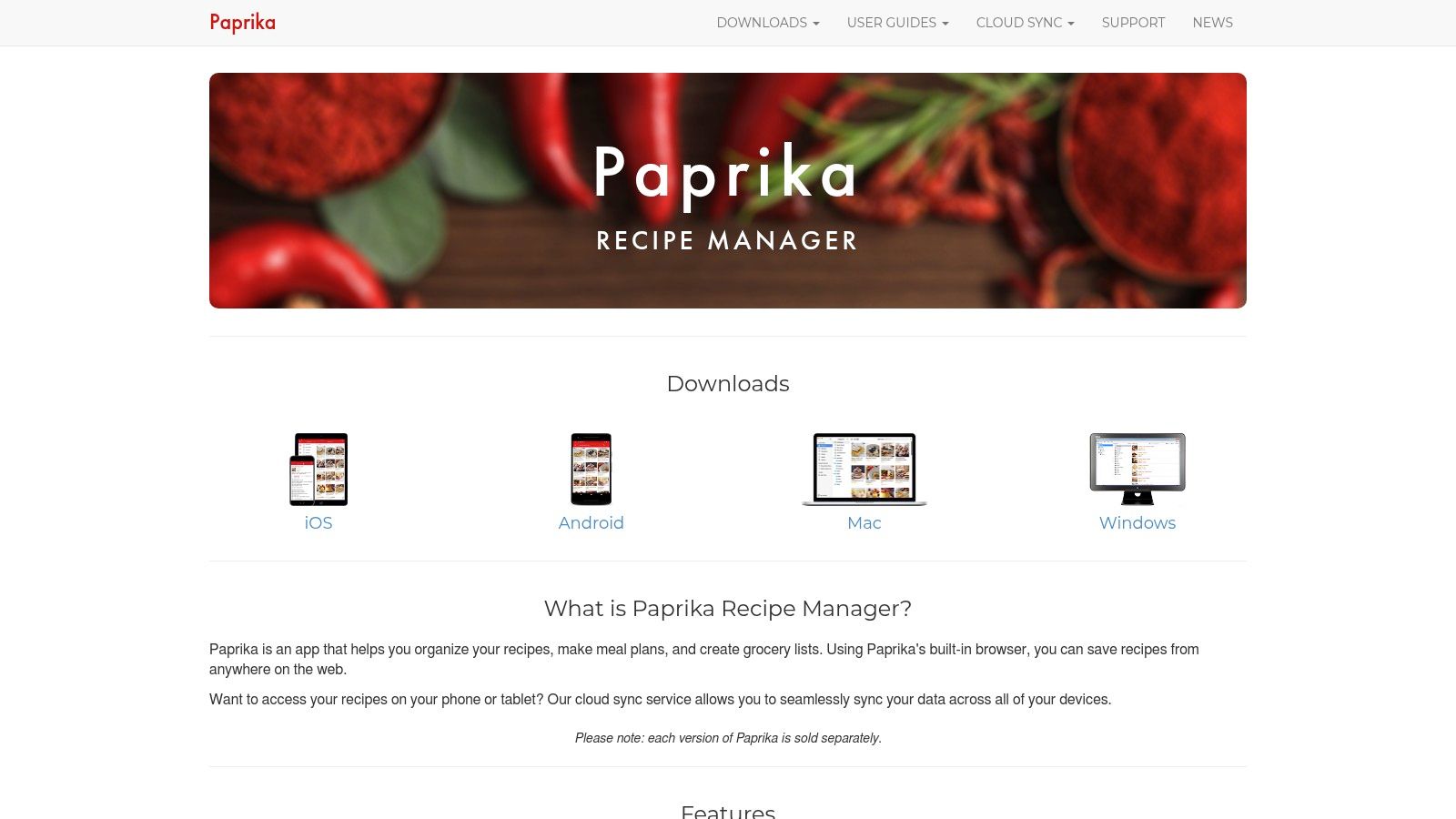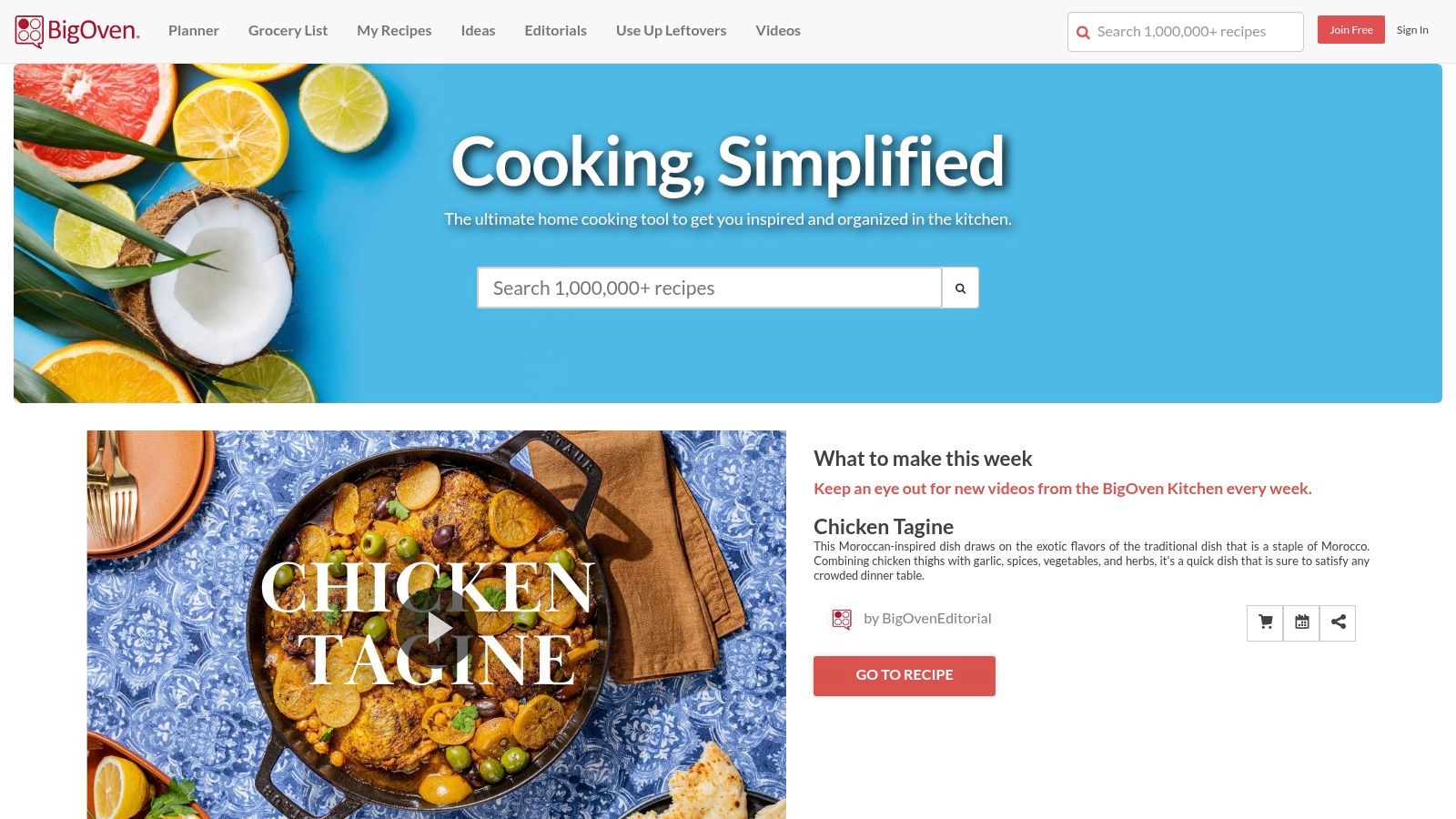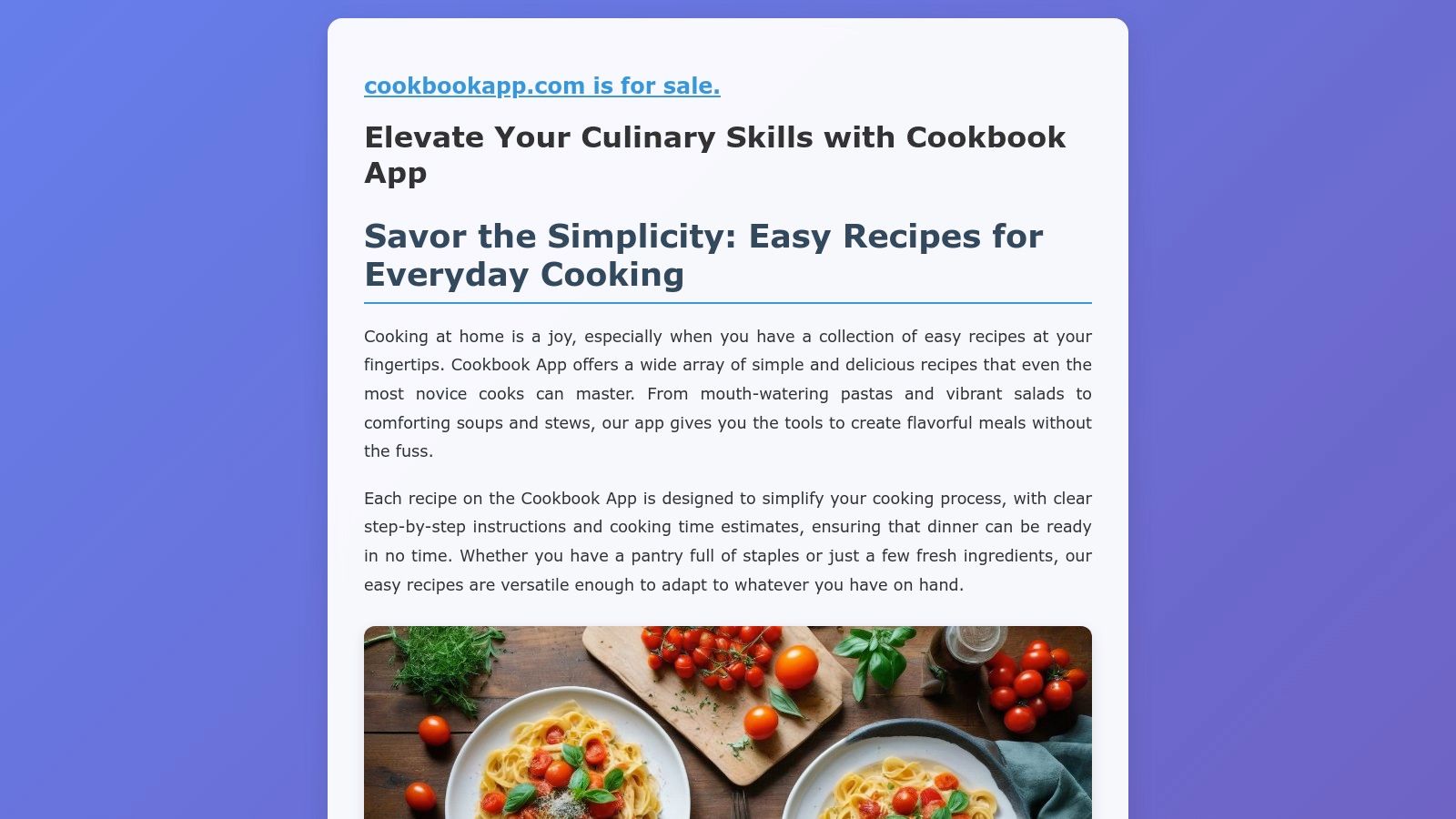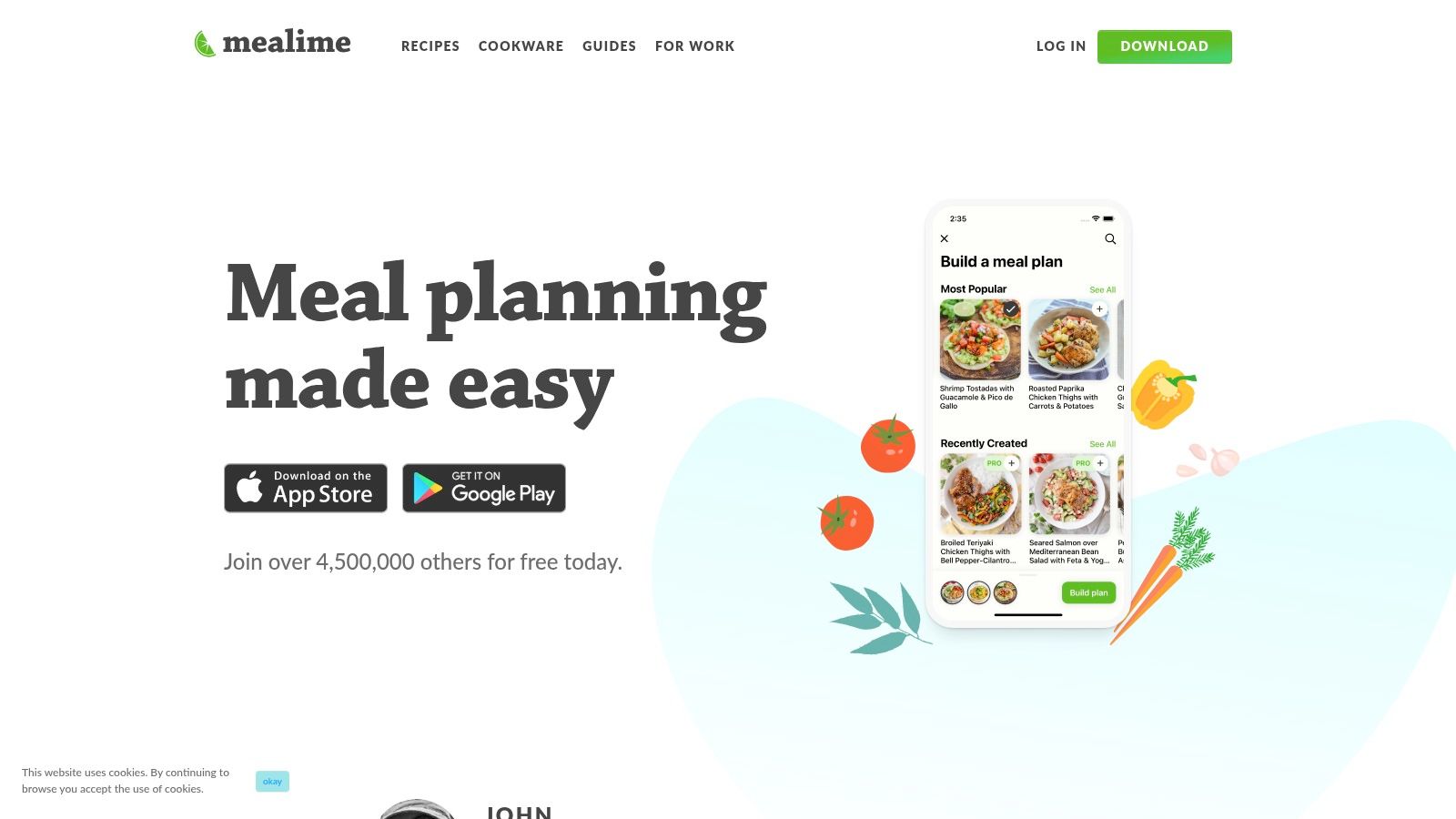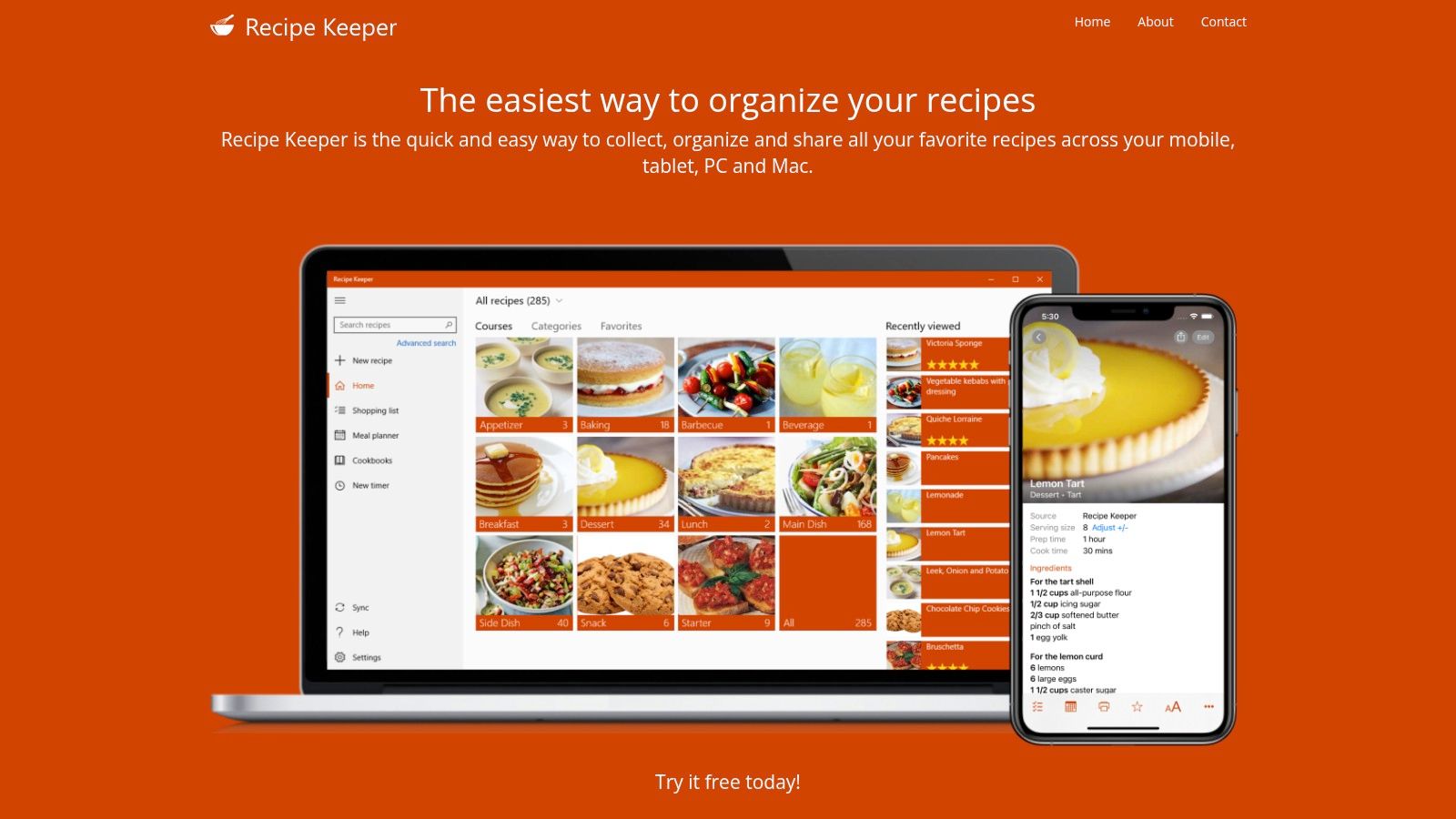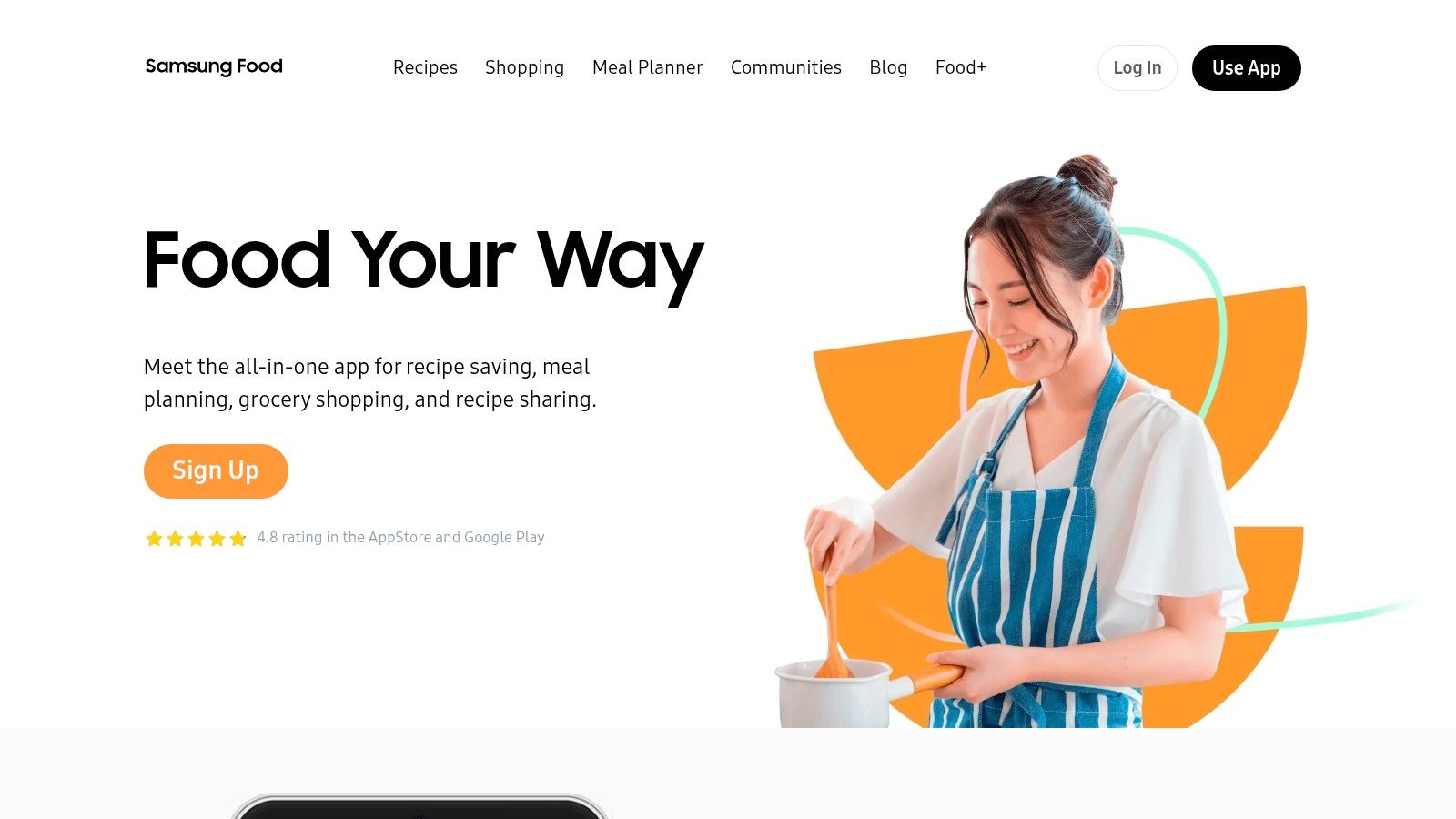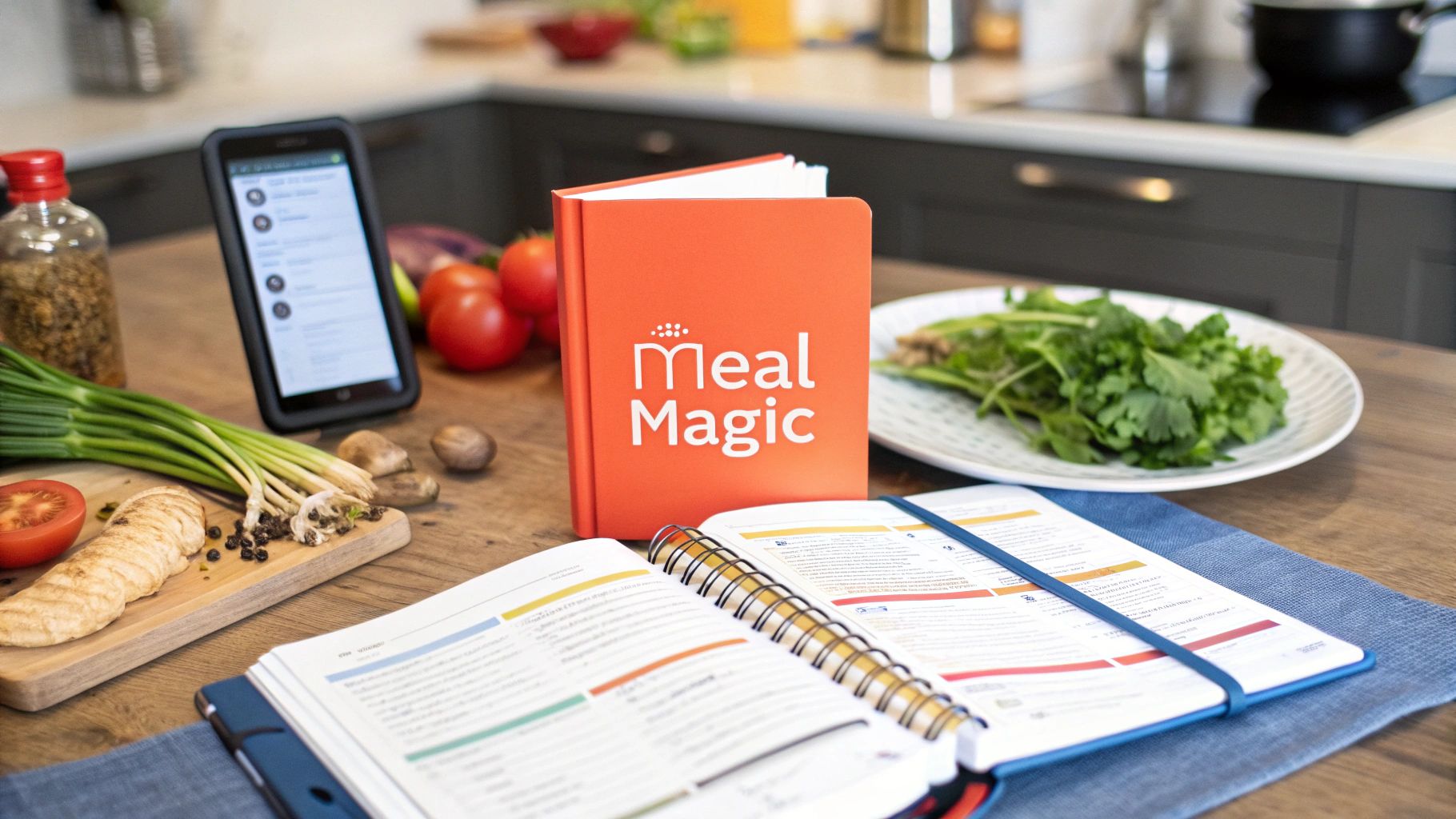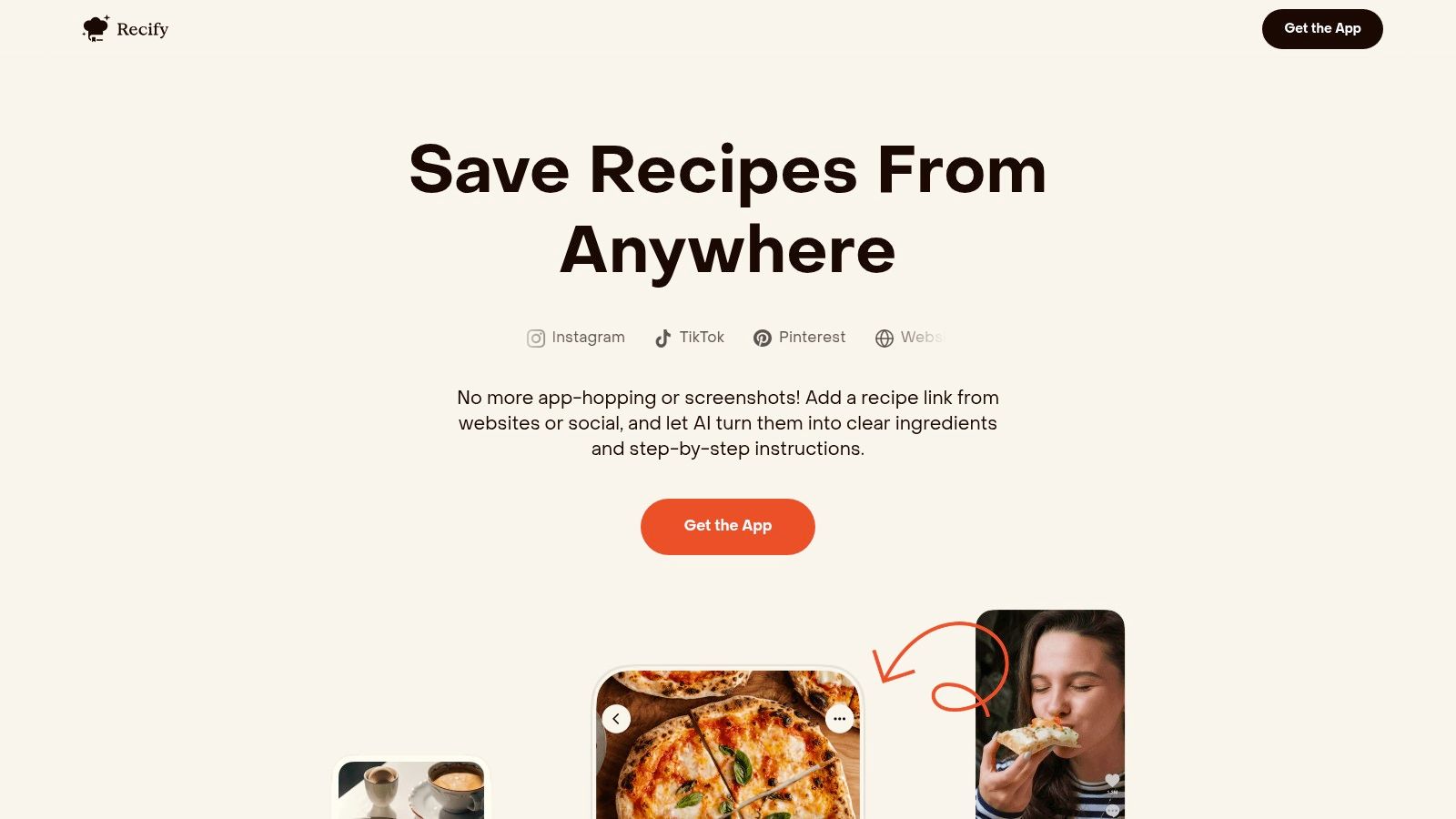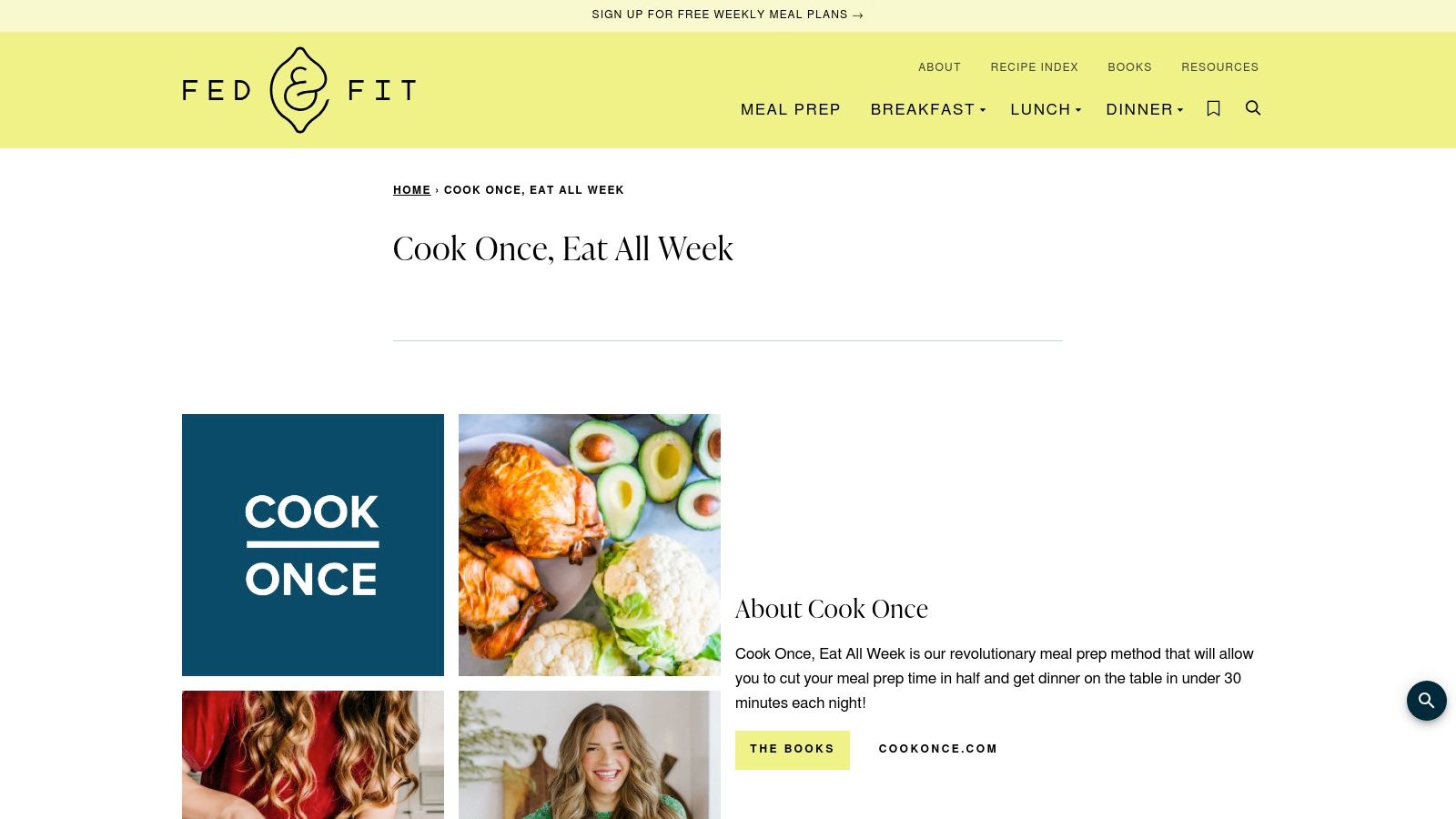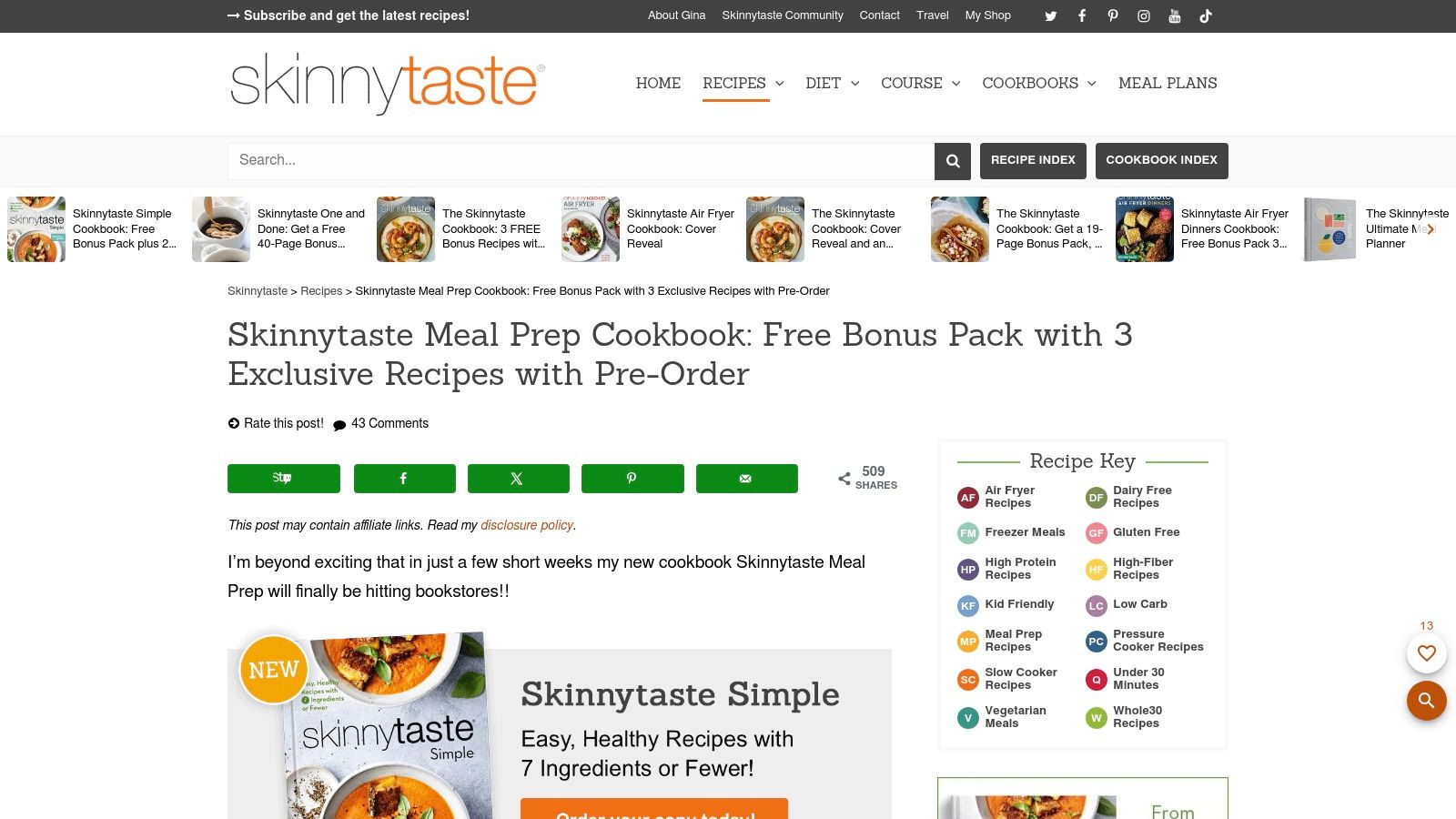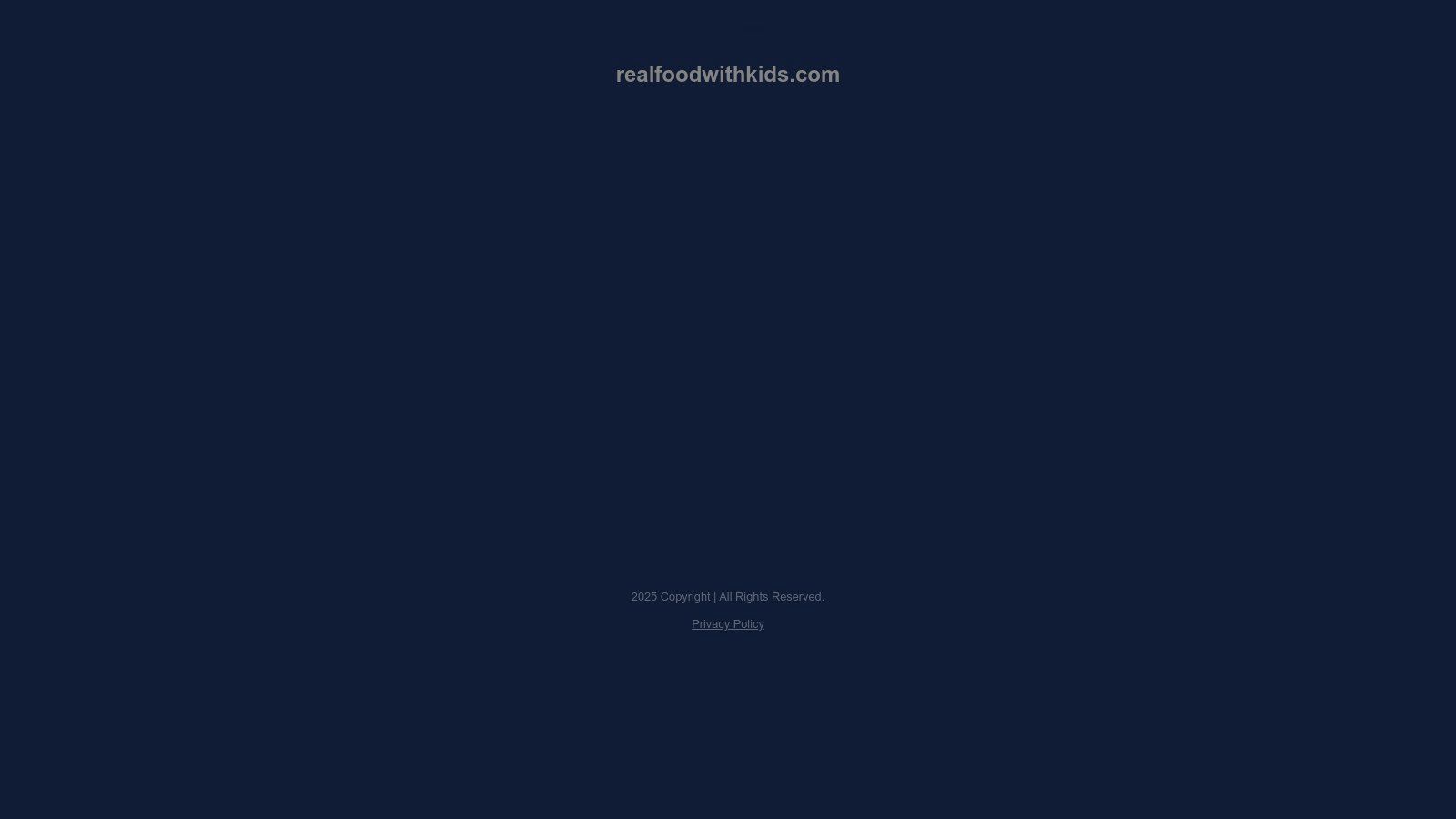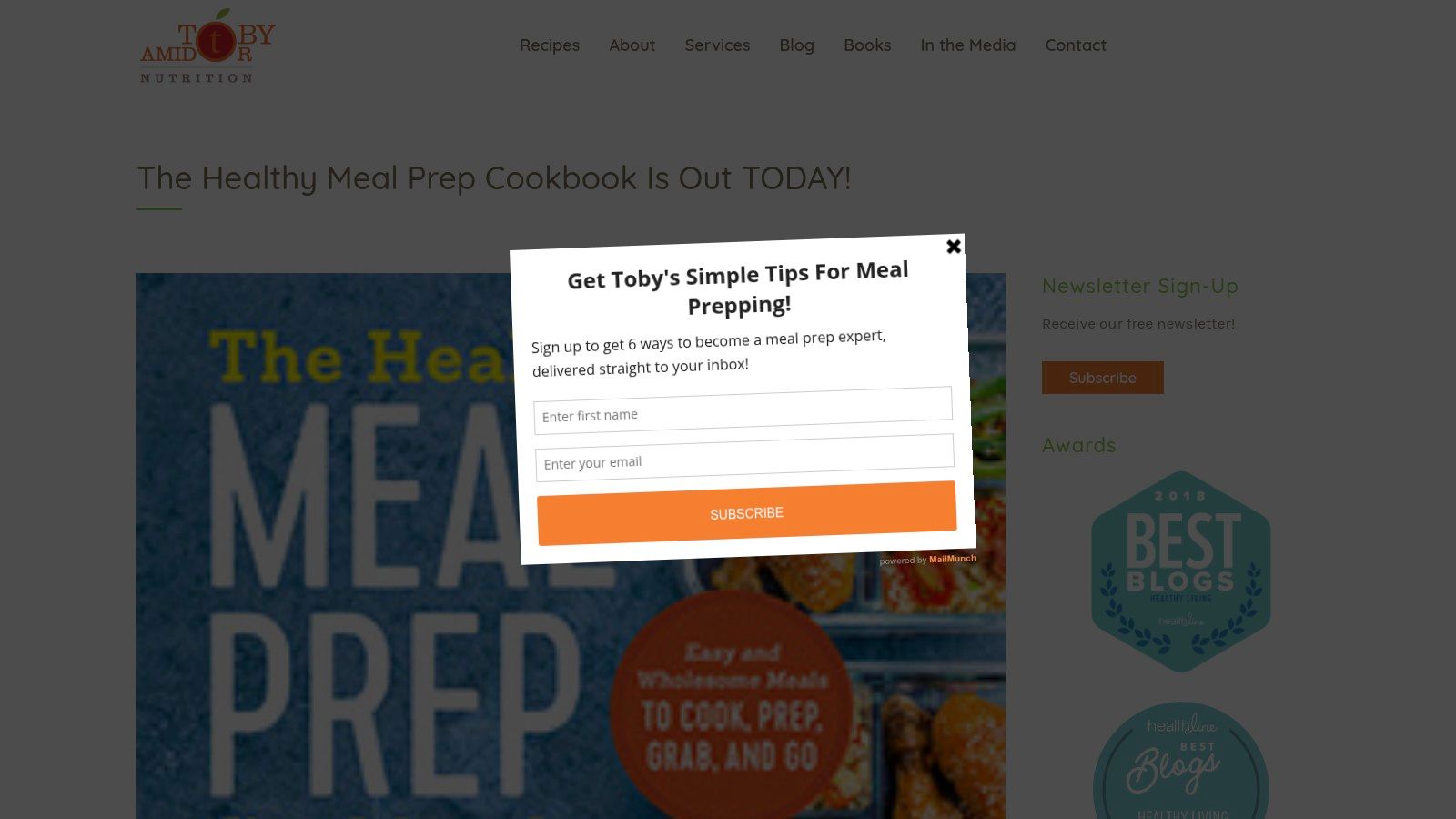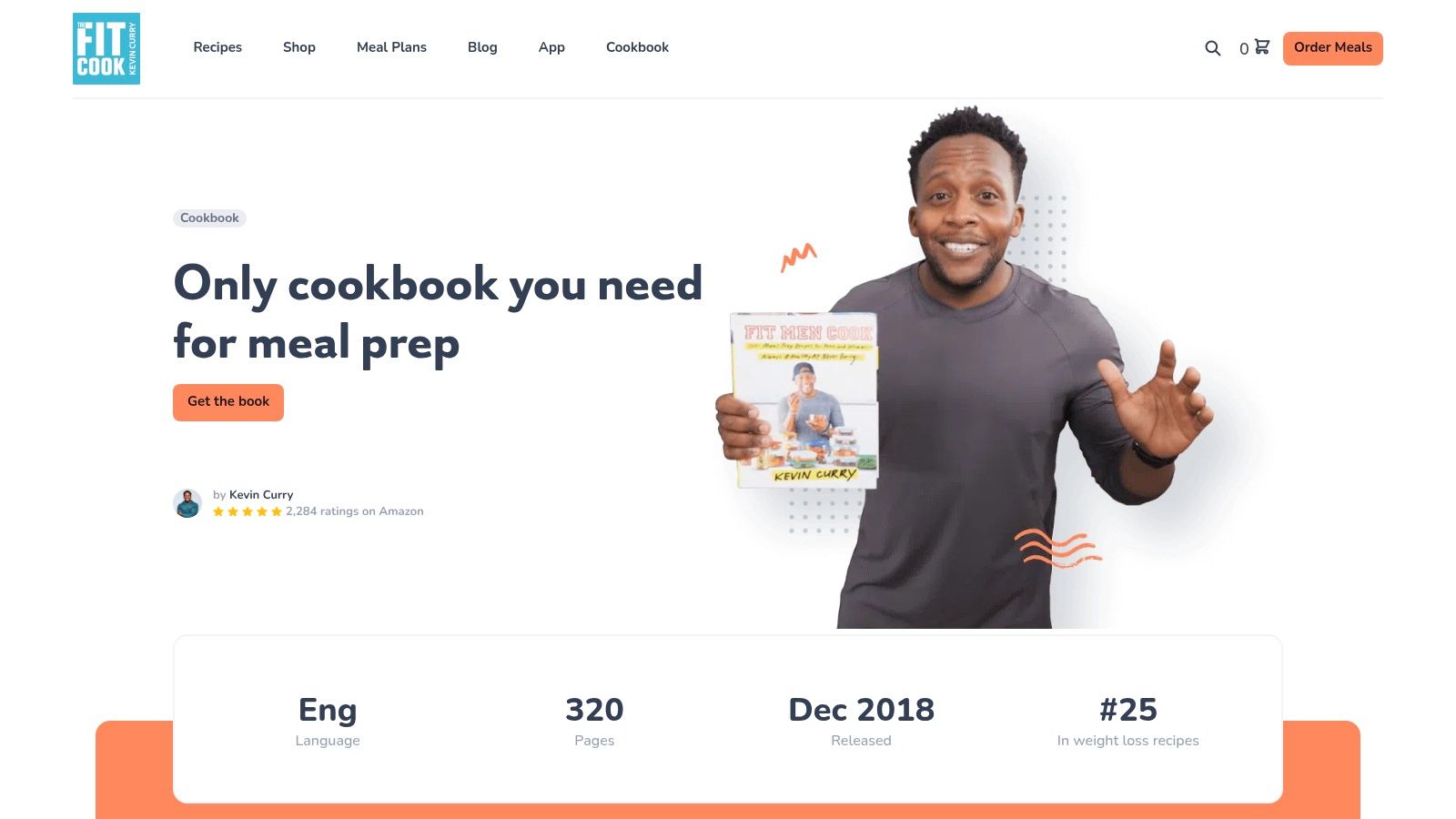Mastering Content in the Digital Age
Are your recipes a chaotic mess? Scattered across countertops, buried in crumpled note cards, or lost in a sea of digital bookmarks? Do you find yourself wasting precious time searching for that perfect pasta sauce? If you're a home cook or a food blogger, effective content management is crucial for success.
Whether you're organizing a personal recipe collection or building a culinary brand, a streamlined system can make all the difference. From handwritten recipe books to cloud-based platforms like Google Drive or Evernote, managing culinary information has changed dramatically. Just like the refrigerator revolutionized food storage, digital tools have changed how we collect, organize, and share our culinary creations.
What defines a truly effective modern approach? It's about building a system that seamlessly integrates creation, storage, retrieval, and sharing. Think of it as your own personalized, searchable, and expandable digital cookbook. This isn't just about neatness; it's about empowering yourself with easy access to your culinary knowledge.
Ten Best Practices for Content Management
This article explores ten best practices to transform your approach to managing recipes, food-related information, and digital assets. These practices help streamline your workflow, optimize your reach, and create engaging content. Get ready to take your culinary content to the next level!
1. Content Governance Framework
A Content Governance Framework isn't just a fancy term; it's your key to organized and successful food content. Whether you're a home cook, a food blogger, or simply passionate about sharing your culinary adventures online, a framework can make a world of difference. Think of it as your roadmap to creating, managing, and sharing high-quality food content.

A framework brings structure and consistency to your content, no matter the platform. From your blog to your Instagram feed, consistent quality builds trust with your audience. It also simplifies your process, preventing wasted effort and ensuring everyone is on the same page.
Why is a Governance Framework Important?
For home cooks, a framework helps transform a disorganized recipe collection into an easily accessible culinary library. Imagine easily finding your grandma's famous cookie recipe without rummaging through piles of papers! For food bloggers and influencers, it's essential for maintaining a consistent brand voice and ensuring quality across all channels.
Even casual food enthusiasts can benefit. Applying these principles makes curating and sharing food content on social media much more effective. It's about creating a streamlined approach that delivers value to your audience.
Features and Benefits of a Content Governance Framework
-
Clearly Defined Roles and Responsibilities: Who tests the recipes? Who manages the social media posts? Clear roles prevent confusion and ensure accountability.
-
Documented Workflows and Approval Processes: Establish a clear process for everything from recipe development to publishing. This ensures consistency and minimizes errors.
-
Content Creation and Maintenance Guidelines: Set standards for recipe formatting, photography style, and even writing tone. This creates a cohesive experience for your audience.
-
Quality Control Checkpoints: Implement review stages throughout the content creation process. This helps catch any mistakes and maintain quality.
-
Version Control Protocols: Keep track of recipe revisions and updates. This ensures you are always working with the most current version.
-
Content Audit Schedules: Regularly review your existing content. This helps identify outdated or irrelevant material that needs refreshing or removal.
Pros and Cons
Pros:
- Reduces duplicated content and wasted effort.
- Improves content quality and consistency.
- Creates clear accountability.
- Streamlines the content creation process.
Cons:
- Can seem complex at first.
- Requires initial planning.
- Might initially slow down content production.
Real-World Examples and Implementation Tips
Large companies like Microsoft and Adobe use these frameworks to ensure brand consistency. The same principles apply to your food content, even on a smaller scale. Think about your favorite food blogs or cooking channels – their organized, consistent style likely stems from a framework.
Tips for Implementation:
-
Start Small: Don't try to do everything at once. Begin with a basic framework and gradually add complexity as needed.
-
Visualize: A flowchart or diagram can help illustrate your workflow.
-
Collaborate: If others contribute to your content, involve them in the planning.
-
Regular Reviews: Periodically review your framework and adjust as your needs evolve.
-
Automate: Use tools to automate tasks like social media posting and scheduling.
Evolution and Popularization
Content governance has become more recognized thanks to organizations like the Content Marketing Institute and influencers in the field. While initially focused on marketing, its principles are valuable for any type of content, including your delicious recipes and food-related media. By implementing these best practices, you can significantly improve your food content, engage your audience, and achieve your culinary goals.
2. Metadata Strategy and Taxonomy
A well-structured content strategy relies heavily on organization. That's where metadata strategy and taxonomy come in. This involves using descriptive tags and classifications to organize your content, making it easily discoverable and manageable. Think of it as creating a map of your content library. A comprehensive strategy enables efficient content discovery, reuse, and management, while also supporting advanced search and personalization.

This approach uses several key features:
- Standardized metadata schemas: Using consistent terms (e.g., for "cuisine type").
- Controlled vocabularies: Predefined lists of acceptable terms.
- Hierarchical classification systems: Grouping similar content together.
- Content tagging protocols: Rules for applying tags consistently.
- Semantic relationships: Linking related content (e.g., recipes).
- Automated metadata extraction tools: Software that automatically adds tags.
Imagine tagging a recipe with "Italian," "pasta," "vegetarian," and "quick meal." These tags become its metadata, making it easily searchable.
The benefits of a strong metadata strategy are numerous:
- Improved content findability: Users quickly locate what they need.
- Content personalization: Suggesting related content based on user preferences.
- Content reuse: Sharing content across different channels (website, social media, email).
- Advanced search capabilities: Filtering and searching with specific criteria.
- Better content analytics: Understanding what content resonates with your audience.
For a practical example, see this article on How to Categorize Recipes.
Implementing a metadata strategy has its challenges:
- Initial planning: It requires significant upfront planning and can be complex.
- Ongoing maintenance: Taxonomies need regular updates and reviews.
- Specialized expertise: It may require individuals with specific skills.
- User adoption: Ensuring everyone uses consistent tagging practices.
Real-World Examples of Metadata and Taxonomy
Real-world examples demonstrate the effectiveness of metadata and taxonomy:
- Netflix: Its recommendation engine relies heavily on extensive content metadata tagging, suggesting movies and shows based on viewing history.
- BBC: Uses a complex taxonomy to organize thousands of articles, making it easy to find news on specific topics.
- Amazon: Its product categorization system is a prime example of advanced taxonomy at scale.
Thought leaders like Seth Earley (CEO of Earley Information Science), Heather Hedden (author of 'The Accidental Taxonomist'), and David Weinberger (author of 'Everything Is Miscellaneous') have emphasized the importance of structured information.
Getting Started with Metadata
Here are some tips for implementing a metadata strategy:
- Start small: Begin with the most important metadata fields.
- Automate: Explore automated tagging tools.
- Create guidelines: Develop clear tagging guidelines for consistency.
- Regular review: Review and update your taxonomies as needed.
- Train your team: Educate content creators on proper tagging practices.
By implementing a solid metadata strategy and taxonomy, you can transform your content into a valuable, accessible resource, improving user experience and achieving your content goals.
3. Content Modeling: The Secret Ingredient for Organized Content
Content modeling sounds technical, but it's simply the backbone of a well-organized content system, especially for recipes. Think of it as a standardized recipe card. Every recipe has key elements: ingredients, instructions, and cooking time. Content modeling formalizes these, ensuring each recipe follows the same structure. This brings surprising benefits for managing and sharing your culinary creations.
Instead of scattered screenshots, handwritten notes, and bookmarked websites, content modeling creates a structured system. It defines the "ingredients" (attributes) of each "dish" (content type). For recipes, these attributes might include the title, ingredients list, preparation steps, cooking time, cuisine type, dietary restrictions, and related images or videos. This consistent formatting makes recipes easy to search, filter, and share.
Content modeling goes beyond individual recipes by defining content relationships. This allows you to link a "Thanksgiving Dinner" menu to its individual recipes, like "Roast Turkey" and "Cranberry Sauce." You can even connect recipes with shared ingredients or cuisines. This interconnectedness makes meal planning and recipe discovery much simpler.
This structure also supports omnichannel content delivery. Whether on your phone, tablet, or computer, the consistent structure ensures recipes display correctly on every device. Channel-agnostic content structures, component-based architecture, content templates and patterns, and field validation rules all contribute to this flexibility. Imagine effortlessly sharing a recipe, knowing it will look perfect on any device.
Why Is Content Modeling Essential for Recipe Management?
Imagine searching for a specific recipe in a disorganized pile of papers. Frustrating, right? Content modeling solves this. It deserves its place on this list because it:
-
Facilitates Personalized Content Experiences: Filter recipes based on dietary restrictions, cuisine, or available ingredients.
-
Enables Efficient Content Reuse: Easily adapt a base recipe to create variations.
-
Improves Content Consistency: Ensure every recipe follows the same format for easy reading.
-
Makes Content Migration Easier: Transfer recipes between platforms or devices seamlessly.
Real-World Examples
Just like professional chefs, large organizations use content modeling. The Guardian uses it to deliver news across its website, apps, and API. IKEA uses a product content model that powers its global website, catalog, and in-store systems. These same principles can apply to your recipe collection.
Pros and Cons
-
Pros: Supports omnichannel delivery, personalized experiences, efficient reuse, improved consistency, easier migration, and future-proofs your system.
-
Cons: Requires initial planning, can be difficult to modify later, and may have a learning curve.
Tips for Implementing Content Modeling for Your Recipes
-
Map out your recipe workflow: How do you typically find, use, and share recipes?
-
Start simple: Begin with core content types like "Recipe" and expand gradually.
-
Think ahead: Consider future needs, such as sharing with family or integrating with smart appliances.
-
Test your model: Experiment with a few recipes before applying it to your entire collection.
By implementing content modeling, you're building a scalable system that grows with your culinary adventures, leading to a more streamlined and enjoyable cooking experience.
4. Headless CMS Architecture
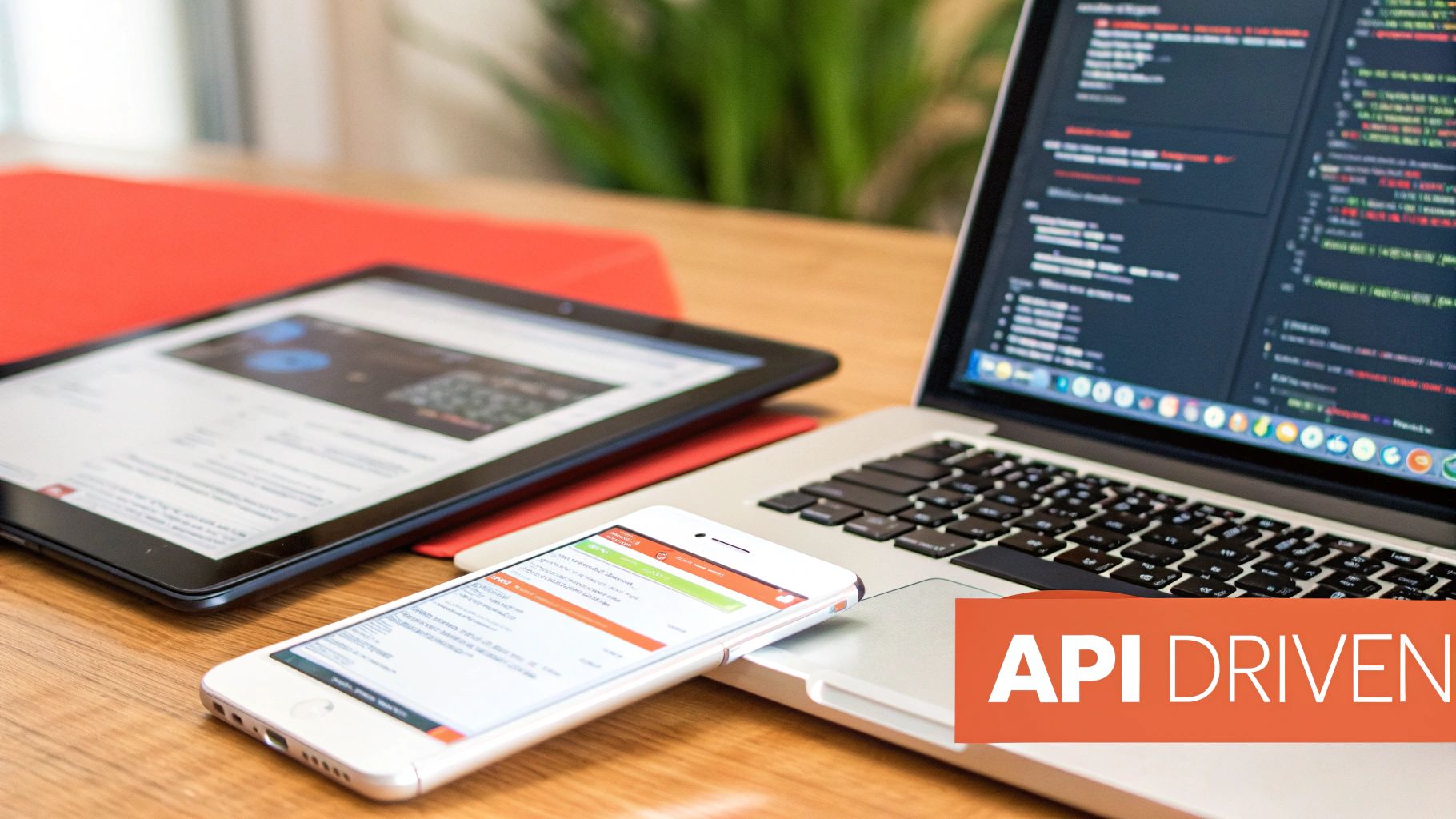
In content management, the headless approach offers a new way to handle content. Think of it like a central hub for all your recipes. From this hub, you can easily share them on your blog, social media, mobile app, or even a smart kitchen display. This is the power of a headless CMS. It's a valuable tool, especially for those heavily involved in the online culinary world, offering significant flexibility and future-proofing your content.
A headless CMS separates content creation (the "body") from presentation (the "head"). Instead of fixed templates, it uses APIs (Application Programming Interfaces) to deliver content. These APIs act like messengers, carrying your recipes wherever you need them.
How does this benefit you? Let's explore some key advantages:
-
True Omnichannel Content Delivery: Share your recipes anywhere, from your website to Instagram or TikTok. This is essential for food bloggers, influencers, and anyone sharing culinary creations across multiple platforms.
-
Greater Front-End Flexibility: Want a new website design or a cutting-edge mobile app? A headless CMS keeps your content independent. This allows for design changes without impacting the backend.
-
Future-Proofing Your Recipes: Technology evolves quickly. A headless CMS ensures your recipes aren't tied to a specific platform, letting you adapt to future innovations easily.
Features of a Headless CMS
Here’s a quick overview of the core features:
- API-First Content Delivery: Content is accessed and delivered through APIs, making it platform-independent.
- Separation of Content and Presentation: Manage content separately from its display, giving you more design freedom.
- Content as a Service Model: Your content becomes a reusable resource, accessible by various applications.
- Support for Multiple Front-End Frameworks: Use your favorite frameworks (like React, Angular, or Vue.js) for dynamic front-end experiences.
Pros and Cons of a Headless CMS
Here's a simple breakdown of the advantages and disadvantages:
| Pros | Cons |
|---|---|
| True omnichannel content delivery | More complex initial implementation |
| Greater front-end flexibility | May require more technical resources |
| Supports rapid deployment across channels | Often needs more custom development |
| Future-proofs content investments | Preview functionality can be more challenging |
| Improves developer experience | Potentially higher initial cost |
| Enables faster time-to-market for new channels |
Real-World Examples of Headless Architecture
Think about how Spotify delivers music across different devices. Or how companies like Princess Cruises manage content across their website, app, and onboard systems. These are examples of headless architecture in action. Even publications like The Economist use this approach.
Practical Tips for Implementing a Headless CMS
Here are some tips to help you get started:
- Start Small: Begin with a small project to test the system.
- Content Modeling: Structure your content (recipe ingredients, instructions, images) for optimal API delivery.
- API Strategy: Plan how your content repository will communicate with different front-ends.
- Preview Functionality: Address preview capabilities early in the process.
- Hybrid Approach: Consider a hybrid CMS (combining traditional and headless features) for smoother transitions.
The rise of headless CMSs is linked to companies like Contentful, Sanity.io, Strapi, and GraphCMS, and figures like Dries Buytaert (founder of Drupal), who championed decoupled architecture. While it may require more technical expertise, the long-term benefits of flexibility, scalability, and future-proofing make a headless CMS a powerful tool for anyone serious about managing and sharing their culinary creations online.
5. Content Atomization Strategy
Content atomization is a powerful technique that changes how we manage and deliver content. Instead of thinking of each piece of content as a separate entity, this strategy breaks it down into smaller, reusable parts called "atoms." Think of it like building with LEGOs. Individual bricks combine to create many different structures. This modular approach allows for greater content reuse, personalization, and scalability while keeping things consistent across platforms.
This strategy uses a modular content architecture. Each "atom" is a self-contained piece of information. These components can be anything from a short text snippet and an image to a video clip or a call to action. Features like dynamic content assembly and granular content management allow these atoms to be arranged and rearranged to create different experiences. Imagine easily adapting a single recipe for different serving sizes or dietary needs. That's the power of content atomization! You might be interested in: Our guide on how to convert recipes for managing variations.
This approach offers significant advantages. It maximizes content reuse and ROI, as individual components can be repurposed across multiple channels. It also allows for personalization, tailoring content to individual user needs. Additionally, it improves content consistency across channels and makes localization and translation easier, as only the relevant atoms need adjustment. Content atomization also supports agile content creation and updates, significantly reducing duplicated effort.
Challenges of Content Atomization
However, adopting content atomization has challenges. It often requires restructuring existing content. It can also be conceptually difficult for authors used to traditional page-based thinking. It requires sophisticated CMS capabilities and may require custom development. The initial implementation can be time-consuming.
Real-World Examples of Content Atomization
Real-world examples show the effectiveness of this strategy. Salesforce uses content atomization to deliver personalized help content across its product suite. Red Bull breaks down stories into modular components that can be reassembled for different audiences and platforms. IBM's developer documentation uses an atomic content approach to serve technical content across multiple products.
The concept of content atomization has gained popularity thanks to thought leaders like Karen McGrane (author of 'Content Strategy for Mobile'), Michael Priestley (DITA XML architect at IBM), and Noz Urbina (Content Strategist and Consultant). Platforms like Contentful, with their structured content approach, have also contributed.
Practical Tips for Content Atomization
Ready to give it a try? Here are a few practical tips:
- Start small: Identify commonly reused content patterns.
- Create clear guidelines: Establish clear authoring guidelines for atomic content to ensure consistency and quality.
- Use robust metadata: Implement robust metadata tagging to help find and retrieve atoms.
- Build preview tools: Develop preview tools that show how atoms will appear in different contexts.
- Think modular: Gradually transition from page-based to component-based thinking.
Content atomization deserves its place in this list because it offers a solution for managing content in a complex digital environment. By using this modular approach, you can streamline your content creation process, improve efficiency, and deliver personalized experiences to your audience.
6. Content Lifecycle Management
Ever find yourself staring at a chaotic pile of recipes? Some scribbled on napkins, others saved online, and a few tucked away in dusty cookbooks? Content Lifecycle Management (CLM) can help bring order to this chaos. It works not just for recipes, but for any type of content you create or use. Think of it as a system for organizing, maintaining, and maximizing the value of your content. This applies whether it's your grandma's secret sauce or your latest food blog post.
CLM is a strategic approach to managing content from its initial creation (that "aha!" moment of a new recipe idea) to its eventual retirement (perhaps when a better version comes along). This involves a systematic process. This process includes planning, creating, reviewing, publishing, maintaining, and eventually archiving or deleting content. This ensures your content stays relevant, accurate, and valuable, much like keeping your spice rack stocked with fresh ingredients.
Why is CLM a best practice? Without it, you risk "content rot"—outdated recipes, broken links, and disorganized collections. CLM helps you maintain a library of fresh, usable content, making your cooking experience more enjoyable and efficient.
Key Features of CLM
-
Content planning and ideation workflows: Like planning a weekly menu, this involves brainstorming and outlining future content.
-
Creation and approval processes: This is where you develop the recipe and test it out.
-
Publication scheduling: Decide when to share your masterpiece, whether it's on a family blog or social media.
-
Regular content auditing: Check your recipe collection for duplicates, outdated information, and broken links.
-
Performance measurement: Analyze which recipes are most popular and which ones could use a refresh.
-
Update and maintenance protocols: Revise recipes based on feedback and new culinary discoveries.
-
Archiving and retirement procedures: Decide what to do with old recipes that you no longer use.
Pros of CLM
-
Prevents content rot: Say goodbye to outdated cooking techniques or ingredient substitutions.
-
Reduces content bloat: Keeps your recipe collection lean and focused.
-
Maintains content quality and relevance: Ensures your recipes are always top-notch.
-
Provides clear processes: Streamlines your content creation workflow.
-
Improves content ROI: Makes sure your recipe creation efforts pay off.
Cons of CLM
-
Requires ongoing maintenance: Like a well-stocked pantry, CLM needs regular upkeep.
-
Can be resource-intensive: Setting up a system takes time and effort.
-
May need cultural change: Requires a shift in how you manage your recipes.
Real-World Examples
Imagine a food blogger using CLM. They could schedule regular reviews of their recipes to ensure they align with seasonal ingredients. They could update older posts with better photos and track which recipes are most popular with their audience. Recipe management becomes much simpler.
Practical Tips for Implementing CLM for Your Recipes
-
Set expiration and review dates: Mark recipes for review based on seasonality or ingredient availability changes.
-
Use automated reminders: Set calendar reminders to review and update recipes.
-
Document ownership: Keep track of where each recipe originated.
-
Develop archiving guidelines: Decide whether to archive or delete outdated or irrelevant recipes.
-
Use analytics: Analyze website traffic and social media engagement to identify top-performing recipes.
-
Celebrate content retirement: Don't be afraid to archive old recipes to make room for new ones.
By implementing even a basic CLM system, you can transform your recipe collection. It goes from a chaotic jumble to a well-organized, valuable culinary resource. Enjoy a more streamlined, efficient, and enjoyable cooking experience.
7. Personalization and Dynamic Content Delivery

Imagine a digital cookbook that knows your dietary needs, favorite cuisines, and even what's in your pantry. That's the power of personalization and dynamic content delivery. This approach tailors online experiences based on individual user attributes, behaviors, and preferences. It ensures you see the most relevant information at just the right moment. This deserves a spot on our list because it transforms static content into a dynamic, personalized experience.
For home cooks, this means less time searching and more time cooking. Social media users following cooking channels see content aligned with their preferred chefs and cuisines. Tech-savvy cooks will appreciate the intelligent automation, while food bloggers can leverage these techniques to better connect with their audience.
How Does It Work?
Personalization relies on data and automation. Features like user segmentation, behavioral targeting, and real-time personalization rules analyze user data to serve the most relevant content. For example, if you often search for vegan recipes, the system learns this and prioritizes vegan content in your feed.
Dynamic content rendering adjusts what you see in real-time. This might include showcasing vegan alternatives to recent searches or suggesting vegan versions of popular recipes.
Real-World Examples in Action
You see personalization everywhere online. Amazon recommends products based on browsing history, like a personalized shopping list. Netflix tailors movie recommendations and even the artwork displayed. In the cooking world, imagine a platform suggesting gluten-free recipe versions based on your past searches.
Pros
- Significantly improves user engagement: See what you want, when you want it.
- Increases conversion rates: Higher engagement leads to more clicks, saves, and shares.
- Enhances customer satisfaction: A personalized experience feels more valuable.
- Creates more meaningful user experiences: Content feels curated, not random.
Cons
- Requires substantial data collection: Personalization needs data, raising privacy considerations.
- Can be technically complex to implement: Dynamic content requires expertise and resources.
- Needs ongoing optimization and maintenance: User preferences change, requiring system adjustments.
Tips for Implementation
- Start simple: Begin with basic segmentation (like dietary needs) before more complex personalization.
- Prioritize privacy: Be transparent about data collection and respect user privacy.
- Test and refine: A/B test content variations to optimize effectiveness.
- Gradual rollout: Implement personalization step-by-step for a smooth transition.
Key Players and Platforms
Companies like Adobe (Experience Platform) and Salesforce (Marketing Cloud Personalization) offer leading personalization technology. Industry experts like Scott Brinker have helped popularize the concept within the marketing technology (MarTech) field.
By using personalization and dynamic content, you can create a tailored cooking experience that caters to individual preferences, making discovering recipes more enjoyable and efficient.
8. Integrated Content Analytics
Creating content is only half the battle. Knowing what works and what doesn't is essential for success. That's where Integrated Content Analytics comes in. This strategy uses data to understand your content's performance across different platforms and how it contributes to your overall goals. Think of it as fine-tuning a recipe: you measure, adjust, and taste-test to achieve the desired outcome.
This data-driven approach is crucial for anyone creating content, from individuals organizing personal recipes to bloggers building an audience.
Integrated Content Analytics provides a comprehensive view of your content's journey. It goes beyond simple page views to examine more impactful metrics like engagement, conversions, and ultimately, return on investment (ROI). For example, if you share a recipe on your blog and Instagram, integrated analytics reveals which platform drives more traffic, whether people save the recipe, and even if they click affiliate links for ingredients.
Features that Make it Powerful
- Multi-channel content performance tracking: See how your content performs across your blog, social media, and email newsletters, all in one convenient dashboard.
- Content effectiveness metrics: Measure what truly matters, like recipe downloads, shares, comments, and time spent on the page.
- User engagement analytics: Understand how people interact with your content. Do they watch your entire video? Do they leave comments with questions?
- Content attribution models: Track the connection between your content and desired outcomes. Did a blog post about kitchen gadgets lead to increased sales through affiliate links?
- Predictive content analytics: Anticipate future trends and understand what kind of content your audience wants next. This is invaluable for planning an editorial calendar.
Why It's Essential for Content Creators
- Data-Driven Decisions: Base content decisions on data, not guesswork. Create what resonates with your audience.
- Identify High-Performing Content: Discover your most successful content and replicate it. If one chili recipe gets more shares, focus on creating similar content.
- Justify Content Investments: Demonstrate the value of your content efforts. If a sponsored Instagram post increases followers and website traffic, use the data to highlight your success.
- Optimize Content Distribution: Learn which channels are most effective for various content types. Perhaps short videos perform better on TikTok, while detailed blog posts thrive on Pinterest.
Pros and Cons
| Pros | Cons |
|---|---|
| Enables data-driven decisions | Can be challenging to attribute business outcomes to specific content |
| Identifies high-performing content patterns | Requires integration of multiple data sources |
| Justifies content investments | May need specialized analytics expertise |
| Optimizes content distribution | Can lead to over-optimization for metrics rather than quality |
| Aligns content to business outcomes | Needs ongoing maintenance and interpretation |
| Supports continuous improvement |
Real-World Examples
- HubSpot: Tracks the entire customer journey from blog post to sale, showcasing content's impact on revenue.
- Ahrefs: Measures content performance across various metrics and links them to user retention, demonstrating content's value in keeping users engaged.
Tips for Implementation
- Define clear KPIs: What are your content goals? More followers? Higher engagement? More downloads? Establish key performance indicators (KPIs) to track your progress.
- Look beyond vanity metrics: Page views are helpful, but prioritize metrics that reflect true engagement, such as time on page, comments, and shares.
- Implement tracking early: Track content performance from the beginning to identify trends and adjust your strategy quickly.
- Create understandable dashboards: Visualize your data in an accessible format for yourself and other stakeholders.
Integrated Content Analytics, popularized by experts like Avinash Kaushik (Digital Marketing Evangelist at Google) and Andy Crestodina (Co-founder of Orbit Media), along with organizations like the Content Marketing Institute, has become a cornerstone of effective content strategies. Tools like Google Analytics and Parse.ly can help you get started.
By using Integrated Content Analytics, you evolve from simply following a recipe to becoming a culinary scientist, constantly experimenting and refining your approach based on data. This ensures your content is not only engaging but also effective in achieving your goals.
9. Content Reuse and Repurposing Framework
A Content Reuse and Repurposing Framework is your secret weapon for maximizing the impact of your culinary content. Whether you're a home cook organizing recipes or a food blogger expanding your reach, this framework provides a systematic approach to squeezing every drop of value from your existing work. By efficiently reusing and repurposing content across different formats and channels, you not only reduce production costs and ensure consistency, but also extend the lifespan and reach of your material.
Think of it like using every part of a vegetable. Just as you can transform carrot tops into pesto, you can transform a single recipe into a blog post, Instagram stories, a Pinterest pin, and even a short TikTok video. This smart strategy helps keep your content relevant for different audiences and platforms.
Why This Matters for Food Lovers
Imagine creating a killer recipe for roasted vegetables. A repurposing framework helps you share it widely. You could create a beautifully photographed blog post with detailed instructions, a quick Instagram Reel showcasing the roasting process, a visually appealing Pinterest pin linking back to your blog, and even a short, engaging TikTok video with fun music and cooking tips. Suddenly, your single recipe has reached a much wider audience across different platforms.
Key Features of a Content Reuse and Repurposing Framework
- Content Inventory and Audit Systems: Catalog your existing recipes, photos, and videos to understand your resources.
- Cross-Channel Content Mapping: Plan how a single recipe can be adapted for different platforms like your blog, Instagram, Pinterest, and TikTok.
- Modular Content Architecture: Break down your recipe into individual components (ingredients, steps, tips) for reuse.
- Content Transformation Workflows: Develop a step-by-step process for transforming a recipe into different formats.
- Format Conversion Tools and Templates: Utilize tools and templates for resizing images, creating graphics, and editing videos.
- Channel-Specific Adaptation Guidelines: Understand the nuances of each platform. For example, Instagram prefers visually-driven content, while your blog allows for more in-depth writing.
- Content Performance Tracking Across Formats: Monitor which repurposed content performs best on each platform to refine your strategy.
Pros of a Repurposing Framework
- Maximizes ROI on Content Investments: Get the most from the time and effort you put into creating recipes.
- Reduces Production Time and Costs: Repurposing is faster and cheaper than creating new content from scratch.
- Ensures Message Consistency: Maintain a consistent brand and voice across all platforms.
- Extends Content Reach and Lifespan: Share older recipes with new audiences.
- Supports Efficient Content Scaling: Easily expand your content library.
- Lessens Burden on Content Creation: Free up time to develop new recipes.
Cons of a Repurposing Framework
- Requires Thorough Planning: You need a clear strategy.
- Can Lead to Overexposure: Don't spam your audience.
- May Need Specialized Tools: Investing in some tools might be necessary.
- Not All Content Adapts Well: Some recipes might be better suited for certain platforms.
- Risk of Diminishing Returns: Find the right balance to avoid audience fatigue.
Real-World Examples
- Gary Vaynerchuk: His team transforms a single keynote speech into dozens of pieces of micro-content for social media. Think about how you could transform a cooking demonstration into multiple short videos.
- HubSpot: They repurpose long-form research reports into blog posts, infographics, webinars, and social media updates. You could do the same with a detailed guide to a specific cuisine.
Tips for Implementation
- Plan from the Start: When creating a recipe, consider how it can be adapted.
- Create a Content Atomization Map: Break down larger pieces of content into smaller, reusable components.
- Develop Templates: Streamline your workflow.
- Track Performance: Monitor which content resonates with your audience.
- Maintain a Central Repository: Organize your recipes and related content.
- Consider Channel-Specific Requirements: Tailor your content.
By implementing a Content Reuse and Repurposing Framework, you can transform your culinary passion into a powerful content engine, reaching more people and maximizing the impact of your creations.
10. Digital Asset Management Integration
Managing digital assets within a content management system can quickly become overwhelming. Imagine endlessly searching for the right image or video, only to find multiple versions with confusing file names. This is where Digital Asset Management (DAM) comes in. DAM integration connects specialized DAM systems with your content management processes, efficiently organizing, storing, retrieving, and distributing digital assets like images, videos, and documents.
A well-implemented DAM strategy ensures brand consistency, reduces redundancy, and streamlines workflows while maintaining proper rights management and version control. This is particularly important for visually-rich content, making it a key best practice.
Key Features of DAM Systems
DAM systems provide several features designed to streamline asset management:
- A centralized asset repository
- Robust metadata and taxonomy systems
- Version control and rights management tools
- Asset transformation and delivery capabilities
- Powerful search and discovery tools
- Workflow automation
- Integration with CMS and creative tools
- Brand portal functionality
Think of your DAM as a single source of truth for all your digital content.
Benefits of DAM Integration
The benefits of DAM integration are numerous:
- Single source of truth: A DAM creates a single source of truth for digital assets, ensuring brand consistency across all platforms.
- Reduced redundancy: It eliminates duplicate asset creation, saving time and storage costs.
- Improved discoverability: Streamlined asset discovery and reuse simplifies content production workflows.
- Rights management and compliance: Ensuring proper rights management avoids potential legal issues.
Real-World Examples of DAM Integration
Global brands like Netflix and Coca-Cola use integrated DAM systems to manage marketing assets across vast campaigns and numerous markets, maintaining consistent brand messaging. Even product-focused businesses, like L'Oréal, leverage DAM integration with product information management to streamline e-commerce content creation.
Potential Downsides of DAM Integration
While DAM offers many advantages, there are some potential downsides to consider:
- Cost: Implementing a DAM can be a significant investment.
- Complexity: Integrating a DAM across multiple tools can be complex.
- Ongoing management: Consistent governance and metadata management are crucial for success.
- User adoption: Encouraging user adoption can sometimes be a challenge.
- Expertise: In some instances, dedicated DAM expertise may be required.
Tips for Maximizing DAM Integration
To get the most out of your DAM integration, consider these practical tips:
- Develop clear metadata standards before implementation.
- Prioritize user experience for both content creators and asset consumers.
- Integrate with existing creative and publishing tools, such as Adobe Experience Manager Assets.
- Implement automated tagging whenever possible.
- Provide thorough user training on search and retrieval processes.
- Create governance procedures for asset lifecycle management.
- Build API connections to other content systems. You might be interested in: Our guide on the best way to store recipes online.
Key Players and Resources in the DAM Space
Leading DAM providers include companies like Adobe (Experience Manager Assets), Aprimo, Bynder, and Widen. Industry events like the Henry Stewart DAM conferences and influential figures like Elizabeth Keathley (author of 'Digital Asset Management: Content Architectures, Project Management, and Creating Order Out of Media Chaos') have highlighted the importance of DAM.
By implementing a solid DAM strategy, you can transform your content management, ensuring brand consistency, improving efficiency, and maximizing the impact of your digital assets.
10-Point Content Management Strategies Comparison
| Strategy | Complexity (🔄) | Expected Outcomes (⭐) | Ideal Use Cases (📊) | Key Advantages (💡) |
|---|---|---|---|---|
| Content Governance Framework | High – requires significant upfront planning and regular reviews | Consistent, high-quality content lifecycle | Enterprises needing clear rules and accountability | Clear roles, streamlined approvals, regulatory compliance |
| Metadata Strategy and Taxonomy | High – complex implementation and ongoing maintenance | Improved discoverability, effective personalization | Organizations with large content volumes and advanced search needs | Enhanced analytics, efficient reuse, refined filtering |
| Content Modeling | High – demands upfront mapping and technical expertise | Omnichannel delivery, content consistency, and ease of migration | Businesses managing content across multiple platforms | Flexibility, reusability, simplified system integration |
| Headless CMS Architecture | High – involves complex API integrations and custom work | Agile, flexible content delivery with front-end freedom | Organizations seeking future-proof, omnichannel strategies | Developer-friendly, rapid deployment, scalable presentation |
| Content Atomization Strategy | High – requires restructuring and a shift to modular thinking | Increased reuse, personalization, and scalable content assembly | Brands needing agile, modular content for diverse platforms | Maximizes ROI, enables localization, supports agile updates |
| Content Lifecycle Management | Medium to High – ongoing maintenance and process oversight | Content remains up-to-date, compliant, and effective | Enterprises with diverse content libraries needing process control | Prevents content rot, clear workflows, measurable ROI improvement |
| Personalization & Dynamic Content Delivery | High – necessitates substantial data integration and testing | Tailored experiences that boost engagement and conversion | E-commerce and media companies with rich user data | Enhanced customer engagement, meaningful interactions, higher conversion |
| Integrated Content Analytics | Medium to High – requires multiple data source integration | Data-driven decisions and continuous content performance optimization | Organizations focused on performance optimization and ROI tracking | Actionable insights, alignment with business goals, performance clarity |
| Content Reuse & Repurposing Framework | Medium – demands content audits and careful mapping | Extended content lifespan and cost-effective production | Brands aiming to maximize ROI by reusing content across channels | Consistency across formats, efficient scaling, reduced production efforts |
| Digital Asset Management Integration | High – involves significant tool investment and system integration | Centralized, organized digital assets ensuring brand consistency | Organizations with high digital asset volumes and multi-channel distribution | Single source of truth, better asset discovery, robust rights management |
Taking Your Content Strategy to the Next Level
A solid content strategy is the backbone of successful online engagement. From establishing a robust content governance framework and a smart metadata strategy to utilizing headless CMS architecture and atomizing content, best practices are crucial for effective content management.
Remember the importance of content modeling and lifecycle management. Personalization and analytics integration are also key for understanding your audience and refining your content approach.
Don't underestimate the value of repurposing existing content and smoothly integrating your digital asset management (DAM) system. Applying these concepts will ensure your content is well-organized, accessible, and optimized for engagement.
Putting Principles into Action
Putting these principles into action involves a commitment to continuous improvement. Begin by auditing your current content management practices and pinpoint areas for enhancement.
Prioritize the strategies that best align with your goals and available resources. Experiment with different techniques and tools to discover what works best. Content management isn't a one-size-fits-all approach; it's about finding the right combination of strategies to achieve your objectives.
Staying Ahead of the Curve
The world of content management is constantly evolving. Trends like AI-powered content generation, personalized content experiences, and immersive technologies are shaping the future of content creation, management, and consumption.
Staying informed about these developments and adapting your strategies accordingly is essential to maintaining a competitive edge.
Key Takeaways:
- Organized Content = Engaged Audience: Well-structured content is essential for reaching and resonating with your target audience.
- Efficiency is Key: Streamlined processes and the right tools save time and resources.
- Data-Driven Decisions: Analytics provide valuable insights to optimize your content's impact.
- Adaptability is Crucial: The content landscape is constantly changing, requiring ongoing learning and adaptation.
Tired of juggling countless cooking apps and screenshots? Recify is the ultimate solution for organizing your culinary inspiration. Transform scattered recipe links from YouTube, Instagram, TikTok, Pinterest, and more into a beautifully organized digital cookbook. With AI-powered conversion to easy-to-follow instructions and personalized collections, Recify empowers you to take control of your recipe content. Start your free trial today!

